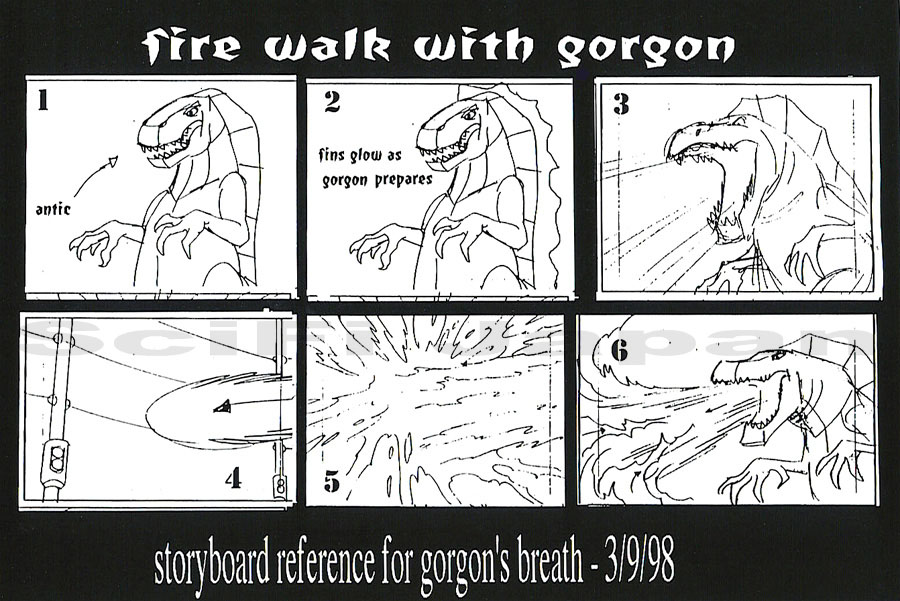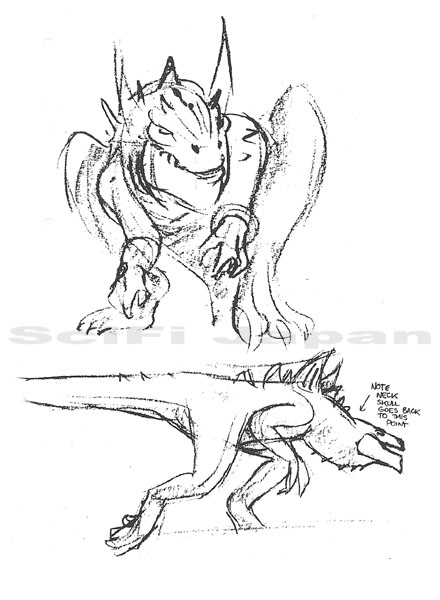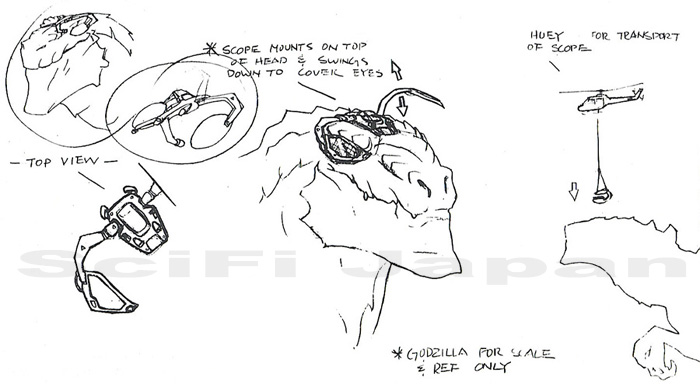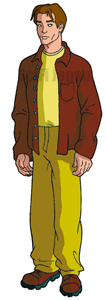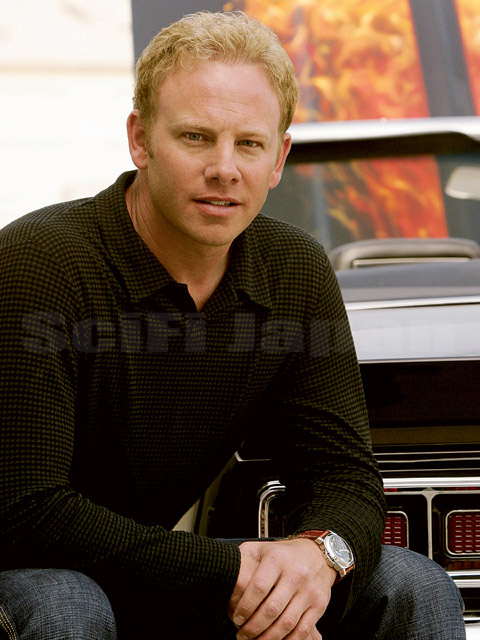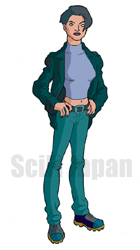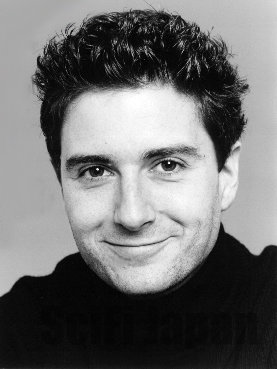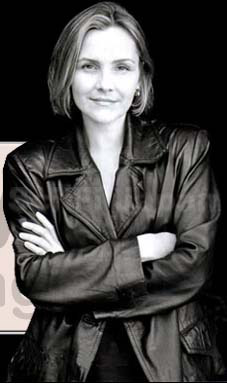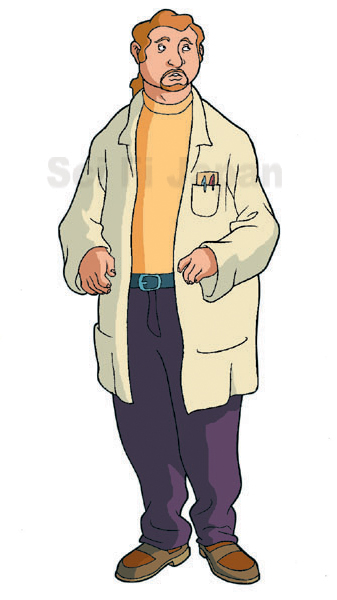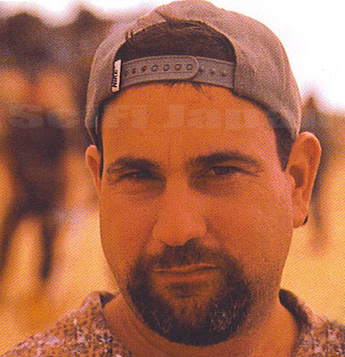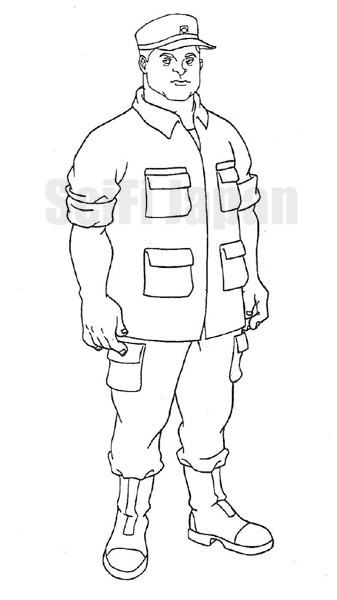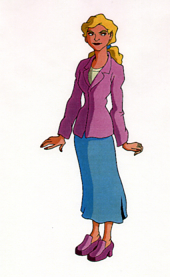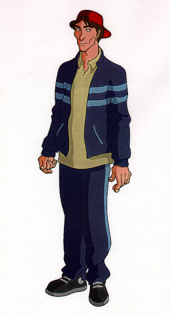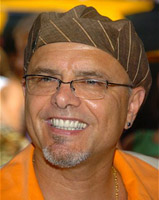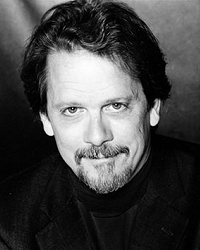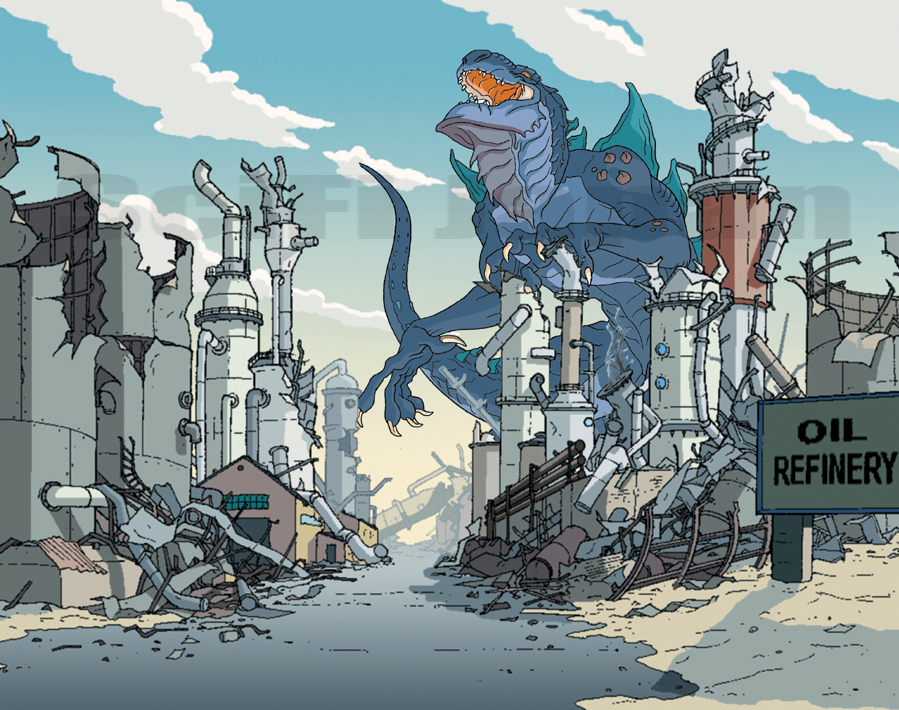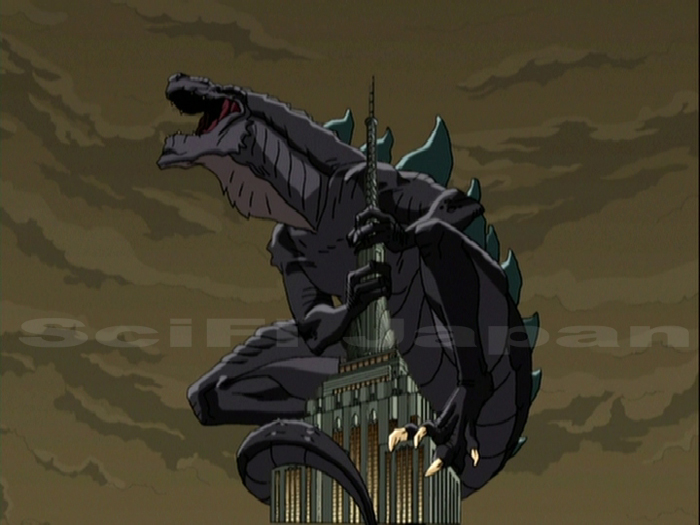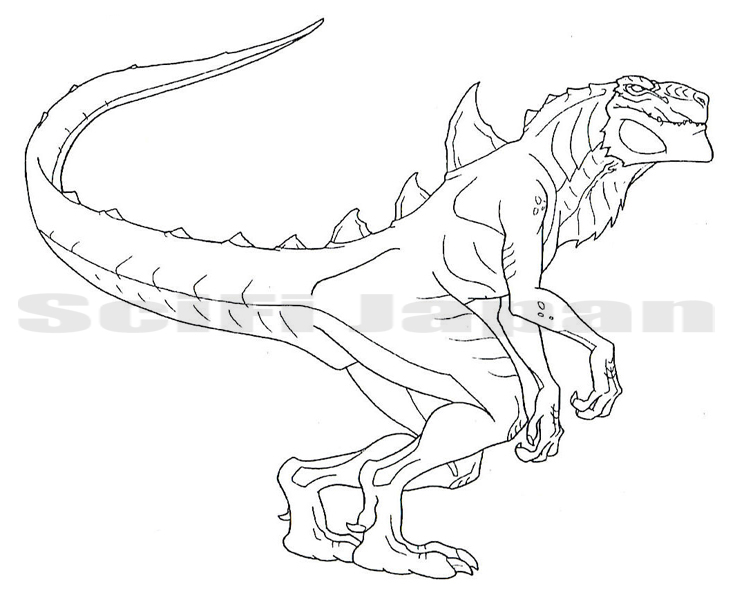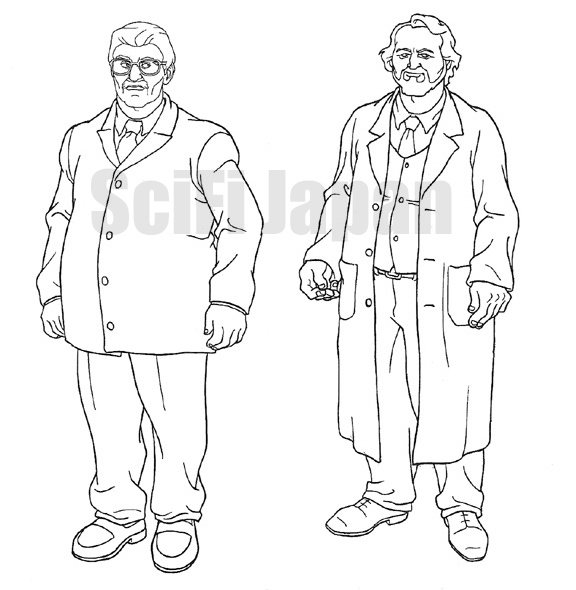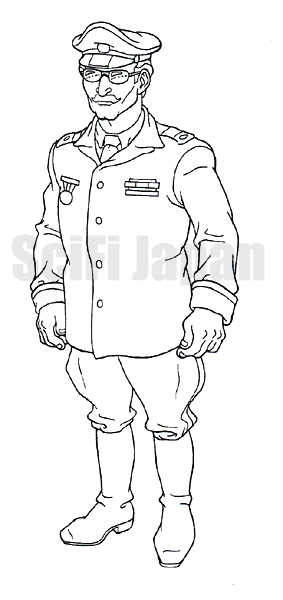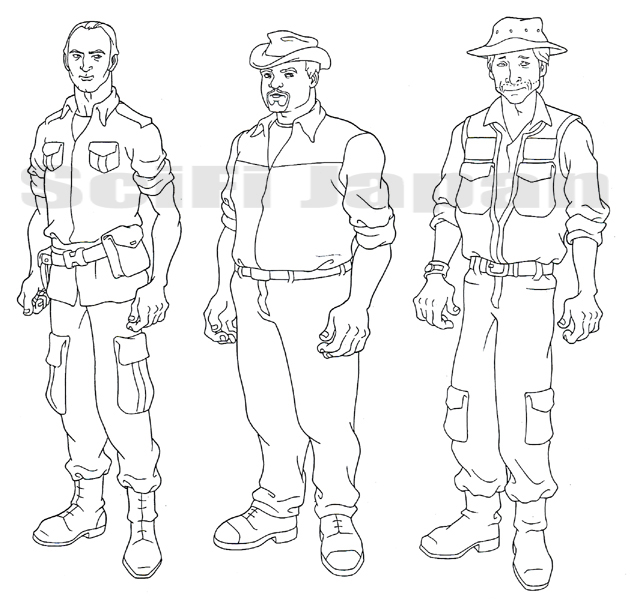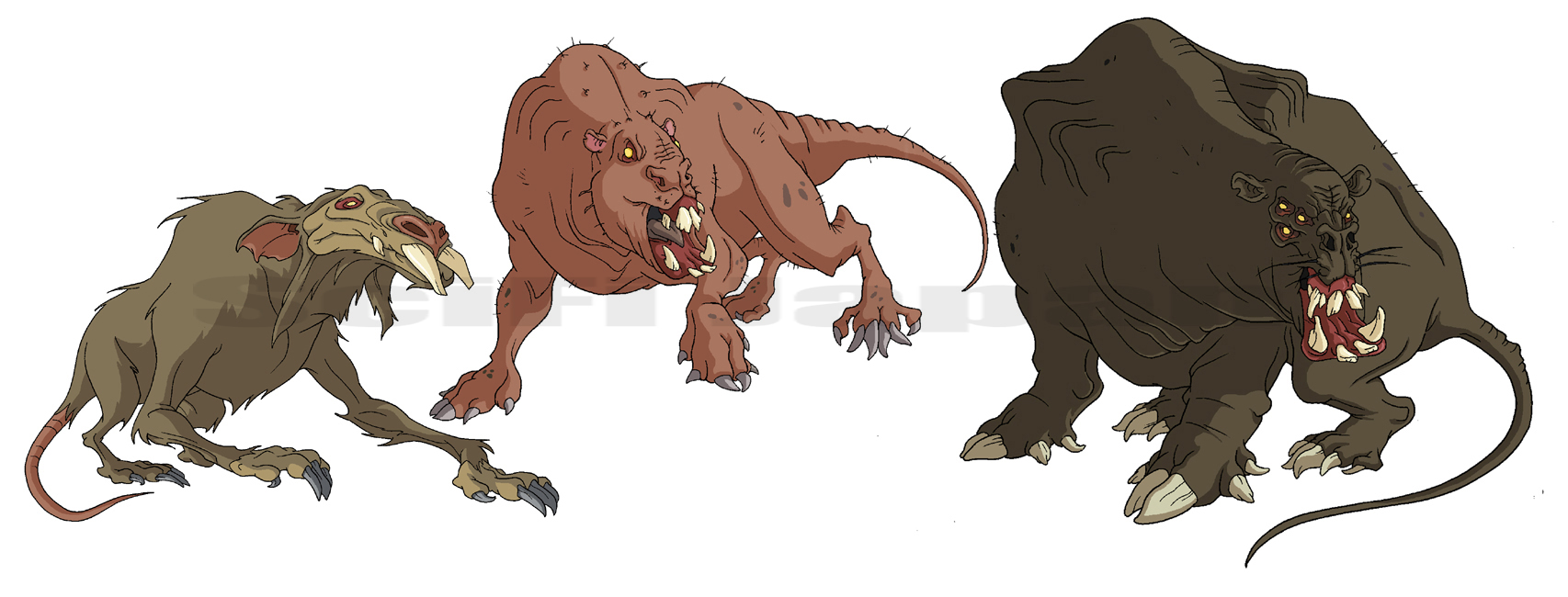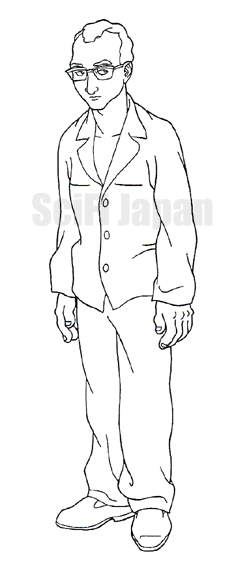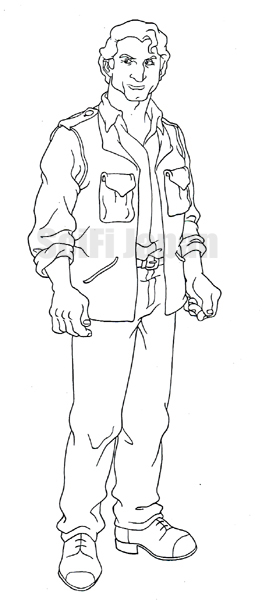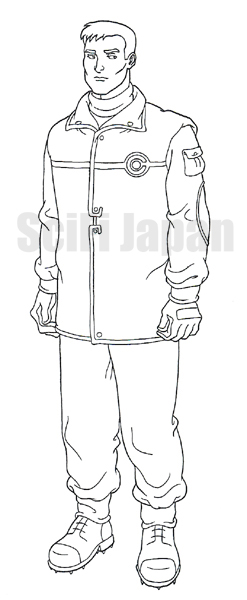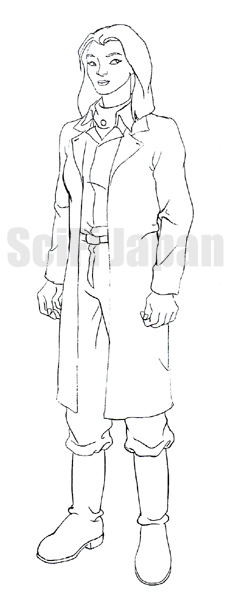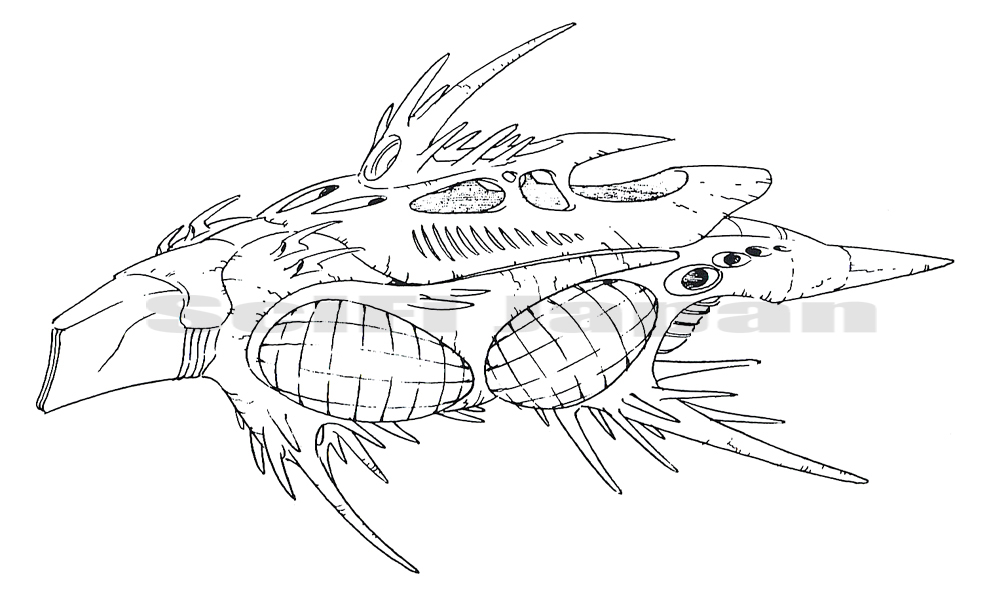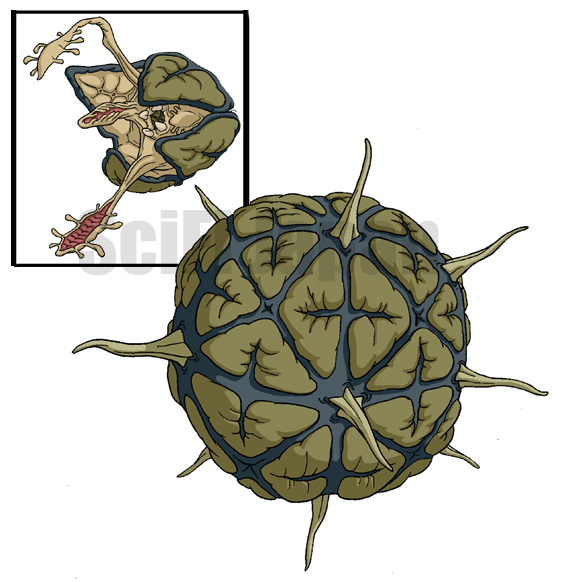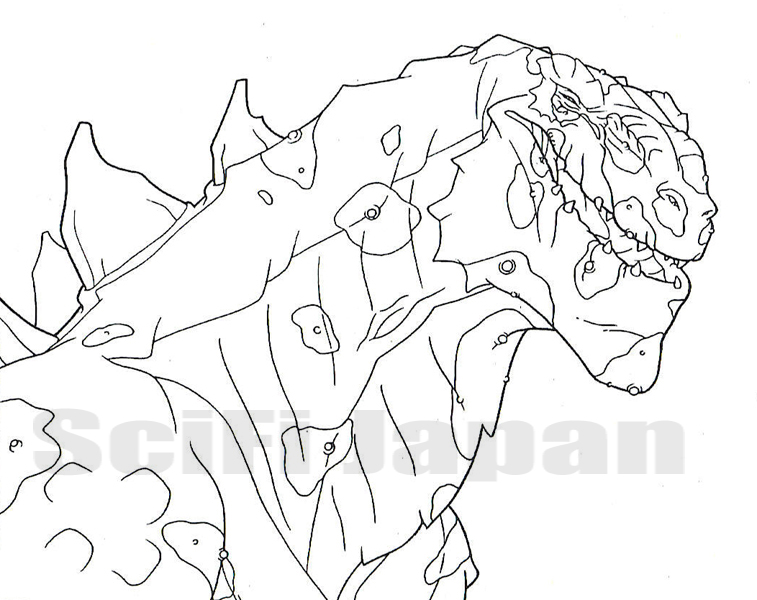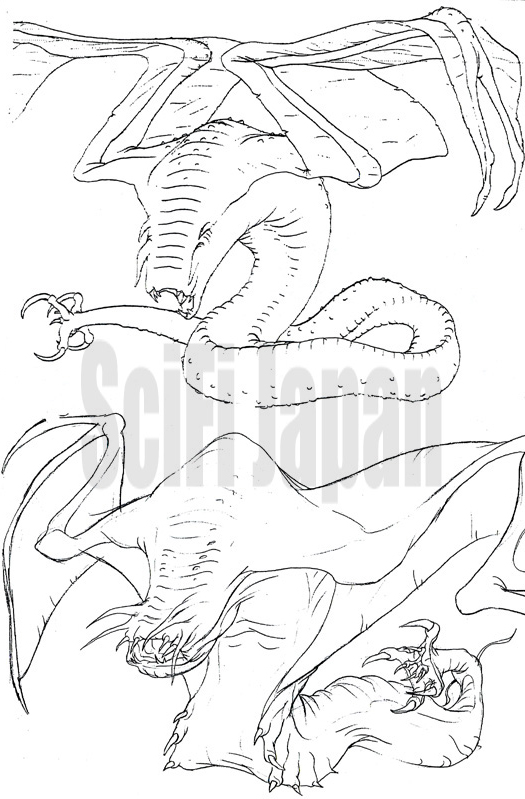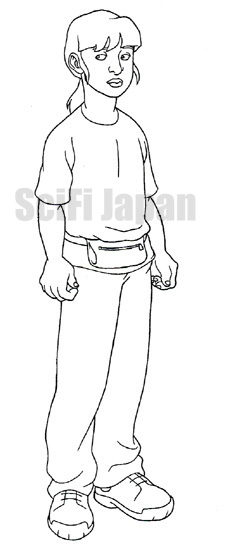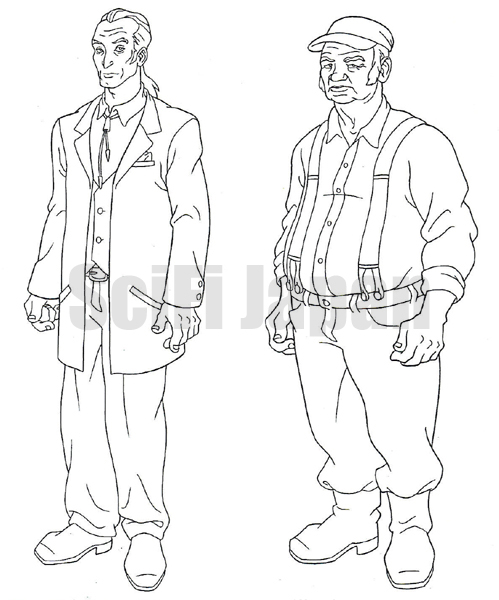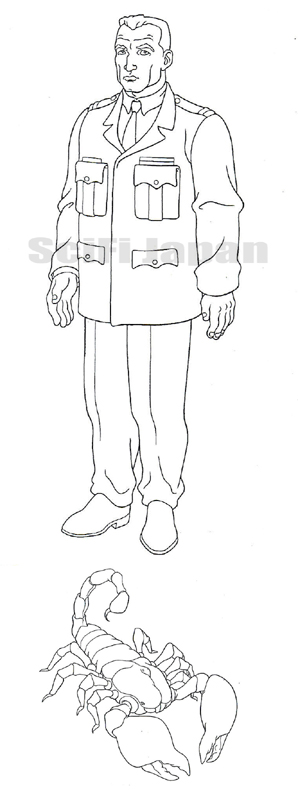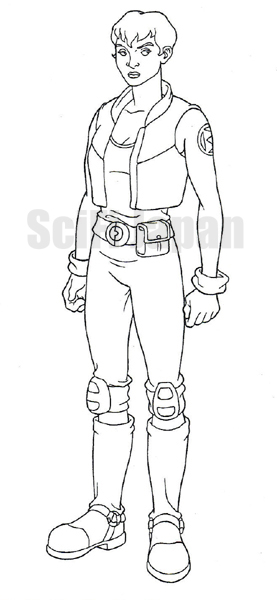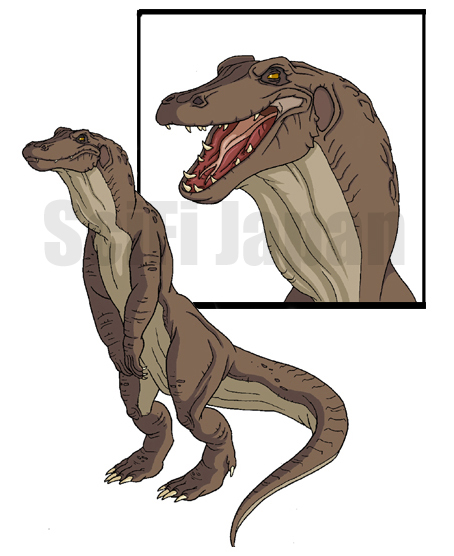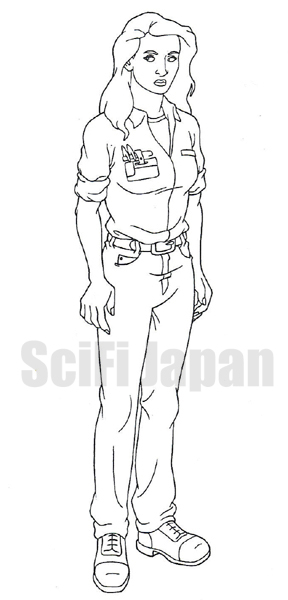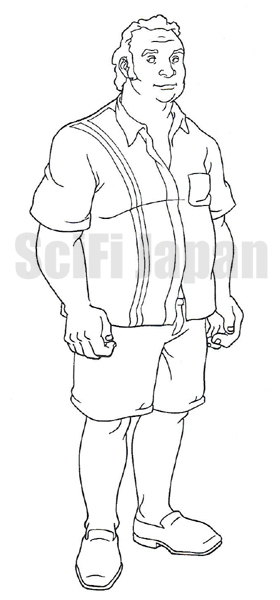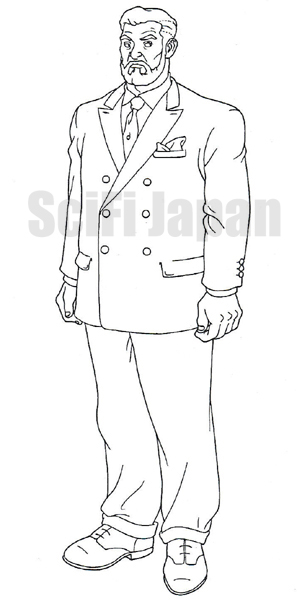A SciFi JAPAN EXCLUSIVE
- GODZILLA`S ANIMATED ADVENTURES
- The Cast and Characters of GODZILLA: THE SERIES
- GODZILLA: THE SERIES – THE DEFINITIVE EPISODE GUIDE
GODZILLA`S ANIMATED ADVENTURES
The Making of GODZILLA: THE SERIES
Author: Bob Johnson
Source: Sony Pictures Family Entertainment
Official Site: sony.com/tv/kids/godzilla
Special thanks to Keith Aiken, Fil Barlow, Jeff Kline, Audu Paden and John Russel
“The fearsome franchise continues this Fall with the debut of GODZILLA: THE SERIES. Just as Manhattan and the rest of America recover from the chaos and havoc the world’s most famous monster wreaked this Summer, a series of new catastrophes appear. Only our hero Nick Tatopoulos and his enormous new ally, Godzilla, can prevent further destruction. Riding the crest of the monstrous success of the feature film, GODZILLA: THE SERIES will build upon the huge following of the world’s favorite monster with ‘A whole new cast of monsters to strengthen collectibility of licensed product’. Debuts Fall 1998, slated to go daily Feb 1999. 40 episodes.”-from original press release.
When Sony/TriStar picked up the franchise rights to Godzilla in 1992, it immediately set out to adapt the creature for America and ultimately the worldwide audience. Taking such a classic and well-known icon and completely changing the look and personality of the character proved to be a boon, as well as a curse. Though the 1998 GODZILLA movie, produced by Dean Devlin and Roland Emmerich of Centropolis Entertainment, did respectable box office worldwide, it did not live up to the enormous expectations industry insiders had predicted. Enter Sony Pictures Family Entertainment (SPFE) and the FOX Broadcasting Group. By adapting the TriStar Godzilla into a weekly animated television show, Sony was able to take the new design and add the Japanese monster’s characteristics and turn it into one of the hottest shows on Saturday morning television.
Where did it all begin? How was it developed and just who was behind all of this? Let’s start from the beginning and see what it takes to put a show like this together. It is a lot harder than it seems and takes a lot of work from a lot of talented people.
 Early in the development of GODZILLA: THE SERIES the concept artists created dozens of monsters, many of which never made it on the show. For cataloging purposes, these unused designs were often named after familiar Toho monsters, such as with these creatures which were labelled Angilas, Biollante, Gabara, and Mogera (both organic and mechanical versions). © 1998 Toho Co., Ltd./Adelaide Productions, Inc.
Early in the development of GODZILLA: THE SERIES the concept artists created dozens of monsters, many of which never made it on the show. For cataloging purposes, these unused designs were often named after familiar Toho monsters, such as with these creatures which were labelled Angilas, Biollante, Gabara, and Mogera (both organic and mechanical versions). © 1998 Toho Co., Ltd./Adelaide Productions, Inc.In The Beginning: In the 1990s, Sony Entertainment started an animation division to adapt some of Columbia/TriStar’s motion pictures and other properties into animated series. This division successfully turned out cartoons based on such recognizable properties as JUMANJI, GHOSTBUSTERS (a.k.a. EXTREME GHOSTBUSTERS) MEN IN BLACK, STUART LITTLE, STARSHIP TROOPERS, and JACKIE CHAN. When it was learned that Sony had picked up the rights to Godzilla from Toho Co., Ltd. in Japan, it was a natural to adapt into a series. The plans to go ahead with the cartoon were finalized eight months before the movie actually came out. However, unlike some production companies that own networks or cable stations, Sony had to go out and sell the idea of a Godzilla series before production could actually begin.
 Promotional announcement for the animated series. Photo courtesy of Sony Pictures Family Ent. © 1998 Toho Co., Ltd./Adelaide Productions, Inc.
Promotional announcement for the animated series. Photo courtesy of Sony Pictures Family Ent. © 1998 Toho Co., Ltd./Adelaide Productions, Inc.Executive Producer Jeff Kline wrote an outline and bible for the show, working closely with Devlin and Emmerich as the movie was still in production. Initial monster designs were drawn up and the idea was shopped around to the networks until FOX agreed to buy forty episodes of the series for their Saturday morning “FOX Kids” lineup. The advance purchase was a great advantage for Sony, as forty is the number of episodes needed to later sell a series as a daily strip to syndication. This allowed Sony to budget costs and expenses over the forty episodes up front and not have to do half the episodes at one time and hope the other half would be approved later.
At this point though, Godzilla and his new appearance were closely guarded secrets. Although Jeff and his crew had access to the Godzilla designs and information about the movie, everyone working on the cartoon had to sign non-disclosure statements and were sworn to absolute secrecy. Early on in the development, some of the people working on the show were not even allowed to see the Godzilla design. According to Producer/Head Director Audu Paden, very basic shapes were used to approximate Godzilla in the early storyboards and designs. Later, after the OK was given for the design to be released to the crew, the actual Godzilla would be drawn in. At one point someone had even drawn an episode with a sock-puppet to represent Godzilla, complete with button eyes!
The day the movie was released was the day the crew got their first glimpse of the Godzilla design. Until then, Kline and Paden had worked closely and secretly with lead character designer Fil Barlow to design the look and adapt the movie Godzilla into animated form through a series of seven drawings. Each night these drawings had to be collected and locked away as they had certain features, jaw design, etc. that would give outsiders clues to the new Godzilla’s appearance.
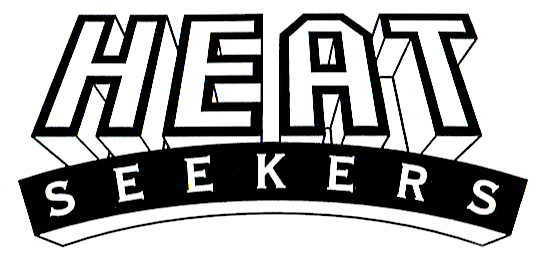 The false “HEAT SEEKERS” logo created by SPFE to counter early rumors that GODZILLA: THE SERIES was in development. © 1998 Toho Co., ltd. /Adelaide Productions, Inc.
The false “HEAT SEEKERS” logo created by SPFE to counter early rumors that GODZILLA: THE SERIES was in development. © 1998 Toho Co., ltd. /Adelaide Productions, Inc.Original outlines and designs all went under the false title “HEAT SEEKERS”, a title based on the name of the ship in the series. All Godzilla designs carried the moniker “Gorgon” and some even referred to the monster as “Thingy”. Audu Paden explained the extremes that went into hiding the fact that they were doing a Godzilla series. “Following up the name ‘HEAT SEEKERS’, we made up a whole set of phony characters and designs. Superhero humans with capes and flame flickering around their joints and a big sheep dog made out of pure fire, like something out of the Fantastic Four, named ‘Flamer’. We actually colored them up and made presentation posters and hung them outside my office.” When people would call and ask if SPFE was working on GODZILLA, the stock reply would be that they were doing that over in France. The ruse worked so well, that misinformation was soon leaked out to trade papers via a reporter that thought he had “the buzz” about a new series called HEAT SEEKERS! Little did he know that if he had the title correct, it would have been an even bigger scoop!
Rights to the series were negotiated with Toho at the same time the feature rights were being secured. Key to the negotiations was Sander Schwartz, who left Sony in 2001 and is now President of Warner Bros. Animation. On working with Toho, Jeff Kline commented, “Toho continued to have approvals. We sent them every script and every design and they actually were fantastic about turning things around very quickly and giving us some leeway. There were some things that they originally had a pretty specific vision about, but they let us have a little bit of leeway on some of the stuff. They were very easy to work with and we were actually very pleased.”
Certain Godzilla foes, such as Mothra, were unavailable as they were tied up in other rights situations. Another factor was the tight production schedule and the fact that it would be almost impossible to adapt one of the Toho monsters into animated form, send it to Toho for approval, and get it back in time to include in an episode. This facilitated the necessity to come up with over sixty new monsters for the series; the monster design work falling in the hands of Fil Barlow and his crew. "I had pitched two other styles for the characters but Dean Devlin and Roland Emmerich rejected these earlier attempts," Barlow recalled. "Working all night, I designed the entire cast in the style used for the show."
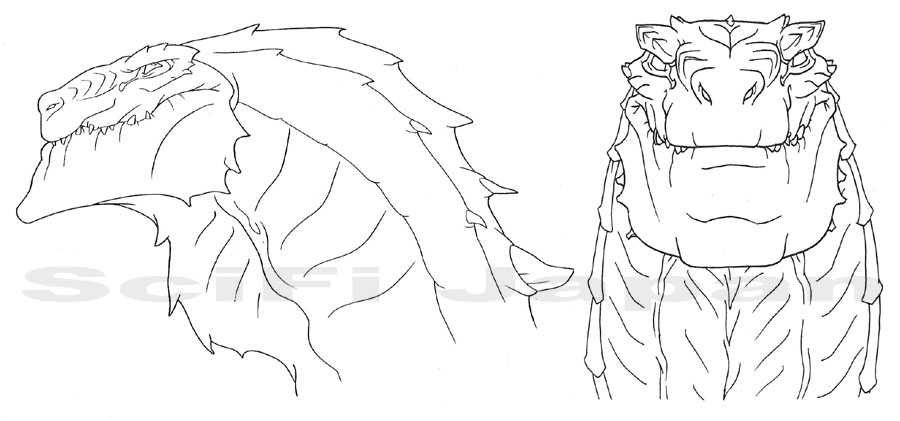 Godzilla`s head had only slight changes from Patrick Tatopoulos’ designs for the feature film. © 1998 Toho Co., Ltd./Adelaide Productions, Inc.
Godzilla`s head had only slight changes from Patrick Tatopoulos’ designs for the feature film. © 1998 Toho Co., Ltd./Adelaide Productions, Inc.Patrick Tatopoulos, the man behind the new Godzilla design introduced in the movie, had quite a bit of input at the beginning regarding the look and adaptation of Godzilla to animation. After that it was up to Barlow and other designers to come up with the monsters and mutations that would go up against Godzilla in each episode. "Once I`d set the style on the first episode I handed the entire responsibilities of the [human] characters over to artist Tom Perkins so that I could focus all of my attention on the monsters," explained Barlow.
While developing the series, there were a lot of conversations with Devlin and Emmerich involving changes that could or could not be made between the movie and the series… how Godzilla could be handled, adapting the characters, what characters could be added, etc. Once the series began though, the filmmakers were more than pleased and put their trust in the series’ staff to take it from there.
The new version of Godzilla was a cross between the Centropolis vision and the original Toho Godzilla. The cartoon Godzilla is more aggressive towards adversaries, yet more passive towards humans, in particular Nick Tatopoulos. The radioactive flame breath returned along with the glowing fins and more of the original roars. The decision to bring back many of Godzilla’s classic traits happened very early on in the process. Many of the people working on the show grew up with Godzilla and were fans of the character. Audu Paden even confesses to having drawings of designs he did at age 7 for a Godzilla costume he wanted to make.
Another childhood fan of Godzilla was director Tim Eldred, whose work on GODZILLA: THE SERIES gave him the opportunity to revisit and renew his appreciation for the character. “As a kid I loved seeing Godzilla movies on TV. They came around very rarely, so whenever one appeared it was like Christmas morning,” he said. “Later, when I got older and special effects films became more sophisticated, Godzilla films stopped being about raw entertainment and began to pale. They hadn`t changed, of course, but I had. Entering the filmmaking business required me to have a critical adult eye that made it impossible to just be entertained by a Godzilla movie. It wasn't until our executive producer, Richard Raynis, put a fine point on it that I found the words to describe the gulf."
"Richard`s directive to me as I designed the main title sequence and directed my episodes was to keep the camera at human level as often as possible. In other words, don`t automatically fly through the ceiling every time a huge monster appears because it would immediately cancel out the realism. Instantly, I knew why the older films weren`t holding up any more; the cameras were almost always placed at monster level while filming the monsters and human level while filming the humans. Had the filmmakers picked one or the other and stuck with it throughout, it would have been a very different experience. As flawed as the Sony GODZILLA may have been in its story, I had to admit the images were riveting...and it was precisely because the cinematography followed this philosophy. I was glad later to see Toho pick up on this and apply it to the original Godzilla. It helped immensely to restore my respect and made it possible for me to be entertained again.”
One major challenge for the GODZILLA: THE SERIES crew was to have Godzilla be more of a hero, yet not in the same way as the Hanna-Barbera series from the 1970s. Although he has a bond with Nick Tatopoulos, the idea is that Godzilla is not a monster that guards or protects humans like an overgrown pet, but more of a territorial animal that is protecting its turf from whatever mutation or alien happens into it. In this case, Godzilla’s territory is the Earth itself.
Earlier ideas that were tossed around were quite different. Originally it was thought that there would be a more defined and stronger intercommunication between Nick and Godzilla, so some things were designed in the development phase that never made it into the show. These included devices that made it possible to ride on Godzilla’s back and steer him using special eyeglasses or contact lens appliances. The eyeglasses did eventually turn up with a new purpose in an episode called, “Vision” in which Godzilla confronts giant mutated Hummingbirds in San Francisco. The flying monsters move so fast that they can not be seen, so Godzilla is fitted with special goggles to track them.
In writing the episodes two teams of story editors were used, all overseen by Jeff Kline and Audu Paden. Robert Skir and Marty Isenberg comprised the editing team for half the series and Marsha Griffin and Glen Wiseman took care of the other half. Since most of the writers had not seen any of the episodes they would not know specific phrases, expressions or styles for each character. It was therefore the responsibility of the story editors to oversee the writers and to rework all scripts so that they would be responsible for continuity and make the characters be consistent in each episode. This also helped in allowing character relationships and story details to progress and develop over the course of the series.
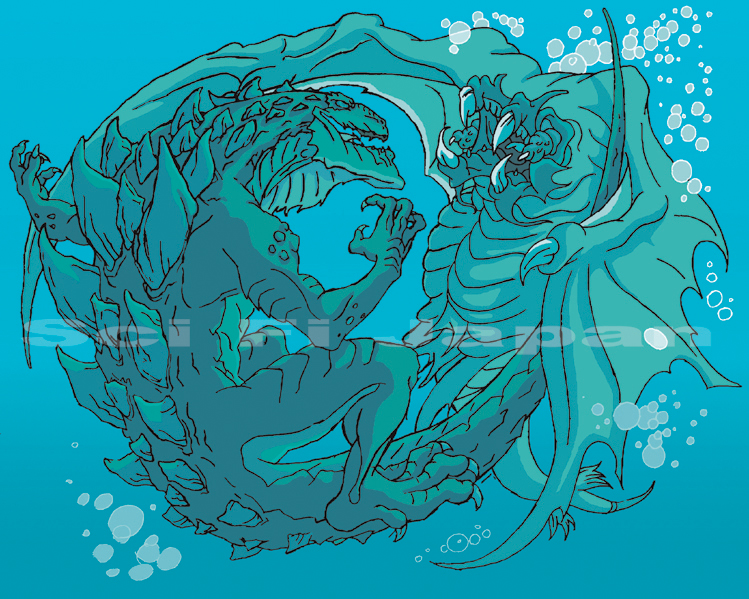 Godzilla battles the Flying Gigan in a promotional illustration for the series. Photo courtesy of Sony Pictures Family Ent. ©1998 Toho Co., Ltd./Adelaide Productions, Inc.
Godzilla battles the Flying Gigan in a promotional illustration for the series. Photo courtesy of Sony Pictures Family Ent. ©1998 Toho Co., Ltd./Adelaide Productions, Inc.Many of the writers for GODZILLA were professionals that had worked for SPFE before on JUMANJI and MEN IN BLACK. The series also took on the feel of a comic book type story week after week, so some writers from the comic industry were also brought in for a handful of episodes. The comic book writers were used to working fast and within deadlines and also were experienced in telling a story within a short amount of time. The writing staff was a combination of a core group from previous shows, the comic book writers and some newcomers from either primetime television, news, or other areas that provided good writers that would want to work on their craft.
In an interview on Centropolis’ Eon Magazine website, writer Steven Melching spoke about his experiences writing for GODZILLA: THE SERIES; “Of the three episodes I wrote, I was given storylines for two of them and the third one was a pitch. The first one I did was ‘Cat and Mouse.’ That was given to me by Bob [Skir] and his partner Marty [Isenberg], and we fleshed that out together. The second one I wrote was the second part of a trilogy called ‘Monster Wars’ which brings back many of the monsters seen in the early episodes of the series in one big gigantic apocalyptic type story. Since that was a three-part storyline devised by Bob and Marty they gave me a page-and-a-half outline of what they wanted to happen in the second episode. The third one was a pitch that was originally going to involve them finding another Godzilla, the same kind of mutation from the same place. I know they’re hermaphrodites but this one was sort of a female and it was mating and going into heat. And Godzilla could sense that and it went off and the team followed Godzilla to the island and found the second Godzilla. But they didn’t want to do another Godzilla so it just became another giant lizard.”
One thing that had to be kept in mind was that this was a show for FOX Kids and rated Y7 [“suitable for children over the age of 7”]. Although the views on violence are a little less restrictive at FOX than they are at the three older networks, Standards and Practices limitations were still in place. Bob Higgins, Sony Vice President of Creative Affairs for Children’s Programming, explained, “The basic rule of thumb is that nothing is killed: they’re ‘destroyed’. You want to stay away from that… if something is a sentient being than you’re killing it. If you try to keep it without a lot of character it’s easier to show Godzilla kill it. Once you work in kid’s programming for a while, you know what you can and can’t get away with and the issue never really even comes up; there’s always an issue of responsibility with children’s programming.”
The introduction of Monster Island at the end of “Monster Wars” makes things a little easier. If a monster is dumb or just a mass of destructive matter, it gets “destroyed”, however, if it is smart, it gets to go and live on Monster Island!
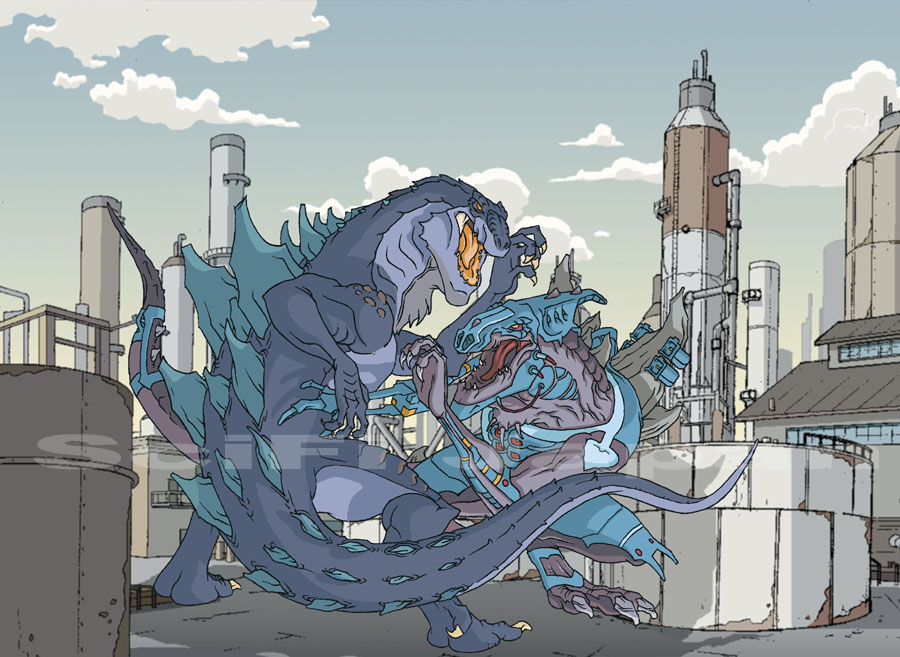 Son battles father in MONSTER WAR, the highlight of the first season of GODZILLA: THE SERIES. The fights had action, but needed to restrict violence to fit within childran`s television standards. Photo courtesy of Sony Pictures Family Ent. © 1998 Toho Co., Ltd./Adelaide Productions, Inc.
Son battles father in MONSTER WAR, the highlight of the first season of GODZILLA: THE SERIES. The fights had action, but needed to restrict violence to fit within childran`s television standards. Photo courtesy of Sony Pictures Family Ent. © 1998 Toho Co., Ltd./Adelaide Productions, Inc.The Sights and Sounds of the Series: In early sketches of the characters, an attempt was made to have them look like their movie counterparts. These would later evolve into designs that emphasized the character and personality, rather than a literal translation of any of the actors. Another factor in this is the decision not to negotiate likeness rights with the actors. This would have required SPFE to get the actors’ approval of their images for use in the series, and racked up the additional cost of any royalties or fees that would be part of that approval.
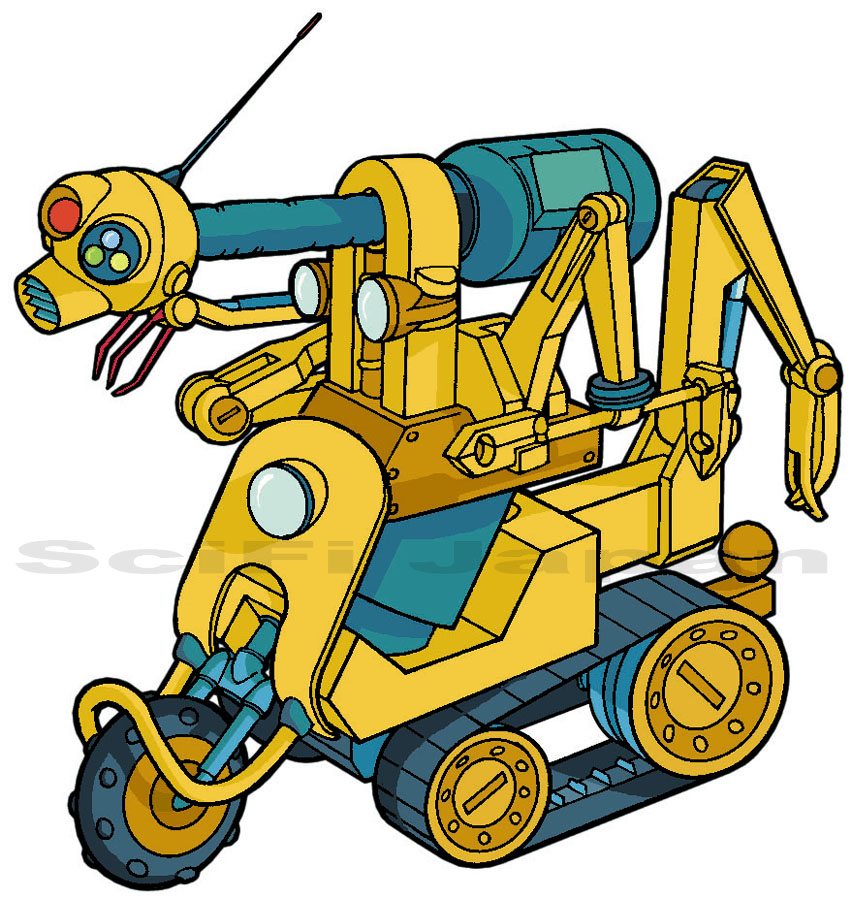 The ever-loyal, but always doomed N.I.G.E.L. Photo courtesy of Sony Pictures Family Ent. © 1998 Toho Co., Ltd./Adelaide Productions, Inc.
The ever-loyal, but always doomed N.I.G.E.L. Photo courtesy of Sony Pictures Family Ent. © 1998 Toho Co., Ltd./Adelaide Productions, Inc.At the very beginning, the staff got together to throw around ideas and decided to add some new characters to the cast. One was Randy Hernandez, who was added to appeal to the teenagers and younger viewers by giving them someone to identify with. On the French-Vietnamese secret agent Monique Dupre, Kline stated, “We felt it would be nice if we could have a female kick-ass character because the women in the movie weren’t quite that.”
Another character added to the show was the robot, N.I.G.E.L. The robot was added as a way for the H.E.A.T. crew to take their technology with them into the field and to explain some of the more scientific premises of the stories, but N.I.G.E.L’s role in GODZILLA: THE SERIES can best be compared to Kenny in SOUTH PARK. The robot is destroyed in almost every episode of the series. The script for the first episode had him getting killed as part of the story. Everyone working on the show liked this and it caught on as an in-joke in almost every episode and as Jeff puts it, “It definitely became a homage to Kenny, no doubt about it.” The few shows in which he does survive are more than compensated for in the episode “Ring of Fire” in which he has three untimely, fatal accidents.
Originally, the network had wanted an animal in the cast. FOX’s Haim Saban had actually wanted to have the Taco Bell Chihuahua in the series, due to the popularity of commercials pairing the dog with Godzilla. However, it was thought that trying to show the gargantuan Godzilla and the tiny dog in one shot would be an animator’s nightmare and the idea was soon dropped.
Certain characters from the movie only appear in a limited amount of episodes or not at all. For example, Animal’s wife Lucy is mentioned in some episodes but never actually shown. Mayor Ebert of New York did appear in five or six episodes, as Jeff Kline commented, “That was a character that we had originally intended to use more as a foil for Nick and his organization. Then, after a couple of scripts with the mayor in it we all realized that we really didn’t care all that much about the mayor (laughs).” With the addition of characters like Randy, Monique, and N.I.G.E.L., there was little need for some of the minor characters from the movie that would just serve to clutter up the cast and take screen time away from the main ensemble.
 Members of the H.E.A.T. Team. Photo courtesy of Sony Pictures Family Ent. © 1998 Toho Co., Ltd./Adelaide Productions, Inc.
Members of the H.E.A.T. Team. Photo courtesy of Sony Pictures Family Ent. © 1998 Toho Co., Ltd./Adelaide Productions, Inc.Once the cast and basic premise were set, Jeff Kline put together a fifteen to twenty page treatment for the show. This became a mini-bible for the show, outlining the characters, how they interact, the type of stories that would be written, and what the tone of the series would be. At that point, story editors Marty Isenberg and Bob Skir wrote a full series bible which would be used by writers, artists and actors working on the show. Voices for the characters were recast from the movie, with a few notable exceptions. Malcom Danare, who played Dr. Mendel Craven in the movie, provided the character’s voice for GODZILLA: THE SERIES. Kevin Dunn reprises his role as Major Anthony Hicks, while Michael Learner returns in a few episodes as the Mayor of New York he also played in the movie.
 Godzilla in combat with his very first monster foe; Crustaceous Rex. Photo courtesy of Sony Pictures Family Ent. ©1998 Toho Co., Ltd./Adelaide Productions, Inc.
Godzilla in combat with his very first monster foe; Crustaceous Rex. Photo courtesy of Sony Pictures Family Ent. ©1998 Toho Co., Ltd./Adelaide Productions, Inc.Jason Priestly of BEVERLY HILLS 90210 fame was the original choice for the voice of Nick Tatopoulos. He even recorded the first five episodes, but his schedule did not allow for him to do the entire series. Priestly was replaced by his 90210 co-star Ian Ziering and the first five episodes were redone before they were first aired. Ziering was originally cast as the voice of incidental character, Cameron Winter. The other actors hired to provide voices were able to retain the characteristics of their screen counterparts but also add certain attributes that the original characters lacked but were necessary to keep them interesting over the course of a forty episode series.
Some well-known stars played some incidental characters. Robert Forster, an Oscar nominated actor for the Quentin Tarantino movie JACKIE BROWN was the voice of Elsie Chapman’s father in “Wedding Bells Blew”. EXORCIST star Linda Blair became animated as the monster rights activist Alexandra Springer in “S.C.A.L.E.”. Doug Savant, who played the bungling army character in the Godzilla movie returns in “Area 51”, though not in the same role. Estelle Harris, best known as George Costanza’s mother on SEINFELD, was in “What Dreams May Come”, and HELLBOY star Ron Perlman provided his voice for “Leviathan”.
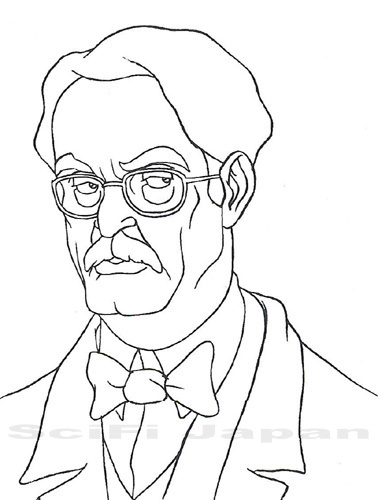 Hugh Trevor, voiced by Roddy McDowall. Photo courtesy of Sony Pictures Family Ent. ©1998 Toho Co., Ltd./Adelaide Productions, Inc.
Hugh Trevor, voiced by Roddy McDowall. Photo courtesy of Sony Pictures Family Ent. ©1998 Toho Co., Ltd./Adelaide Productions, Inc.However, the most notable guest actor was film veteran Roddy McDowall (PLANET OF THE APES, CLEOPATRA). McDowall played Dr. Hugh Trevor in “Deadloch”, which turned out be his final role, a mere three weeks before his untimely death from cancer. Audu Paden had nothing but nice things to say regarding Roddy McDowall, who he remembered as a consummate professional who did almost every scene in one take. Paden and McDowall had worked together before on ANIMANIACS and PINKY AND THE BRAIN, with McDowall providing the voice of Snowball, which was the Brain’s nemesis. According to Paden, “He was just so good in that role that he was a natural first pick for the role of a prissy Scottish scientist, which he played in the twelfth episode of GODZILLA.”
Jeff Kline explained the reason they were able to get well known actors to provide voices for cartoons; “It is not a desire on our part to get celebrities. One of the nice surprises in working in kid’s TV, you can get almost anybody to come in and do a voice. For actors, if you are the lead in a sitcom or a well-known actor there is a lot of pressure on you to carry a scene. You have to look perfect and be perfect. But with these roles, it is like being in a radio play. You’re in a room for three or four hours with a bunch of other people, you can wear whatever you want. The fact that you are doing a guest spot for us is less important than the guy sitting to your left who can do seventeen different alien voices is. So, I think it is actually a kick for them. It is a hard skill to master, acting with just your voice. People are used to acting with their hands and bodies and faces. This is just their voice.”
The Making of Godzilla: Jeff Kline would approve the premise for each episode, which he would then assign to a particular writer. At this point, Audu Paden would be exposed to the story and would start considering casting, character designs, backgrounds and settings, with a mind on what could be reused and how to get the episode done in a quick and economical way while still maintaining the integrity of the series.
Of course, a new monster had to be designed for each episode. In this case, Audu Paden would sit late into the night with designer Fil Barlow, coming up with designs and sketches until the right appearance would materialize. These were then shown to Executive Producer Richard Raynis, who is a talented artist in his own right. He would often add an extra touch here and there to improve the designs or make a drastic change that would take it off in a totally different direction.
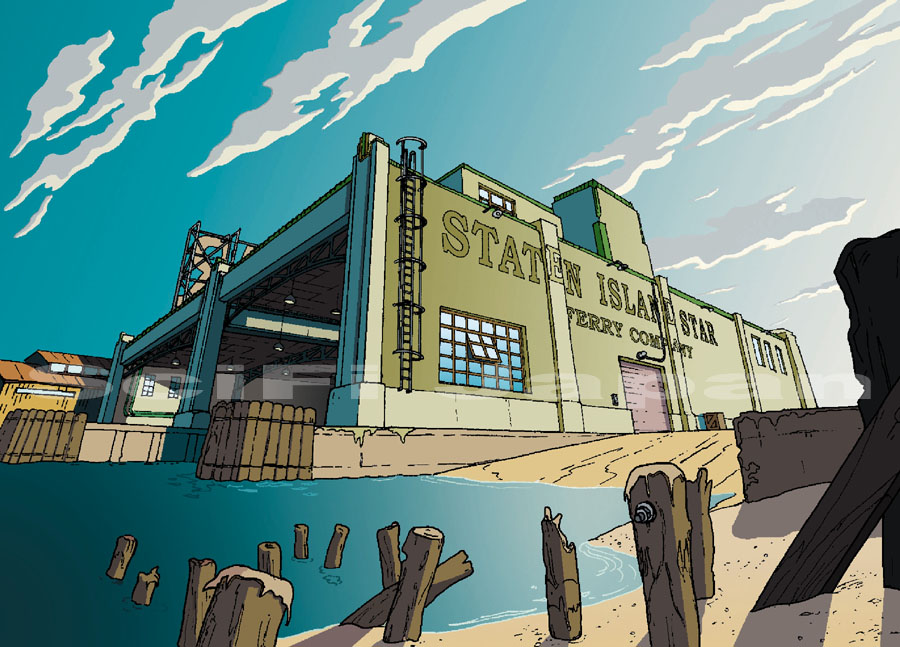 The main Headquarters of H.E.A.T. Photo courtesy of Sony Pictures Family Ent. ©1998 Toho Co., Ltd./Adelaide Productions, Inc.
The main Headquarters of H.E.A.T. Photo courtesy of Sony Pictures Family Ent. ©1998 Toho Co., Ltd./Adelaide Productions, Inc.The next step would be a production meeting in which the staff would sit down and decide where the episode would take place, what views would be needed (such as aerial shots), and also the specific devices and equipment that would be unique to that particular episode. It would then be decided if any existing elements could be used or if new designs would be needed.
Guest characters and their appearance and characteristics would be discussed. Many times magazines were used as reference material to design facial expressions, body shapes and other factors. Size comparisons would also be done so that storyboard artists working on that particular episode would make the incidental characters the same height from scene to scene.
All these designs and ideas would then be given to the storyboard artists. On some occasions, scenes would be physically acted out for them by the staff. The board artists would then have two weeks to do rough storyboards; this rough would then be gone over by the episode’s director and Audu Paden. Notes would be made and it would also be discussed how to improve what has been done so far. The idea was to try to make each element a little bit better each step of the way.
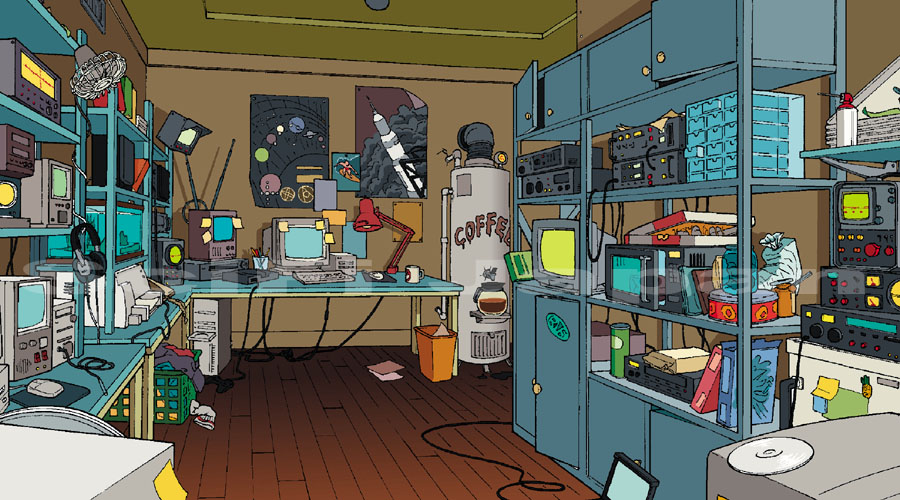 The 'hi-tech lab' of Nick Tatopoulos. Photo courtesy of Sony Pictures Family Ent. ©1998 Toho Co., Ltd./Adelaide Productions, Inc.
The 'hi-tech lab' of Nick Tatopoulos. Photo courtesy of Sony Pictures Family Ent. ©1998 Toho Co., Ltd./Adelaide Productions, Inc.While this was being done, the actors would record their lines in the studio. Some shows record dialog separately as each actor comes in and records their lines solo, but for GODZILLA: THE SERIES the actors were usually all in the same room at the same time, making it easier to interact with each other.
The voice sessions took place in North Hollywood at Salami Studios, usually twice a week in four hour blocks from 6:00pm – 10:00pm. Once the recording is done the lines are then edited and structured in the order they will be used in the episode. Mistakes will also be edited and pronunciations cleaned up or sweetened.
Once the final storyboards are done and the voices are recorded, timing must be defined. Each board would be scanned into a computer and a time would be assigned to each drawing and scene. This would then be turned into an animatic, a version of the episode in which the storyboards move and present the episode the way it will look once the cel animation is done. This would be transferred to VHS tape and viewed by one of the Executive Producers, Richard Raynis or Jeff Kline, Head Director Audu Paden and the episode’s director. They would take two to six hours dissecting each episode and deciding if the story is being told in the best way possible…close ups may become wide shots, single shots may become shots of multiple characters, and so on. If needed, the boards would then be redone. The second pass would be cleaned up with revised drawings, and the final version would be edited down to a running time of twenty-two minutes and forty seconds.
Over the Seas and Far Away: The completed animatic with voice tracks are then sent to Korea, where the cel animation is done. In addition to the animatics, very precise storyboards are included, as well as designs for each incidental character, vehicle, device, background and anything else that is specific to that episode. Full color renderings are sent, as the entire package was meant to be a strict blueprint of how the episode was to come out.
“Coloring is actually a very intricate process,” states Paden. “You need to coordinate the characters with the backgrounds. You need to choose from a palette that, in our case was pretty broad, over four hundred colors, which represented colors of paint that they had in big bins in the Korean studios.” Multiple colors had to be chosen for each element. For example a character’s shirt may be red, but a darker shade of red would also have to be chosen for the shadows on that shirt.
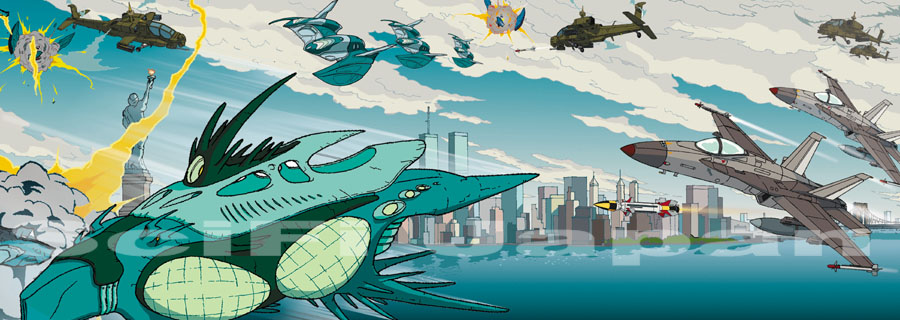 Battle scene from Monster Wars shows the detail achieved in certain scenes. Photo courtesy of Sony Pictures Family Ent. ©1998 Toho Co.,Ltd./Adelaide Productions, Inc.
Battle scene from Monster Wars shows the detail achieved in certain scenes. Photo courtesy of Sony Pictures Family Ent. ©1998 Toho Co.,Ltd./Adelaide Productions, Inc.The backgrounds for GODZILLA were much more involved than with most recent animated shows on television. Instead of painting a background on a white board as most cartoons do, the backgrounds for GODZILLA were actually painted on cels, allowing for color gradations and multiple layers for each scene by laying cel upon cel. Also, by painting on the back of cels, the colors would stand out and be more vivid. Paint on paper tends to get absorbed; paint on cels does not.
Audu Paden explained the process they had to go through for each background. “Backgrounds could be anywhere from two to ten levels of cels deep. We would basically paint one element. There would be an overlay, with a window through to a lower level where we would actually have an airbrushed gradation. All gradations had to be airbrushed on separate levels that had windows on the cels above that would allow you to see through. A very precise and planned process that gave the series a distinct look, like GHOSTBUSTERS and MEN IN BLACK. It is sort of a studio style for Sony.”
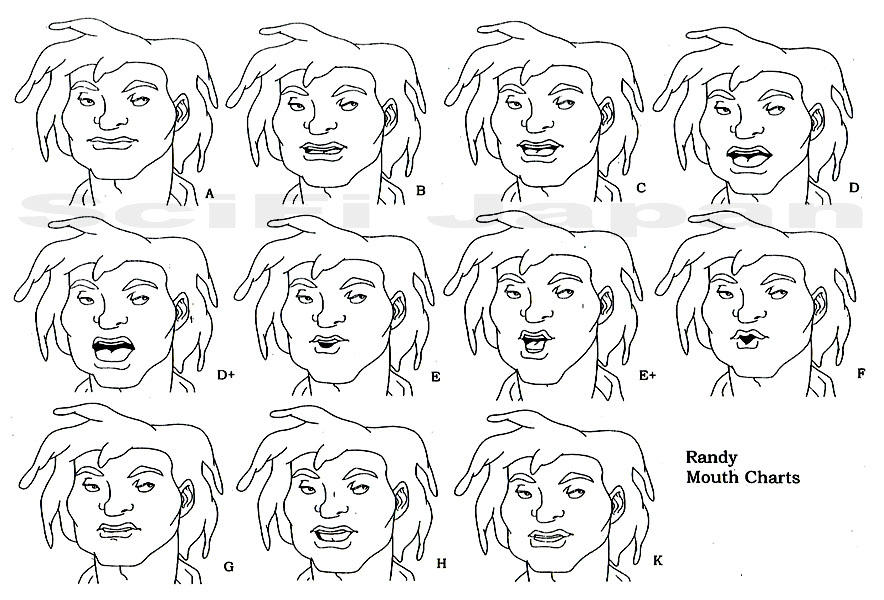 An example of a typical character mouth chart used by the animators to properly match lips movements to the audio track. ©1998 Toho Co., Ltd. /Adelaide Productions, Inc.
An example of a typical character mouth chart used by the animators to properly match lips movements to the audio track. ©1998 Toho Co., Ltd. /Adelaide Productions, Inc. Also included would be a series of mouth charts for each character, defining seven different mouth movements that can be used for any sound within a word or sentence. Exposure sheets show where each mouth position goes and how long or how many frames each one lasts. Exposure sheets also define action right down to “this character blinks as this character begins talking.” They are very precise and can be hundreds of pages long. This timing sheet is combined with the animatic and voicetrack to map out all details of each episode for the animators.
Sony sends their own directors to Korea to oversee the animation. Directors and animators in the Korean studios do not speak English. There are four studios in Seoul that work on Sony animated series, and the director has to coordinate all of them. At first, directors would rotate shifts in Korea, but one director named Toshi Hiruma had a great knack for it. He is now the main point man for Sony in Korea.
It took between ten to fifteen weeks, with twelve weeks being the average time, for the animation to come back from Korea. At that point, the newly arrived rolls of film would be transferred onto an AVID editor to be synched up with the dialog to check for mistakes. Problems could range from dust on the cel, to a character`s head missing, to backgrounds being completely wrong (for example, a scene taking place in New York might have a background depicting outer space). There may also be reflections on the cels or mistakes in color.
With the AVID non-linear editor some of the smaller mistakes could be fixed in-house, such as a mouth could be taken from one scene and overlaid onto another. More blatant mistakes would have to be sent back for retakes. Once everything is corrected, the show goes through final editing and is readied for broadcast.
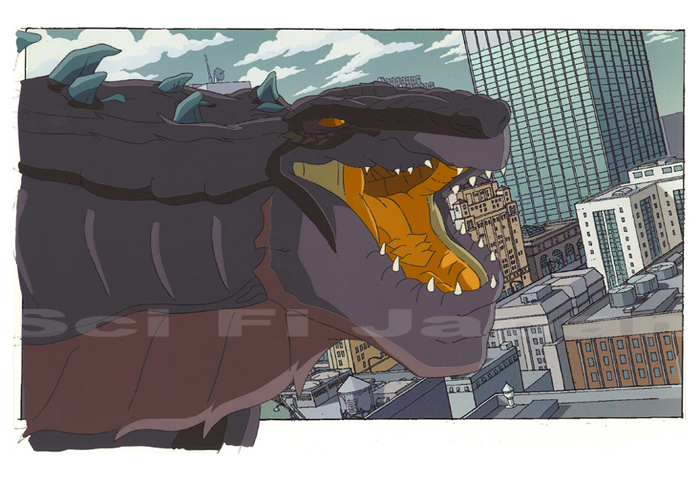 An original animation cel from GODZILLA: THE SERIES. © 1998 Toho Co., Ltd./Adelaide Productions, Inc.
An original animation cel from GODZILLA: THE SERIES. © 1998 Toho Co., Ltd./Adelaide Productions, Inc.Godzilla premieres: Since GODZILLA: THE SERIES was started almost a year before the movie came out in theaters, when the movie did come out, the staff was able to watch as the box office numbers came in. Would the movie be a hit? Would it affect the series in any way? The FOX network was committed to the series, regardless of how the movie did in theaters. Ideally, the movie would come out and play through the summer, and the series would premiere in the Fall with interest still high in the subject matter. By Christmas, the movie would be released on video and that would provide the spark for the second half of the season for the cartoon.
The series takes off from the end of the movie. In fact, the end of the movie is animated in digest form up to the point where Godzilla gets caught in the suspension wires of the Brooklyn Bridge and killed by missiles. At that point, Nick pleads with Hicks to go back and check for remaining eggs beneath Madison Square Garden. When Hicks refuses, Nick goes it alone and finds one remaining egg which hatches and releases another Godzilla. This one imprints on Nick and takes to him like a child to its mother. The opening sequence sets the premise for the series and establishes the relationship that Nick has with the new Godzilla. Knowing that this is too much to handle himself, Nick forms H.E.A.T. and so begins his study of and battle with giant mutations that rear their ugly heads from week to week.
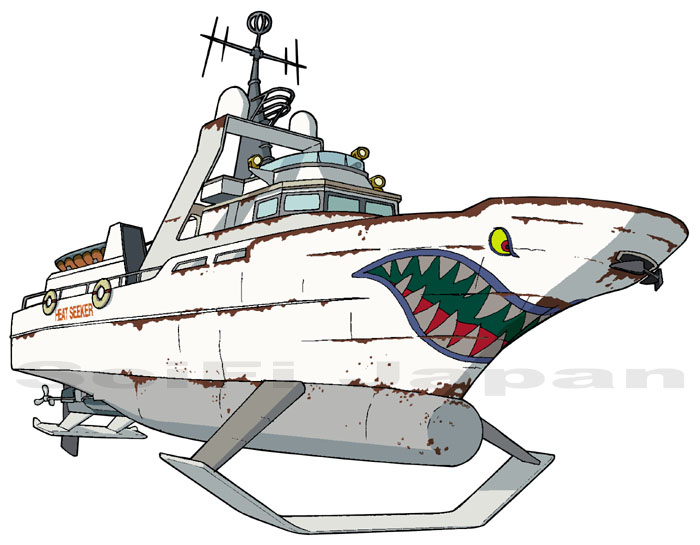 H.E.A.T.`s Heat-Seeker ship with Randy`s paintjob in full view. Photo courtesy of Sony Pictures Family Ent. ©1998 Toho Co., Ltd./Adelaide Productions, Inc.
H.E.A.T.`s Heat-Seeker ship with Randy`s paintjob in full view. Photo courtesy of Sony Pictures Family Ent. ©1998 Toho Co., Ltd./Adelaide Productions, Inc. Although the movie did not live up to the high industry expectations generated by the expensive marketing campaign, it did do well enough that a lot of kids saw it at least once. This carried over into the Fall as GODZILLA: THE SERIES premiered on FOX Kids on Saturday morning, September 12, 1998. The ratings were very good and audiences took to it immediately, keeping it one of FOX’s consistently highest rated cartoons and their number one show of 1998.
Although the series’ episodes do have official numbers, the shows were done in a way that the network is not bound to show them in that particular order. Unfortunately, there is no control over the network to insure the order episodes are broadcast in. You can refer to the episode guide for episode order vs. airdates and see for yourself.
Due to this, some small inconsistencies do arise. For example, two early episodes were inverted, showing the Heat-Seeker ship with a mouth and eyes in one episode and then two weeks later Randy is shown painting these and the name on the ship. The team muses about what H.E.A.T. should stand for, as Randy adds it to the bough of the boat.
One thing that influences the selection of episodes is the sweep weeks that occurs in February, May and November, in which ratings for advertising budgets are calculated. Strong episodes are needed as events or attention getters, and the three part “Monster Wars” episode, the staff’s homage to DESTROY ALL MONSTERS, was a natural.
The network may also look for an episode that would be good to lead off the second season with. In this case it was “Future Shock”, which featured a trip to the future where a buffed Dr. Craven battles the Dragma monsters that defeated the rest of the H.E.A.T. crew and Godzilla in the past. Other episodes may be selected to play after a few weeks of repeats or a long lay off, like the one in November/December of 1999.
The Fate of Godzilla: During its second season in 1999, GODZILLA took a break from the airwaves due to the “Pokemon Wars” between rival networks. This was not due to poor ratings, but to a desire by FOX to fight fire with fire and put the POKEMON-like shows DIGIMON and MONSTER RANCHER up against the WB Network to try and lure viewers back to FOX.
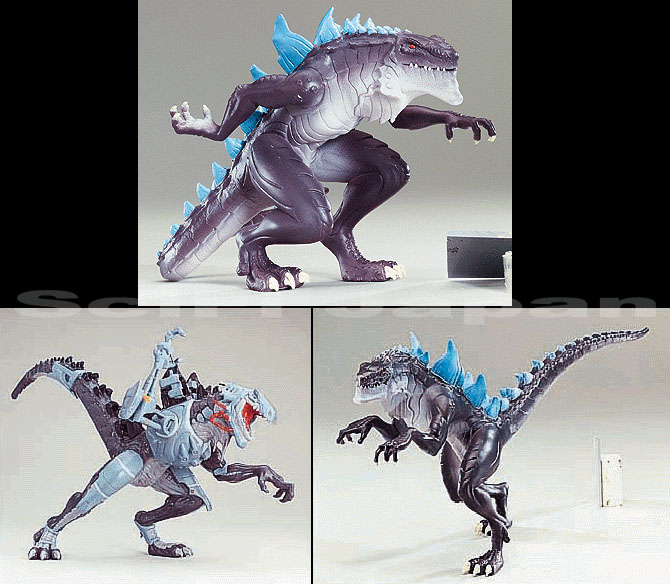 The aborted G:TS toy line from Trendmasters would have included an assortment of characters plus “Giant Monster” figures of Cyber-Godzilla and Godzilla. ©1998 Toho Co., Ltd./Adelaide Productions, Inc.
The aborted G:TS toy line from Trendmasters would have included an assortment of characters plus “Giant Monster” figures of Cyber-Godzilla and Godzilla. ©1998 Toho Co., Ltd./Adelaide Productions, Inc.After a break of a couple months though, GODZILLA came back with a vengeance, and according to Audu Paden, the episode that relaunched the series, “Freakshow” became the highest rated episode of the entire series. While this was a testament to GODZILLA’s drawing power, the long downtime meant that the show would finish its second and final season with two episodes still unaired.
Beyond the episodes sold to FOX in 1998, it is unlikely that more will ever be made. There were discussions about doing a sequel series in conjunction with the second US Godzilla movie, but that is a moot point since TriStar eventually decided not to do GODZILLA 2 and no longer has the rights to make a new Godzilla film.
Even if the sequel had been made, it would have needed to be a monster hit (no pun intended) to justify another animated show. Jeff Kline explained in 1999, “If we were to do GODZILLA again, we would have to ramp up again from the beginning. The staff and writers have all gone on to work on other things (at that time, BIG GUY AND RUSTY, ROUGHNECKS: STARSHIP TROOPERS and HEAVY GEAR). The nice thing is that we got the forty episodes right off the bat.”
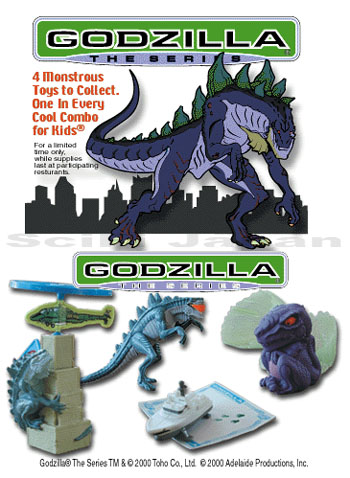 In 2000, Carl’s Jr Restaurants released a set of GODZILLA: THE SERIES ‘Kids Combo Meal’ toys. ©1998 Toho Co., Ltd./Adelaide Productions, Inc.
In 2000, Carl’s Jr Restaurants released a set of GODZILLA: THE SERIES ‘Kids Combo Meal’ toys. ©1998 Toho Co., Ltd./Adelaide Productions, Inc.Another disappointment came with a proposed line of GODZILLA: THE SERIES toys. In early 1999 Trendmasters, the company which had previously released toys based on both the Toho series and the US film, announced that they would be releasing a line of G:TS toys that Fall.
The first “Action Figure Assortment” would include Godzilla, Crustaceous Rex, the Yeti, Nick Tatopoulos, Randy Hernandez, Quetzacoatl, and N.I.G.E.L.. The 8” tall “Giant Monster Assortment” would feature Giant Godzilla (equipped with roaring sound effects, firing breath blast missile, and “passive light” translucent fins), and Cyber-Godzilla (roaring sound, firing missiles, translucent mouth and fins). Unfortunately, retailers were still smarting from the poor sales of the TriStar GODZILLA movie products so the animated series toys were cancelled before production began.
But GODZILLA: THE SERIES made its mark in other ways. The show was dubbed into Spanish and also aired in several foreign countries. Going back to its roots, the series began showing in Japan on their DirectTV system on December 1, 1999. Sony retains control over how the series is dubbed and aired in foreign markets, and no editing of the episodes was allowed.
There was also some merchandising from the show, including a pair of video games from Gameboy, and a set of kids’ meal toys from Carls Jr in 2000. In 1999, Columbia/TriStar Home Video released two volumes of GODZILLA: THE SERIES on VHS, “Trouble Hatches” (collecting the first two episodes of the show) and “Monster War”. August 2004 saw the release of the first DVD of episodes from the series—THE MONSTER WARS TRILOGY, and this month brings two more volumes.
Much like the legendary Japanese kaiju that inspired it, the animated King of the Monsters keeps coming back in new and different ways to thrill and entertain us all.
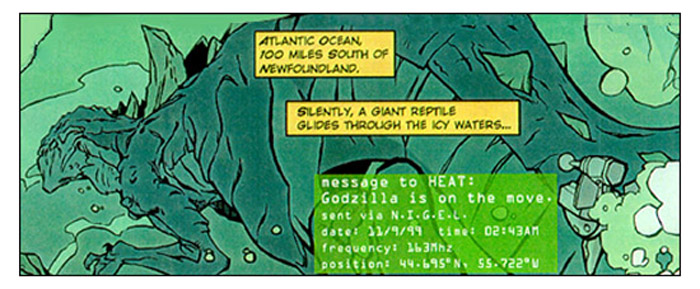 First panel of the GODZILLA: THE SERIES webcomic from Sony`s official website for the show. © 1998 Toho Co., Ltd./Adelaide Productions, Inc.
First panel of the GODZILLA: THE SERIES webcomic from Sony`s official website for the show. © 1998 Toho Co., Ltd./Adelaide Productions, Inc.The Cast and Characters of GODZILLA: THE SERIES
Source: Sony Pictures Family Entertainment
Additional material by Bob Johnson and Keith Aiken
GODZILLA
The star of the show is a 180 foot-tall amphibious reptile, a paradox of evolution, and a walking, stalking tribute to the limitless powers of irradiation. Godzilla is the “King of the Monsters”.
Godzilla is the offspring of the first Godzilla who trashed New York City in the 1998 feature film. He differs from his father in several major respects -- he cannot reproduce asexually but he can breathe powerful blasts of radioactive fire.
Whereas the first Godzilla would run from danger and slip between buildings, this Godzilla faces it head on and battles his foes to the death, week after week. Godzilla is sleek, swift, clever and above all, uncontrollably ferocious (make no mistake he IS a monster). He can run at speeds up to 300mph, leap high into the air, swim faster than submarine torpedoes, and burrow instantly through buildings and solid rock.
But despite all of his power, strength and intelligence, Godzilla is not invulnerable. He also has an aversion to bright lights and can be momentarily diverted by a sudden flash.
Godzilla feeds on fish – lots of fish, and H.E.A.T. have their work cut out for them trying to curb his insatiable appetite.
Godzilla is not a predator, but will attack if threatened. He views the entire planet as his territory. As a result, Godzilla will abide no threat to the world, whether said threat comes from another giant-sized monstrosity or from a scientist hatching some mad scheme. And woe to anyone or anything that threatens Nick!
 Baby Godzilla. Photo courtesy of Sony Pictures Family Ent. © 1998 Toho Co., Ltd./Adelaide Productions, Inc.
Baby Godzilla. Photo courtesy of Sony Pictures Family Ent. © 1998 Toho Co., Ltd./Adelaide Productions, Inc.
DR. NICK TATOPOULOS
Dubbed “The Worm Guy” by Major Hicks, Dr Niko Tatopoulos is a research biologist in his late twenties. Humanist, optimist and idealist, Nick would rather be researching the effects of radiation on earthworms than serving as the leader of a rag-tag band of scientists and adventurers… but desperate times call for desperate measures.
Nick spent his college years attending anti-nuke rallies and other environmental causes with his on again/off again sweetheart Audrey Timmonds. He then went to work for the Nuclear Regulatory Commission, hoping to change the system from within. It was during a three-year study of the unusual growth patterns of the Chernobyl earthworm that Nick was recruited by Major Hicks to study a certain reptile with an even more unusual biology.
Imprinted as a parent figure by the newborn Godzilla, Nick is torn by his fear of its destructive capabilities and the knowledge that the reptile is not inherently evil. His decision to study the creature rather than destroy it carries an enormous responsibility should Godzilla ever get irked and start knocking over major cities. However, Godzilla’s continued assistance in defeating new monsters solidifies Nick’s resolve to protect the beast.
Nick can’t help but feel a certain amount of guilt over his role in destroying the original Godzilla. He realizes this new Godzilla is truly the last of its kind and therefore deserves to be to be protected, nurtured and studied (“studied” as in observed, not vivisected).
Nick’s greatest asset is his resourcefulness – he uses whatever is immediately available to him in his efforts to understand Godzilla and escape danger. H.E.A.T. benefits greatly from Nick’s intuitive understanding of their adversaries’ mindset and natural instincts.
He is embroiled in a mild romantic triangle with Elsie and Audrey. He’d like nothing more than to rekindle his relationship with Audrey, but their respective career paths make that an occasional possibility at best. On the other hand, Elsie's unsubtle flirtation always leaves him feeling rattled and irked (and, deep down, rather flattered).
In spite of his more reserved personality, Nick is an effective mother hen to the H.E.A.T. brood, able to rally his team to defeat the most lethal monstrosity as well as settle internal disputes between the disparate and often volatile personalities. Nick is honorable to a fault; demanding the ability to examine all sides of an issue before making a decision. Big heart… big head… little prior experience at this hero thing. He’s in the game for the long haul and knows it’s a sink or swim situation.
Played by Matthew Broderick in the film, the cartoon version of Nick Tatopoulos is voiced by former BEVERLY HILLS 90210 star Ian Ziering. Ziering’s credits include the long-running soap opera GUIDING LIGHT, SAVATE (1997), THE WOMEN OF SPRING BREAK (1997), and SON OF THE BEACH (2002), and the animated shows MIGHTY DUCKS (1996), BATMAN BEYOND (1999), and SPIDER-MAN (2003). Last year, he played himself as a kidnapping victim in the movie DOMINO. He also starred as host of the syndicated weekly reality series BEACH PATROL (1997).
MONIQUE DUPRE
Mysterious, sexy, extremely dangerous, and worst of all… French, Monique is an operative of the SDECE (the French Secret Service), brought aboard H.E.A.T. by Phillipe Roache to continue the work he began and to ensure that Godzilla doesn’t step out of line or go out of control and crush some major urban center in the process.
Deadly at hand-to-hand combat, expert at all manner of weaponry, Monique provides some much-needed firepower to the team. Her French Vietnamese background and haughty demeanor don’t score many points with the rest of H.E.A.T., but her mission priorities do not include making friends and influencing people.
Monique is most in her element when sneaking into high-security facilities and dispensing with heavily-armed guards. She knows any number of martial arts and has yet to meet a weapon she couldn’t master in 20 seconds.
Monique reveals personal information on a need to know basis, and apparently there isn’t much this group of idiotic Americans need to know. Her attitude consistently infuriates Elsie and Craven, but only serves to pique the hopelessly-smitten Randy’s interest.
Monique remains icy to everyone – its all monosyllables and cutting remarks, especially to Nick, for whom she has no respect. The only member of H.E.A.T. she can abide is Randy, who she finds rather sweet (but would never admit it). While Nick respects Monique’s dedication, she openly distrusts his attachment to Godzilla. She is extremely skeptical of the monster and his supposed value to the team.
Even though Nick is technically in charge, Monique seems to be following her own agenda, rarely bothering to explain her actions or motivations. H.E.A.T. assumes she is on their side, but her aloofness and cunning manner do not engender any level of comfort or trust.
Monique Dupre was a new character created specifically for GODZILLA: THE SERIES. The voice for the beautiful secret agent is provided by the beautiful Canadian actress Brigitte Bako. A veteran of the theater where she has performed in such distinguished productions as "Othello" at the Reflections Shakespeare Festival and "The Doll`s House," Bako had a recurring role on ABC`s drama EQUAL JUSTICE and HBO’s THE MIND OF A MARRIED MAN (2001). Her film credits include Martin Scorsese`s NEW YORK STORIES (1989), the pilot movie for the erotic series RED SHOES DIARIES (1992), STRANGE DAYS (1995), ONE GOOD COP, and THE ESCAPE. She has also done voice work for the US release of 3x3 EYES (1991) and Disney’s animated series GARGOYLES (1996). Brigitte Bako is currently writing and starring in the Canadian television series THE G-SPOT (2005).
RANDY HERNANDEZ
Another original character created for the animated series, Randy is Black-Portuguese and all attitude… a hormonally challenged teen hacker par excellence, with a taste for adventure and a decidedly anti-authoritarian bent. His computer skills allow him to tap into anything, whether securing airline tickets, fixing a parking violation, raiding a villain’s computer files, regaining control over a robot monster or breaking into enemy compounds. A totally impulsive adrenalin junkie, Randy leaps before looking and looks when he should be running.
Brimming with attitude, he’s always quick with a wisecrack, particularly at inappropriate moments. His favorite target is the nerdish Dr Craven, with whom he shares a brotherly relationship. The quips between them usually escalate into a game of pranks and one-upmanship. Randy usually targets Craven by messing with N.I.G.E.L’s programming and giving the robot a wide variety of annoying personalities. Randy’s favorite verbal sparring partner is Elsie, who gives as good as she gets.
Randy is totally, madly, completely infatuated with Monique and doesn’t care who knows it. Monique, in turn is atypically sweet to Randy, largely because she recognizes him as the child he is. He sees her daredevil acts (always done in the line of duty) as a call to action: he will follow her anywhere to show he’s every inch the man that she is. Lamentably, he is not, as she frequently has to rescue him from danger.
Randy sees Godzilla (or "the G-Man" as he calls him) as the biggest, baddest, coolest creature on the planet. He regards the monster with the respect born of fear, with just a touch of religious awe. Godzilla is unaware of Randy’s existence, and would just as soon step on him as a person might an ant.
Randy Hernandez is played by Rino Romano, a supporting actor who appeared in movies like AMY FISHER: MY STORY (1992), SUGARTIME (1995), IRON EAGLES IV (1995), and LOSING CHASE (1996) as well as several episodes of the critically-acclaimed drama DUE SOUTH. He is a regular voice actor for animation and video games with a long list of credits that include Peter Parker/Spider-Man on SPIDER-MAN UNLIMITED (1999), ROUGHNECKS: THE STARSHIP TROOPERS CHRONICLES (1999), and Bruce Wayne/Batman on THE BATMAN (2004), as well as EXTREME GHOSTBUSTERS, MEN IN BLACK, ULTRAFORCE, SAILOR MOON, GARGOYLES, MORTAL COMBAT, ZORRO, TALES FROM THE CRYPTKEEPER, and HIGHLANDER: THE ANIMATED SERIES.
DR. ELSIE CHAPMAN
Sharp-tongued and sarcastic, Elsie is a biologist in her mid-30s. She is brilliant and she knows it. Elsie has a tendency to talk down to everyone on H.E.A.T.—particularly Nick. He used to answer to her when she was the head of the original Godzilla research team, and she’s not crazy about the whole role-reversal thing now. She overcompensates by lording her authority over Randy (who ignores her) and Craven (who’s used to taking orders from her anyway).
A shameless and aggressive flirt, Elsie is the master of the double entente – especially when it comes to Nick. She does this less out of any real affection for him (although there’s definitely an attraction), but more to gain the upper hand with her increasingly uncomfortable boss. Her coquettishness goes into overdrive whenever Audrey’s around.
Elsie took an instant dislike to Monique from the get-go and it’s gone downhill ever since they met. She saves her choicest verbal barbs for Monique, who in turn barely acknowledges Elsie’s existence.
Elsie leans towards the pro-Godzilla camp, but purely as a scientific specimen. Plus, if siding with Nick annoys Monique, so much the better. She would never admit to having an emotional or sentimental attachment to the creature, but then again, after Godzilla saves her life a couple dozen times, a sense of loyalty for him inevitably develops.
The versatile Charity James plays Elsie Chapman in GODZILLA: THE SERIES. No stranger to voice-over acting, Charity has lent her voice to such popular animated series as Fox Kids Network`s BOBBY`S WORLD, C.O.W.BOYS OF MOO MESA on ABC and the Emmy-Award winning THE SIMPSONS, plus her roles in the popular feature films SPACE JAM (1996), ANASTASIA (1997), and BALTO III: WINGS OF CHANGE (2004). In addition to her voice-over work, Charity has been featured on numerous daytime programs, including GENERAL HOSPITAL, SANTA BARBARA, and RYAN`S HOPE.
DR. MENDEL CRAVEN
Fussy and neurotic, Craven is an electronics whiz who is also the butt of everyone’s jokes. Fortunately, Craven is a good sport…although Randy is starting to push it.
The ultimate hypochondriac, he has had the same cold since he was thirteen. He is allergic to simply everything… especially danger. Monique and Randy’s adrenaline junkie tendencies bewilder him, and he is terrified of Godzilla.
Craven is an expert at sophisticated mechanical devices and tracking technology. There isn`t a monster they encounter that Craven doesn`t have some kind of gadget to pinpoint its location. He also dabbles in high-tech animal behavior modification. He’s the one who always wants to stick the proverbial dog collar around Godzilla’s neck— or maybe a few snips to the frontal lobe to curb that little aggressive streak. Nick, naturally, is completely opposed to such cruelty, but that doesn`t stop Craven from pushing the issue.
He has enormous respect for both Elsie and Nick, and requires constant soothing from them both. He has an unspoken crush on Elsie, convinced that he is the right man for her if only she could see it too. He has an unhealthy competitiveness with Randy on the electronics/computer front. The two have an ongoing feud of escalating pranks and humiliations.
To overcompensate for his surface flaws, Craven has a huge ego. He wishes that other people who recognize that his smarts form the backbone of H.E.A.T. He has built the research robot N.I.G.E.L. which (like Craven’s ego) gets stomped in every episode, usually due to Randy’s constant reprogramming.
Actor Malcolm Danare reprises his role of Mendel Craven from the GODZILLA movie. Throughout his lengthy career, Malcolm has appeared in a broad range of films, such as FLASHDANCE (1983), John Carpenter`s CHRISTINE (1983), THE LORDS OF DISCIPLINE (1983), NATIONAL LAMPOON’S EUROPEAN VACATION (1985), HEAVEN HELP US (1985), Walter Hill`s CROSSROADS (1986), Mel Brooks` ROBIN HOOD: MEN IN TIGHTS (1993), and INDEPENDENCE DAY (1996). His television credits include recurring roles on CAPITOL NEWS and KNIGHT AND DAY, as well as episodes of CSI: MIAMI (2004). He has also performed in various theater productions including "Entertaining Mr. Sloane, "Lovers and Other Strangers" and "Vespers Eye."
N.I.G.E.L.
Built by Mendel Craven, N.I.G.E.L. is a research robot whose name is an anagram for “Next-millennium Intelligence Gathering Electronic Liaison”. Low-tech looking, but high-tech acting, his main function is to go where the H.E.A.T. team can not; the ocean floor, inside an active volcano or near highly toxic fumes… which usually results in the robot getting pummeled, bashed-up or obliterated.
N.I.G.E.L. also serves as a vehicle for Randy and Craven’s ongoing rivalry. Craven programmed the robot with the selfless heroic personality he imagines himself to posssess. Randy is constantly reprogramming N.I.G.E.L’s personality just to drive Craven crazy.
Although N.I.G.E.L. operates autonomously, he is not a pure artificial intelligence. He is an information-gathering machine that does what he’s programmed to do. His “personalities” are the result of tampering with his linguistic codes. Thus, he will inadvertently transmit data in avariety of funny voices, but he will not express emotions or make conscious choices.
Outside of Nick, N.I.G.E.L. is the one member of H.E.A.T. who can get physically close to Godzilla. N.I.G.E.L. proved invaluable in the creature’s early “housebreaking” and can also be dispatched to signal Godzilla when the team needs him most. Godzilla, in turn regards the little robot as somewhere between a pet and a beloved chew toy.
All of N.I.G.E.L.’s varied and unique voices are performed by actor/comedian Tom Kenny. One of the regular performers on HBO’s cult classic MR. SHOW (1995), Kenny also had a recurring role on JUST SHOOT ME (1998) and has appeared on numerous television series including BROTHERLY LOVE and ARLISS. He is one of the top voice actors in the business, having worked on FUTURAMA (1999), DILBERT (1999), POWERPUFF GIRLS (2000), THE FAIRLY ODDPARENTS (2001), DEXTER’S LABORATORY (2002), THE ANIMATRIX (2003), STRIPPERELLA (2003), CRANK YANKERS (2003), THE BATMAN (2004), ROCKO`S MODERN LIFE, CATDOG, TOP CAT, TOONSYLVANIA, and STUART LITTLE 3: CALL OF THE WILD (2005). He may be best known as the voice of SPONGEBOB SQUAREPANTS (1999).
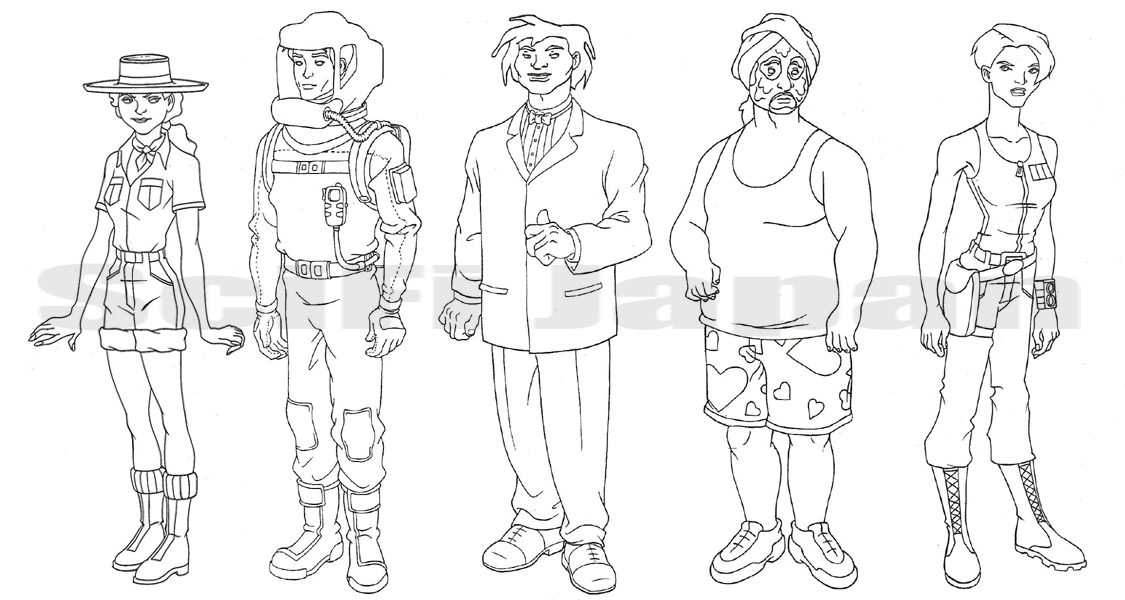 With 40 adventures taking place all over the world, hundreds of different costumes needed to be designed for the characters. © 1998 Toho Co., Ltd./Adelaide Productions, Inc.
With 40 adventures taking place all over the world, hundreds of different costumes needed to be designed for the characters. © 1998 Toho Co., Ltd./Adelaide Productions, Inc.
MAJOR ANTHONY HICKS
A career army man in his late 40s, Hicks was the military leader of the original Godzilla research team and was instrumental in bringing the giant monster down. He returns in GODZILLA: THE SERIES to once again lead the military against new mutations that are appearing all over the world. Nick and Hicks went their separate ways shortly after the hatching of the new Godzilla.
Hicks initially believed the offspring to be just another murderous monster like his father. Eventually he comes to recognize the new Godzilla is a necessary evil in the ongoing battle against mutations. Hicks’ superiors don’t necessarily share that enlightened viewpoint, and that’s where things get complicated.
Based on his success in defeating the original Godzilla, Hicks now heads the military’s foremost anti-mutation unit whose singular objective is “Destroy All Monsters”. As far as the higher-ups are concerned, H.E.A.T. is merely an annoying group of tree-hugging busybodies who constantly get in the way. Thus, Hicks often finds himself caught between following ordrs and his conscience. His hands may be tied by the chain of command, but he’s not above bending a few rules to do the right thing.
He`s straightforward, decisive, tough but fair. Nick and Hicks respect one another, and each is willing to trade information if it will help the other’s mission. Even so, Hicks never fails to remind Nick that if his “pet” steps out of line even once, he’ll use all the firepower at his disposal to blast the creature of the face of the earth.
As for Godzilla, he couldn’t care less about Hicks.
Anthony Hicks may have changed from a Colonel to a Major when he moved from the movie GODZILLA to the television series, but he is still played by Kevin Dunn. One of Hollywood`s busiest character actors, Dunn has appeared in the films GHOSTBUSTERS II (1989), HOT SHOTS (1991), CHAPLIN (1992), DAVE (1993), NIXON (1995), CHAIN REACTION (1996), PICTURE PERFECT (1997), SMALL SOLDIERS (1998), SNAKE EYES (1998), STIR OF ECHOES (1999), I HEART HUCKABEES (2004), and THE BLACK DALIA (2006). On television, Kevin was a series regular on ARSENIO and appeared in several made-for-TV movies and mini-series including SHADOW OF A DOUBT, BLUE HEAVEN, and SHATTERED MIND.
AUDREY TIMMONDS
An attractive, over-ambitious, energetic and rising young reporter in her mid-20s, Audrey was also the college sweetheart of Nick Tatopoulos. They were reunited under rather tumultuous conditions during the original Godzilla crisis, and by all appearances the flame was rekindled. But reality has a way of mucking up happy endings…
With Nick traveling the globe for H.E.A.T. and Audrey always on assignment, it doesn’t leave much time for a serious relationship to develop. Neither one is willing to sacrifice their career for the sake of the other, but their paths continue crossing so the potential for something more is kept alive (maybe tomorrow, never today).
Elsie particularly enjoys throwing the occasional monkey wrench into their relationship – more for its inherent entertainment value than any real feelings of jealousy. Audrey can’t help but feel a twinge of envy over Nick and Elsie’s close and constant working relationship.
Monique presents an even greater challenge for Audrey since her desire for secrecy and security is often in direct conflict with Audrey’s desire for a big story. Although she fancies herself a ruthless, hard-hitting journalist, Audrey at heart is still the small town girl who hasn’t quite toughened up to life in the big city. Even though she could expose H.E.A.T. for harboring Godzilla, she refuses to betray Nick’s trust. Nick can count on her to put a positive spin on H.E.A.T. in the media, while Audrey can count on him for the occasional hot tip and/or exclusive story.
Stage and screen actress Paget Brewster is the voice of the animated Audrey Timmonds. On television, Paget had a recurring role on FRIENDS (1998) and was featured on LET’S TALK ABOUT SEX (1998), ANDY RICHTER CONTROLS THE UNIVERSE (2002), HUFF (2004), and STACKED (2005). Her film credits include THE ADVENTURES OF ROCKY AND BULLWINKLE (2000), THE SPECIALS (2000), AGENT 15 (2001), GAME OF CHANCE, SKIPPY, and GIRL TALK. She has also provided her vocal talents to numerous animated programs including SUPER ADVENTURE TEAM and HARVEY BIRDMAN: ATTORNEY AT LAW.
VICTOR “ANIMAL” PALOTTI
An Italian-American video camera-jockey in his mid-30s, Animal always accompanies Audrey on whatever story she’s hunting. The cliché of a “typical” loud-mouthed New Yorker, Animal is crazy enough to stand in place and get a close-up of any monstrosity that may be heading his way. The sight of a rampaging Godzilla doesn’t scare him one bit.
Animal fears nothing and no one, with the exception of his wife, Lucy. Though she is never seen in the series, Animal’s one and only concern as he rushes into danger is that “Lucy’s gonna kill me”.
For GODZILLA: THE SERIES, Animal was played by Joe Pantoliano, one of the busiest actors in show business. On the big screen, Pantoliano has appeared in over 60 films, including his famous turn as “Guido the killer pimp” in RISKY BUSINESS (1983) and roles in THE GOONIES (1985), LA BAMBA (1987), EMPIRE OF THE SUN (1987), AMAZON WOMEN ON THE MOON (1987), MIDNIGHT RUN (1988), THE FUGITIVE (1993), BAD BOYS (1995), BOUND (1996), US MARSHALS (1998), THE MATRIX (1999), MEMENTO (2000), DAREDEVIL (2003), and BAD BOYS II (2003). His television credits include NYPD BLUE, L.A. LAW, CIVIL WARS, a TALES FROM THE CRYPT (1989) episode for which he was nominated for a CableACE Award, and several seasons of THE SOPRANOS.
Beginning his acting career in the theater, Joe has appeared in over 40 Off-Broadway productions. He received a Dramalogue Award and a Drama Critic`s Circle Award for Best Actor in the Los Angeles production of "Orphans".
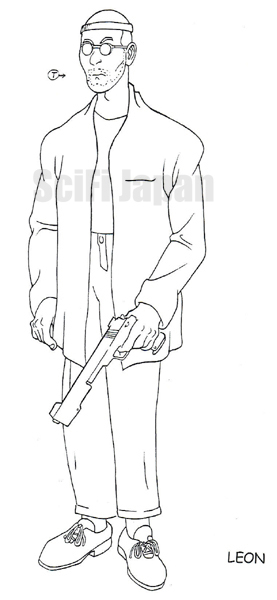 A fun picture we just had to share: Phillipe as Jean Reno`s most famous character, Leon the Professional.
A fun picture we just had to share: Phillipe as Jean Reno`s most famous character, Leon the Professional.PHILLIPE ROACHE
Intense, mysterious and dangerous, Phillipe is a French Secret Service Operative who was heavily (if invisibly) involved in stopping the first Godzilla’s rampage on New York.
A patriot through and through, Phillipe is more interested in correcting the mistakes of his country than with covering them up. Nevertheless, secrecy is of the utmost importance. He appears and disappears throughout GODZILLA: THE SERIES, providing H.E.A.T. with essential information and occasional equipment like the Heat-Seeker.
Personality-wise, Phillipe is a bit of a cipher; cool, oblique and often unpredictable. Phillipe is extremely dubious of the continued existence of the new Godzilla, but is willing to allow Nick to continue studying the creature so long as it continues to be of value in the battle against other monsters. But letting Godzilla roam unsupervised is out of the question, so Phillipe assigns Monique to be a member of H.E.A.T.
It is not easy filling the shoes of Jean Reno, but Keith Szarabajka does a fine job as the voice of the animated Phillipe Roache. Szarabajka had a recurring role as `Holtz` on ANGEL (2001), and has appeared on THE EQUALIZER (1989), STEPHEN KING’S GOLDEN YEARS (1991), LAW AND ORDER (1992), THE YOUNG INDIANA JONES CHRONICLES (1993), NORTH AND SOUTH BOOK II (1994), BABYLON 5 (1994), TIMECOP (1998), X FILES (2000), ENTERPRISE (2002), HELTER SKELTER (2004), and 24 (2005).
See the GODZILLA: THE SERIES episode guide for incidental characters and voice actors.
GODZILLA: THE SERIES – THE DEFINITIVE EPISODE GUIDE
Authors: Keith Aiken and Bob Johnson
Source: Sony Pictures Family Entertainment
When Sony first announced GODZILLA: THE SERIES, they issued a preliminary episode guide for the show. But the series was revised throughout production, resulting in several changes to character and monster names, episode titles, and show order. The early guides have been reprinted numerous times in magazines and online, but unfortunately include much information that is now inaccurate.
What follows is the complete episode guide for GODZILLA: THE SERIES, based on final production materials provided by the show’s producers. Each episode is listed in order by the official Sony production number, and all titles and names are taken from the final scripts and materials used by the crew responsible for creating the series. Air dates detail when the episodes were first broadcast on FOX television in America.
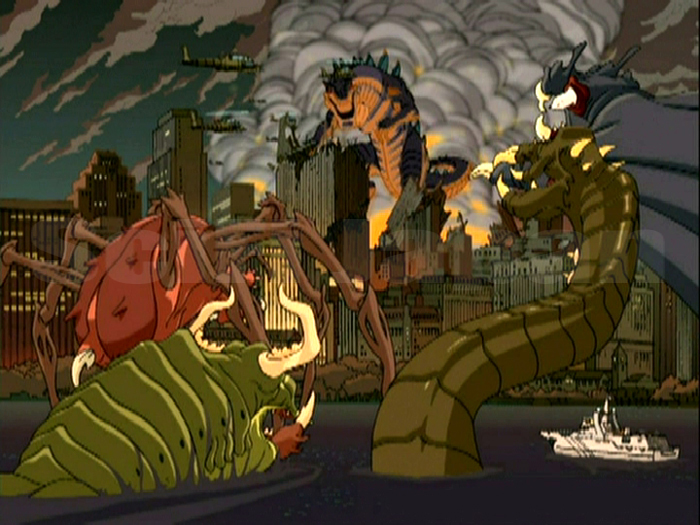 Godzilla faces off with Gus, Megalon, Manda and the Flying Gigan. © 1998 Toho Co., Ltd./Adelaide Productions, Inc.
Godzilla faces off with Gus, Megalon, Manda and the Flying Gigan. © 1998 Toho Co., Ltd./Adelaide Productions, Inc.#100: MAIN TITLE
Director: Richard Raynis
Assistant Directors: Tim Eldred, Toshiyuki Hiruma, and Audu Paden
The first animation completed for the series, the Main Title features each of the lead characters and effectively set up the look and style of GODZILLA: THE SERIES. Along with Crustaceous Rex (the mutation introduced in the first story arc), the sequence shows several early monster designs that never appeared in any of the episodes.
As these designs were created before most of the scripts had been finished, the monsters were given random names for identification purposes… some of which will be familiar to Toho fans. The beast that swoops past the Statue of Liberty is called the Flying Gigan (though it is often misidentified in publicity material as the Giant Bat from MONSTER WAR). Near the end of the title sequence, the Flying Gigan joins Gus the Spider, Megalon, and Manda the Worm for a confrontation with Godzilla.
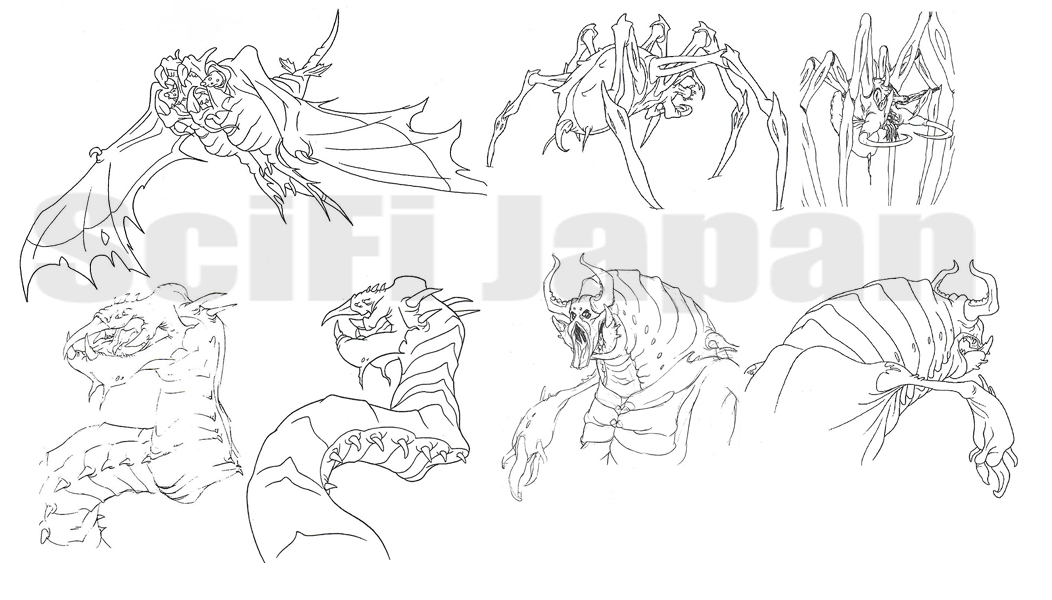 Character designs for the Main Title monsters: Flying Gigan, Gus the Spider, Manda the Worm and Megalon. © 1998 Toho Co., Ltd./Adelaide Productions, Inc.
Character designs for the Main Title monsters: Flying Gigan, Gus the Spider, Manda the Worm and Megalon. © 1998 Toho Co., Ltd./Adelaide Productions, Inc.
#101: NEW FAMILY – Part 1
Writers: Robert Skir and Marty Isenberg
Director: Audu Paden
Original FOX Air Date: 9/12/98
Just when the first Godzilla is destroyed, another one is born. Imprinting on Dr. Nick Tatopoulos, the infant eludes the military then follows Nick to his waterfront headquarters. Rather than destroying the new Godzilla, Nick resolves to study it, and a bond soon grows between them.
He recruits Elsie Chapman, Mendel Craven, and Randy Hernandez to form H.E.A.T., a team to assist in his research and keep Godzilla a secret.
The secret doesn’t last long as Godzilla grows rapidly, and Audrey and Animal learn what the group has been up to. A desperate Nick convinces them to temporarily hold off on reporting the story of a lifetime.
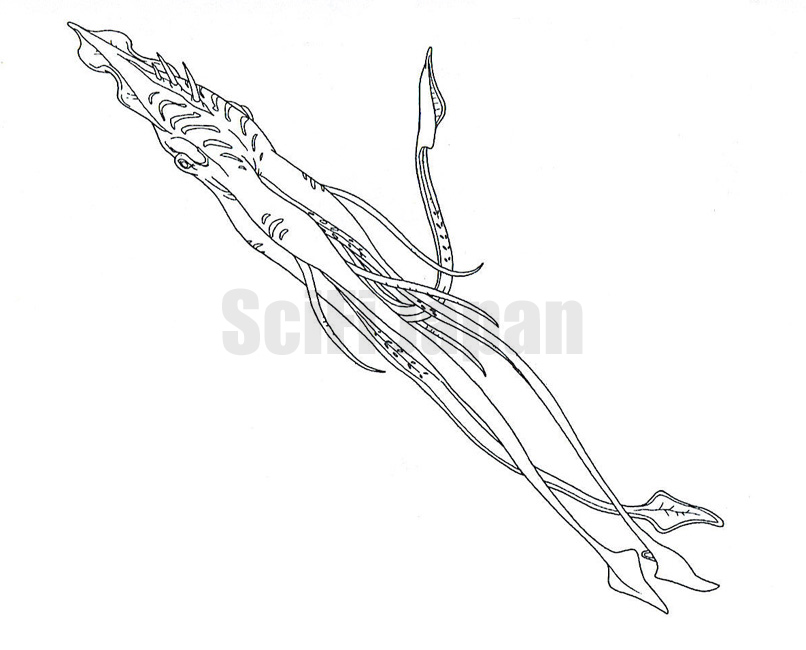 Giant squids menace the shores of Jamaica in the first two episodes. © 1998 Toho Co., Ltd./Adelaide Productions, Inc.
Giant squids menace the shores of Jamaica in the first two episodes. © 1998 Toho Co., Ltd./Adelaide Productions, Inc.Meanwhile, ocean disasters near Jamaica have raised concerns that a mutation may be responsible. When Major Hicks learns of the new Godzilla, he suspects it is the culprit and is torn between killing the monster and trusting in Nick… but in the end, Godzilla is attacked by the military and apparently destroyed.
#102: NEW FAMILY – Part 2
Writers: Robert Skir and Marty Isenberg
Director: Audu Paden
Original FOX Air Date: 9/19/98
In the wake of Godzilla’s apparent death, Nick convinces H.E.A.T. to stay together to study other mutations around the world. The team travels to Jamaica to investigate attacks on boats and swimmers from what appears to be a giant squid. Monique Dupre is assigned to the team by Phillipe Roache, and Randy is instantly smitten with the sexy but cold French secret agent. H.E.A.T. discovers several very aggressive giant squids, and it is only the last-minute arrival of (the very much alive) Godzilla that saves the day.
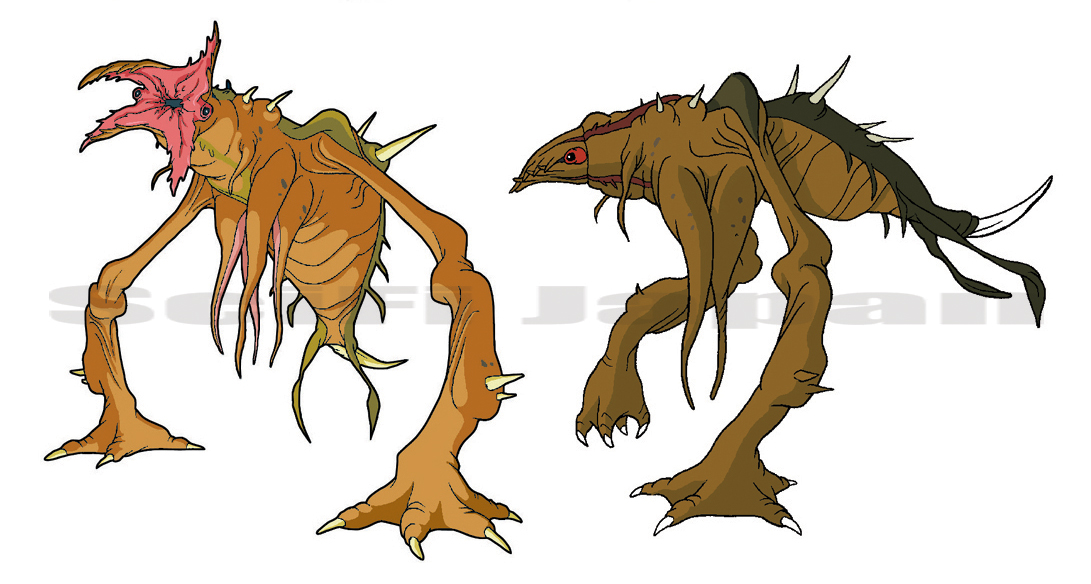 Front and side views of Crustaceous Rex. Photo courtesy of Sony Pictures Family Ent. © 1998 Toho Co., Ltd./Adelaide Productions, Inc.
Front and side views of Crustaceous Rex. Photo courtesy of Sony Pictures Family Ent. © 1998 Toho Co., Ltd./Adelaide Productions, Inc.After examining the corpse of a squid, Nick theorizes that the animals were not the main threat, and that there is actually a “super predator” at the top of the local food chain. That predator is soon revealed to be Crustaceous Rex, a gigantic beast with a crablike carapace, segmented arms, dozens of tentacles, and a head that spirals open like a weird flower.
C-Rex comes ashore, and tears through a seaside village until it is confronted by Godzilla. The two mutations face off for the first monster battle of the series, while Hicks and the US military prepare to deal with the winner…
Note: The first two episodes were written by the main story editors/head writers for GODZILLA: THE SERIES and do an excellent job of laying the foundation for the show. All of the main characters and their relationships are established, as is Major Hicks’ decision that Godzilla just may be a necessary evil he will have to live with. C-Rex returns in future episodes, most notably the three-part MONSTER WAR story.
This story arc was released on VHS with the title TROUBLE HATCHES.
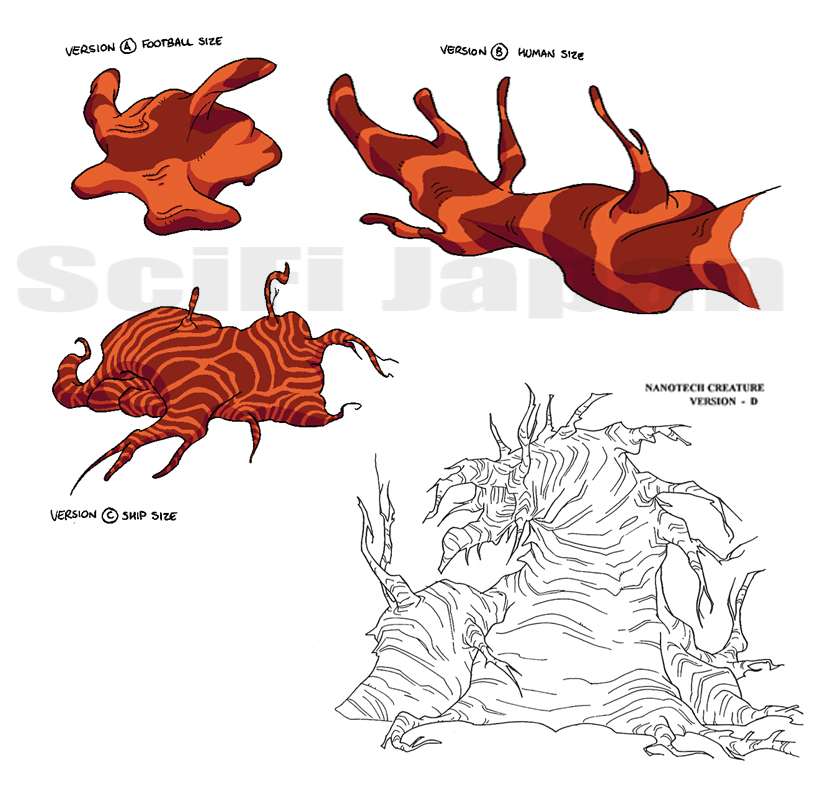 The various stages of the ever-growing Nanotech Creature. Photo courtesy of Sony Pictures Family Ent.© 1998 Toho Co., Ltd. /Adelaide Productions, Inc.
The various stages of the ever-growing Nanotech Creature. Photo courtesy of Sony Pictures Family Ent.© 1998 Toho Co., Ltd. /Adelaide Productions, Inc.#103: TALKIN’ TRASH
Writers: Marty Isenberg and Robert Skir
Director: Tim Eldred
Original FOX Air Date: 10/3/98
Randy paints the group’s boat and christens it the Heat-Seeker, which prompts the other team members to debate what the name H.E.A.T. actually means. Randy suggests it should be an acronym for “High Performance Environmental Attack Team”, but Elsie points out that the team’s name would therefore be pronounced “Huhpeat”. After a brief discussion, Nick and Elsie decide on “Humanitarian Environmental Analysis Team”.
A sanitation workers’ strike leaves the streets of New York City piled with trash. In order to curry favor with Mayor Ebert and secure additional funding for his research institute, administrator Dean Whitehead offers a nanotech driven, petroleum eating microbe colony developed by Dr. Felix Hoenikker as a cure for NYC’s ills. Unfortunately, the microbes have not been properly tested and, once released from their container, the colony goes out of control and evolves into an ever-growing Nanotech Creature.
Hicks and the Mayor must rely on Godzilla to halt the Nanotech Creature’s rampage long enough for H.E.A.T. to destroy it from within by infecting the microbes with a computer virus.
Note: In this episode, actor Michael Lerner reprises his GODZILLA role as the Mayor of New York. This time he has a new assistant, who coincidentally also happens to be named Gene.
The yuppie-ish Dean Whitehead is voiced by David Paymer, a veteran character actor whose many credits include dozens of TV series as well as films like SEARCHING FOR BOBBY FISCHER (1993), CITY SLICKERS II (1994), GET SHORTY (1995), AMISTAD (1997), MIGHTY JOE YOUNG (1998) and PAYBACK (1999).
Early announcements for GODZILLA: THE SERIES called this episode’s monster the P.E.M.C. (Petroleum-Eating Microbe Colony), but the name was officially changed during production to the Nanotech Creature.
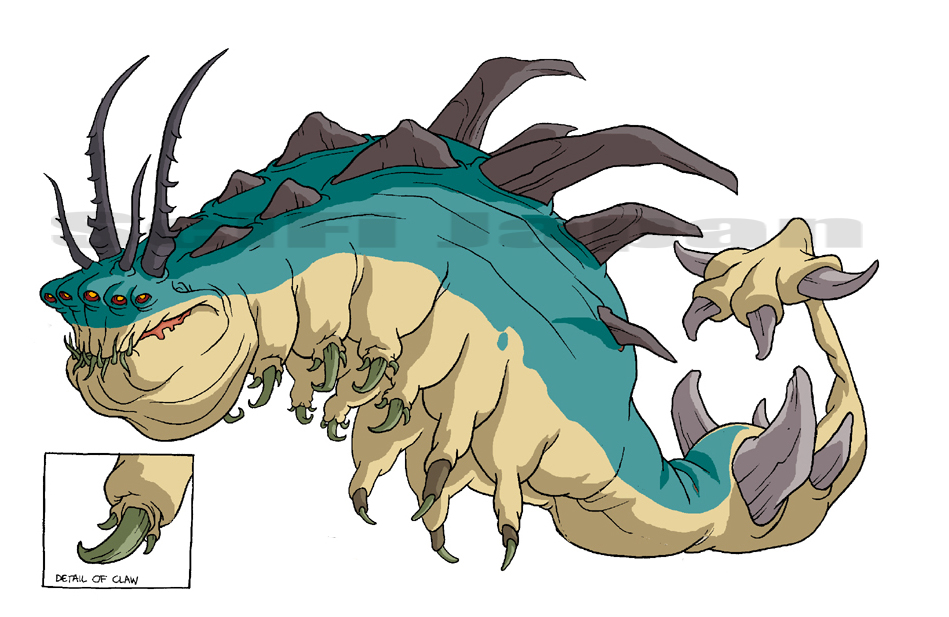 The massive El Gusano was one of the most popular monsters from GODZILLA:THE SERIES. Photo courtesy of Sony Pictures Family Ent. © 1998 Toho Co., Ltd./Adelaide Productions, Inc.
The massive El Gusano was one of the most popular monsters from GODZILLA:THE SERIES. Photo courtesy of Sony Pictures Family Ent. © 1998 Toho Co., Ltd./Adelaide Productions, Inc.
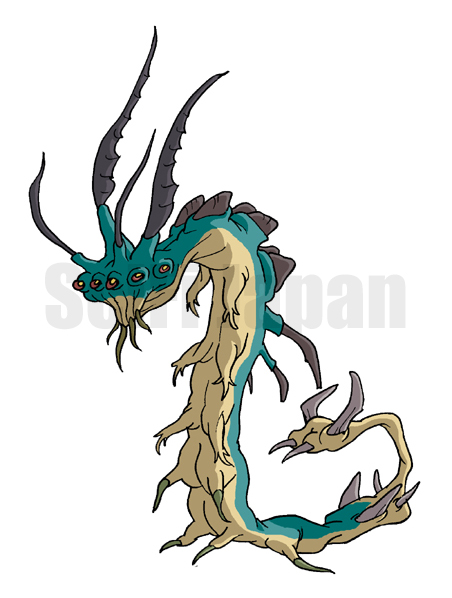 El Gusano has a problem with shrinkage after his battle with Godzilla. Photo courtesy of Sony Pictures Family Ent.© 1998 Toho Co.,Ltd./Adelaide Productions, Inc.
El Gusano has a problem with shrinkage after his battle with Godzilla. Photo courtesy of Sony Pictures Family Ent.© 1998 Toho Co.,Ltd./Adelaide Productions, Inc. #104: D.O.A.
Writer: Richard Mueller
Director: Frank Squillace
Original FOX Air Date: 9/26/98 Mendel
Craven begins to question his place on H.E.A.T., preferring the lab to the battlefield. But when a giant rampaging earthworm called El Gusano surfaces in Central America, Craven is dragged along on a new adventure.
H.E.A.T. visits the tiny republic of Costa Rojo to help with the new menace, but they are treated as interlopers by the despotic military ruler General Albondiga. The general has his own solution for dealing with the problem; an experimental biological weapon.
El Gusano attacks, and Godzilla arrives to protect Nick and H.E.A.T. Albondiga orders his troops to fire a missile containing his bio-weapon at the warring monsters. The missile hits, and Godzilla is severely injured by the poison… but the effect is the exact opposite for El Gusano. The giant worm grows even larger as it draws nourishment from the weapon. The general feels that “if at first you don’t succeed, try again” and decides to hit El Gusano with a second blast of the bio-weapon.
While Craven races to cure Godzilla, H.E.A.T. tries to figure out how to stop the mutation before Albondiga can put his plan into effect. Mendel is successful, and his confidence is restored as Godzilla revives and takes care of El Gusano with his radioactive breath.
Note: El Gusano (meaning “the worm”) was one of the largest monsters to appear in GODZILLA: THE SERIES. The popular beast would recover from his battle with Godzilla and return for the MONSTER WAR arc.
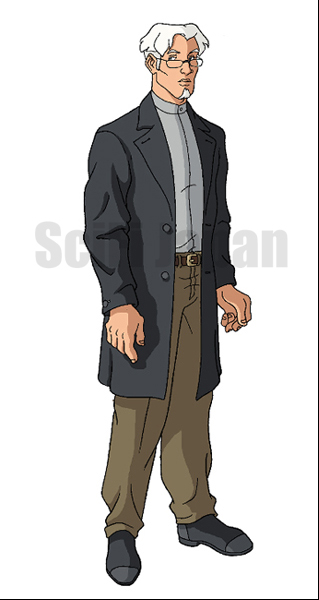 The evil Cameron Winter. Photo courtesy of Sony Pictures Family Ent.© 1998 Toho Co., Ltd. /Adelaide Productions, Inc.
The evil Cameron Winter. Photo courtesy of Sony Pictures Family Ent.© 1998 Toho Co., Ltd. /Adelaide Productions, Inc. #105: THE WINTER OF DISCONTENT
Writers: Marty Isenberg and Robert Skir
Director: Sam Liu Original
FOX Air Date: 10/10/98
Godzilla is attacked by three insect-like flying robots. As H.E.A.T. races to help the monster, Nick runs into his old college rival Cameron Winter, the wealthy and powerful head of Solstice Technologies. Winter has been contracted by the Pentagon to make cybernetic flying attack drones, and he has decided to field test these Cyber-Flies against Godzilla. Unfortunately for Winter, Godzilla makes short work of the robots.
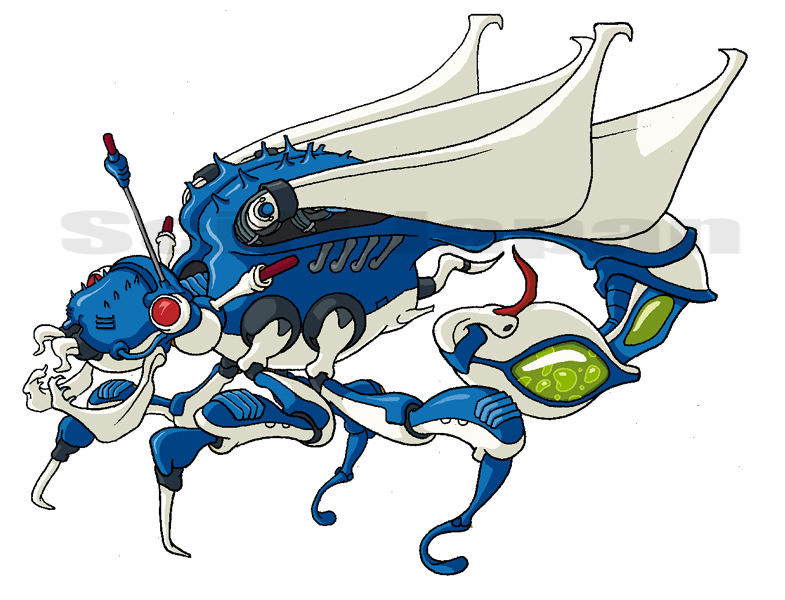 The Cyber-Fly was the first of Winter`s creations to trouble Godzilla. Photo courtesy of Sony Pictures Family Ent.© 1998 Toho Co., Ltd./Adelaide Productions, Inc.
The Cyber-Fly was the first of Winter`s creations to trouble Godzilla. Photo courtesy of Sony Pictures Family Ent.© 1998 Toho Co., Ltd./Adelaide Productions, Inc.Winter invites Nick and H.E.A.T. to tour the Solstice facilities and offers them all jobs working for him. Nick immediately refuses and, despite all of Winter’s perks and promises, the rest of team declines as well. But when Randy gets into trouble for hacking his college’s computer system, Winter offers to smooth things over…in exchange for a little favor.
He explains that Godzilla is a wild animal that could be tremendously destructive, but a cybernetic neural stimulator built by Solstice could help pacify Godzilla and influence his behavior. Winter tricks Randy into attaching the device, which will actually allow him to control Godzilla. With Godzilla in his power, Winter will have access to DNA he needs to create an army of genetically engineered bio-weapons that he will sell to the highest bidder.
Note: Cameron Winter became a recurring villain for the series, and would return to bedevil Nick and Godzilla in AN EARLY FROST and LIZARD SEASON. The character was voiced by actor David Newsom, whose credits include lead roles in the TV series HOMEFRONT (1991), HOUSE RULES (1998), and THE DAYS (2004); guest appearances on QUANTUM LEAP, MELROSE PLACE, 24, and CSI: CRIME SCENE INVESTIGATION; and a part in the Freddy Krueger film WES CRAVEN`S NEW NIGHTMARE (1994).
#106: CAT AND MOUSE
Writer: Steven Melching
Director: Frank Squillace
Original FOX Air Date: 10/31/98
A mutant giant rat emerges from the sewers of Manhattan, and Godzilla arrives to protect his territory from the new mutation. Unfortunately, the monster is destroying much of New York City in the process, and Mayor Ebert demands that Major Hicks stop Godzilla at all costs.
As H.E.A.T. attempts to capture the rat before all hell breaks loose, things get even more complicated when a trio of redneck hunters named Hank, Dale and Bill arrive from Pennsylvania. The three idiots come to NYC loaded with illegal firearms and a plan to make Godzilla the ultimate hunting trophy, but they get more than they bargained for when dozens of giant rats suddenly pour from the bowels of the city.
Note: The biggest of the giant rats returns for the MONSTER WAR episodes, while the hunters take another crack at Godzilla in LIZARD SEASON.
Dale, the macho leader of the hunters, was played by actor Ronny Cox. Cox’s long list of credits includes DELIVERANCE (1972), THE ONION FIELD (1979), BEVERLY HILLS COP (1984), VISION QUEST (1985), ROBOCOP (1987), TOTAL RECALL (1990), and STARGATE SG-1 (2004).
CAT AND MOUSE opens with a quick shot of cement mixers working to fill in one of Godzilla’s footprints in the middle of a NY street, providing a rare example of the aftermath of a kaiju rampage.
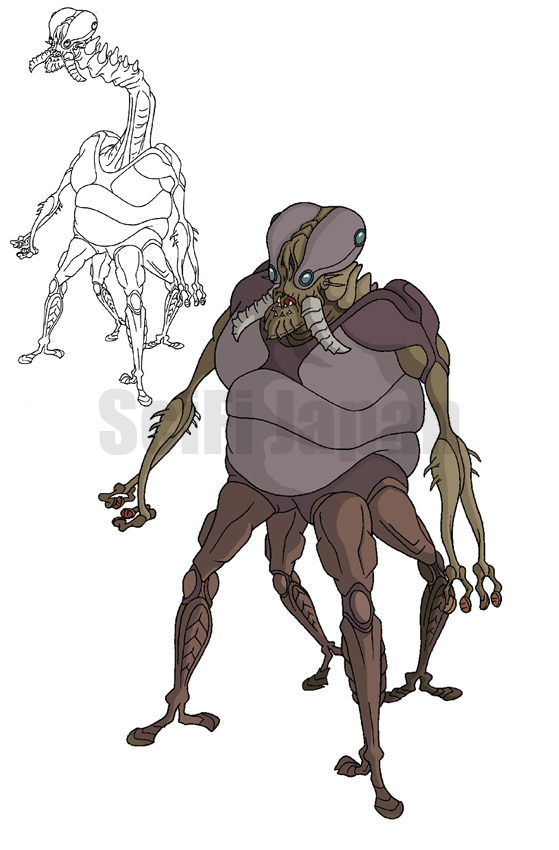 The Leviathan Aliens would return to launch the MONSTER WAR. Photo courtesy of Sony Pictures Family Ent.© 1998 Toho Co., Ltd. /Adelaide Productions, Inc.
The Leviathan Aliens would return to launch the MONSTER WAR. Photo courtesy of Sony Pictures Family Ent.© 1998 Toho Co., Ltd. /Adelaide Productions, Inc. #107: LEVIATHAN
Writer: Michael Reaves
Director: Tim Eldred Original
FOX Air Date: 11/14/98 Dr Alexander
Preloran and his assistants Dr Hans Sopler and Dr Ted Hoffman discover the Leviathan, an alien spacecraft that has been submerged in the Hazard Abyss of the South Pacific Ocean for more than 65 million years. While investigating the ship, the scientists are stunned to find machinery on the Leviathan is active… and the alien crew still lives.
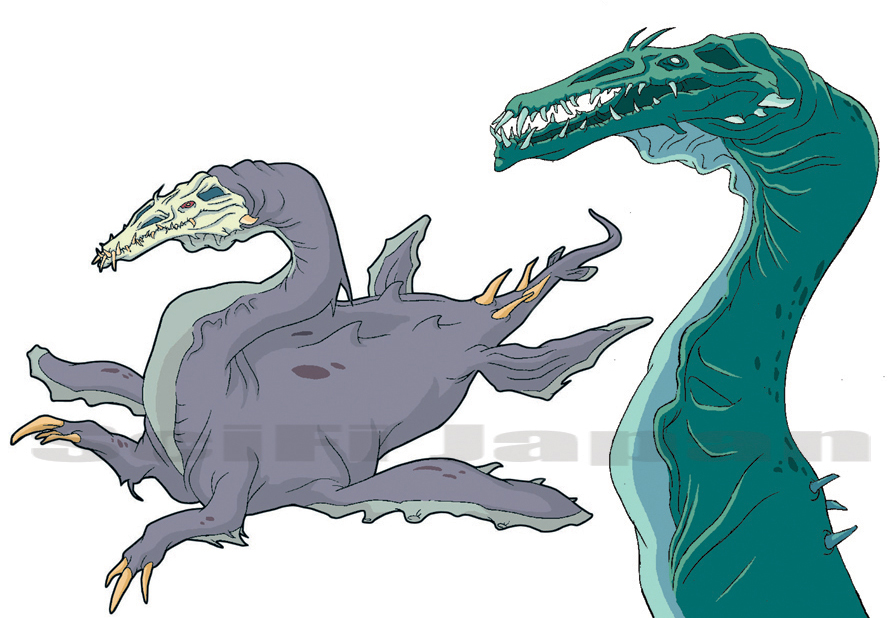 The giant plesiosaur Cryptocleidus. Photo courtesy of Sony Pictures Family Ent.© 1998 Toho Co., Ltd./Adelaide Productions, Inc.
The giant plesiosaur Cryptocleidus. Photo courtesy of Sony Pictures Family Ent.© 1998 Toho Co., Ltd./Adelaide Productions, Inc.Days later, H.E.A.T. tracks the source of a series of Tachyon transmissions to the Hazard Abyss. When they learn from Preloran’s crew that the scientists never returned from their expedition, H.E.A.T. launches a rescue mission.
As their submersible approaches the Leviathan, the team is attacked by a gigantic plesiosaur called Cryptocleidus. Godzilla swims to the rescue and H.E.A.T. manages to dock with the alien craft. Once aboard the ship, H.E.A.T. meets with the Leviathan Aliens — six-limbed, telepathic beings with glowing yellow eyes and extending necks — their new ally Dr Preloran, and the Reptilians, guard dog aliens bred from aquatic dinosaurs.
The Leviathan Aliens have used their powers to absorb Sopler and Hoffman’s knowledge, and have decided that the earth will make a perfect colony for their people. Nick manages to destroy this ship’s controls. Preloran has a change of heart and sacrifices himself to help the others escape before the ship apparently self-destructs.
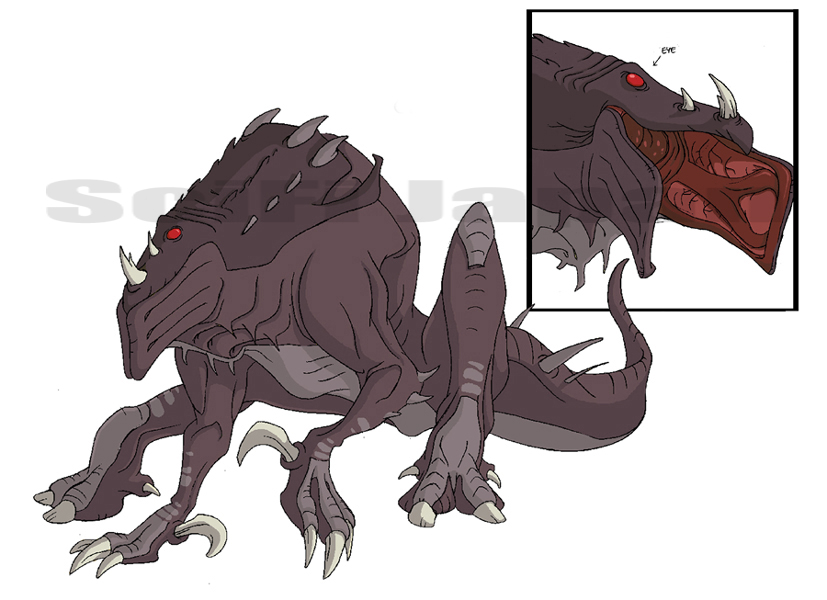 The Reptilians are the guard dogs of the Leviathan. Photo courtesy of Sony Pictures Family Ent.© 1998 Toho Co., Ltd./Adelaide Productions, Inc.
The Reptilians are the guard dogs of the Leviathan. Photo courtesy of Sony Pictures Family Ent.© 1998 Toho Co., Ltd./Adelaide Productions, Inc.A pair of Cryptocleidi waits to intercept the escape pod as it travels to the surface, but Godzilla is still around and makes short work of the prehistoric reptiles. On the surface, H.E.A.T. can finally relax, but no one notices that Sopler and Hoffman’s eyes have a yellow glow…
Note: LEVIATHAN sets up the groundwork for MONSTER WAR by introducing characters, aliens, and monsters that will return for the three-part story.
Guest voice actor Ron Perlman’s first major role was as `Vincent` on the popular television series BEAUTY AND THE BEAST (1987). He has appeared in SLEEPWALKERS (1982), as `Clayface` in BATMAN: THE ANIMATED SERIES (1992), ALIEN RESURRECTION (1997), BLADE II (2002), STAR TREK: NEMESIS (2002), HELLBOY (2004), and his upcoming credits include CONAN: RED NAILS (2007) and HELLBOY 2: THE GOLDEN ARMY (2007).
Also guest starring in this episode was actor Kenneth Mars. Mars is best known as Police Inspector Hans Wilhelm Friedrich Kemp in Mel Brooks` classic YOUNG FRANKENSTEIN (1974). Among his many, many credits are Brooks` THE PRODUCERS (1968), WHAT`S UP DOC? (1972), THE PARALLAX VIEW (1974), and over a hundred television appearances.
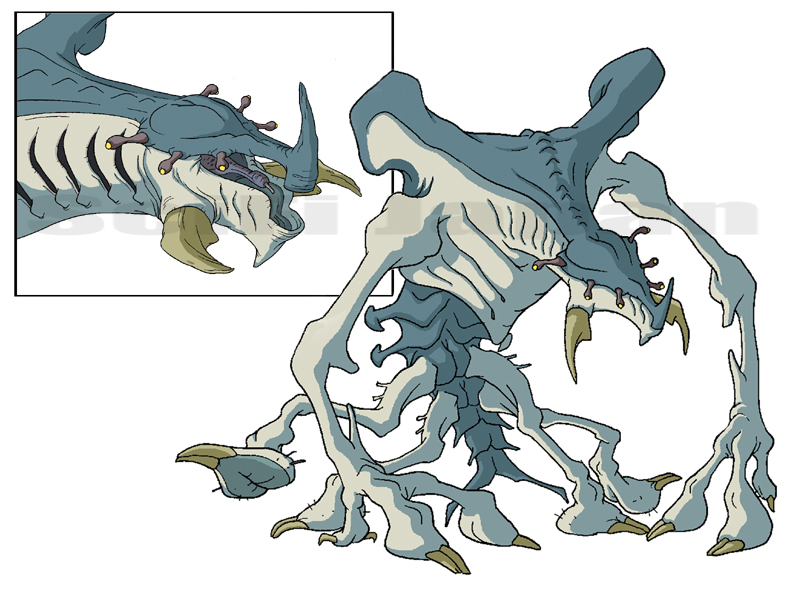 The bizarre Crackler was drawn from the subconscious of a sleeping man. Photo courtesy of Sony Pictures Family Ent.© 1998 Toho Co., Ltd./Adelaide Productions
The bizarre Crackler was drawn from the subconscious of a sleeping man. Photo courtesy of Sony Pictures Family Ent.© 1998 Toho Co., Ltd./Adelaide Productions#108: WHAT DREAMS MAY COME
Writer: Len Wein
Director: Frank Squillace
Original FOX Air Date: 11/7/98
A giant energy monster called the Crackler suddenly appears in New York. Using blasts of electricity and its massive fists, the beast destroys an apartment building and the MTA bus yard, and even battles Godzilla to a standstill.
Searching for a common link between the locations of the Crackler attacks, Randy and Elsie learn of a MTA employee named Sidney Walker. The pair tracks Walker to the Manhattan Neural Research Center, where he is undergoing Theta wave therapy to cure his insomnia, and learn that Walker is a meek 45 year-old who has suppressed his anger all of his life. The experimental therapy has put Walker in a deep sleep and unleashed his subconscious rage in the form of a terrible monster.
Note: The episode was written by comic book legend Len Wein, who has worked on most of the major characters from Marvel and DC Comics. He is also the co-creator of DC’s popular Swamp Thing as well as Wolverine, Storm, Nightcrawler, and Colossus of the X-Men.
WHAT DREAMS MAY COME featured the work of a pair of great character actors. Estelle Harris has appeared in dozens of films and TV shows and is best known as George Costanza’s mother on the hit series SEINFELD, and ‘Mrs Potato Head’ in Pixar’s TOY STORY 2 (1999). Also performing in this episode is the late Steve Susskind, whose credits include FRIDAY THE 13TH PART III (1992), MARRIED WITH CHILDREN (1987), MR SHOW (1998), and MONSTERS INC (2001).
This episode is available on DVD as part of GODZILLA: THE SERIES – MONSTER MAYHEM.
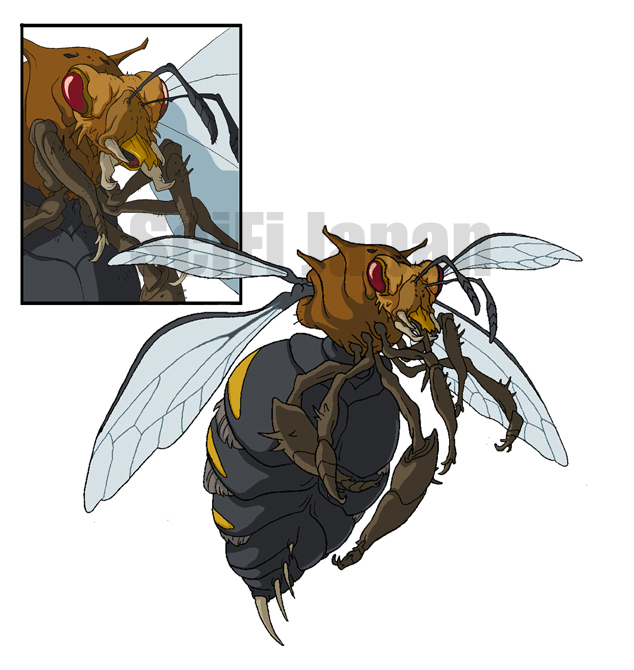 The Queen Bee led a hive of mutant bees.Photo courtesy of Sony Pictures Family Ent. © 1998 Toho Co., Ltd./Adelaide Productions, Inc.
The Queen Bee led a hive of mutant bees.Photo courtesy of Sony Pictures Family Ent. © 1998 Toho Co., Ltd./Adelaide Productions, Inc.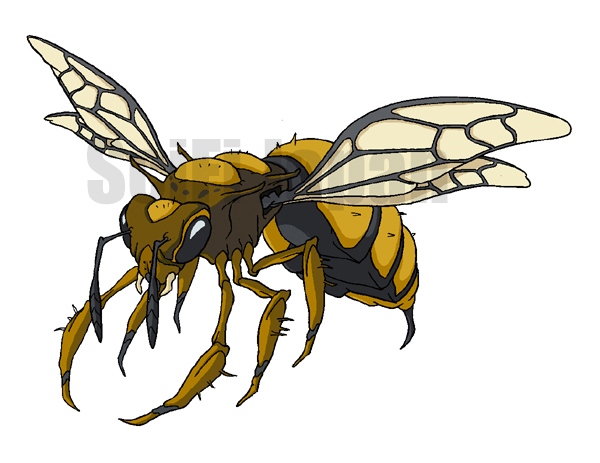 A Giant Mutant Bee. Photo courtesy of Sony Pictures Family Ent.© 1998 Toho Co., Ltd. /Adelaide Productions, Inc.
A Giant Mutant Bee. Photo courtesy of Sony Pictures Family Ent.© 1998 Toho Co., Ltd. /Adelaide Productions, Inc.#109: HIVE
Writer: Marv Wolfman
Director: Sam Liu
Original FOX Air Date: 11/21/98
Santa Marta, a popular island resort, has been evacuated following a devastating volcanic eruption. Investigating reports that the island has been overrun with mutant carnivorous plants, H.E.A.T. journeys to Santa Marta and discovers a bizarre new ecosystem created by irradiated lava.
As Randy, Nick and Godzilla battle the mutant vines, Craven and Monique find a massive bee hive beneath an abandoned hotel. The team is attacked by the Mutant Bees, and Godzilla battles the Queen in the heart of the erupting volcano.
Note: As with the previous episode, HIVE was written by an acclaimed comic book author. Marv Wolfman is the co-creator of the New Teen Titans, Blade, and the mini-series Crisis On Infinite Earths, and has worked on many of the top characters from DC and Marvel.
The Queen Bee also returns in MONSTER WAR.
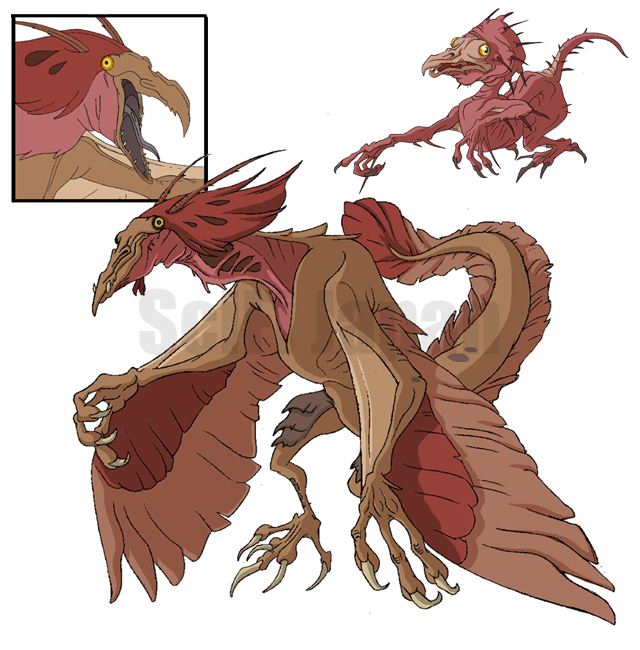 The flying monster Quetzalcoatl and one of the Baby Qs. Photo courtesy of Sony Pictures Family Ent. © 1998 Toho Co., Ltd. /Adelaide Productions, Inc.
The flying monster Quetzalcoatl and one of the Baby Qs. Photo courtesy of Sony Pictures Family Ent. © 1998 Toho Co., Ltd. /Adelaide Productions, Inc. #110: BIRD OF PARADISE
Writer: Neil Ruttenberg
Director: Alan Caldwell
Original FOX Air Date: 12/5/98
A giant flying lizard, believed to be the legendary Quetzalcoatl, emerges from a dormant volcano in Southern Mexico. When it begins destroying local villages, H.E.A.T. is called into action by rugged ornithologist Lawrence Cohen, who happens to be Elsie’s ex-fiancé.
As the team approaches the volcano, Quetzalcoatl strikes with its napalm fire breath, and Elsie is captured by the creature. Cohen discovers that Quetzalcoatl is nesting and its eggs are about to hatch.
As Godzilla arrives to battle the flying monster, Cohen and H.E.A.T. attempt to rescue Elsie from a brood of ferocious hungry Qs.
Note: As an in-joke, the character of Elsie’s fiancé was named after the writer/director of the movie Q: THE WINGED SERPENT (1982), which also featured a giant Quetzalcoatl nesting in New York.
Lawrence Cohen is voiced by actor Tate Donovan, who has appeared in films like LOVE POTION NO. 9 (1992) and SWORDFISH (2001), and performed the title role in Disney’s animated movie HERCULES (1997).
BIRD OF PARADISE is available on the GODZILLA: THE SERIES – MONSTER MAYHEM DVD.
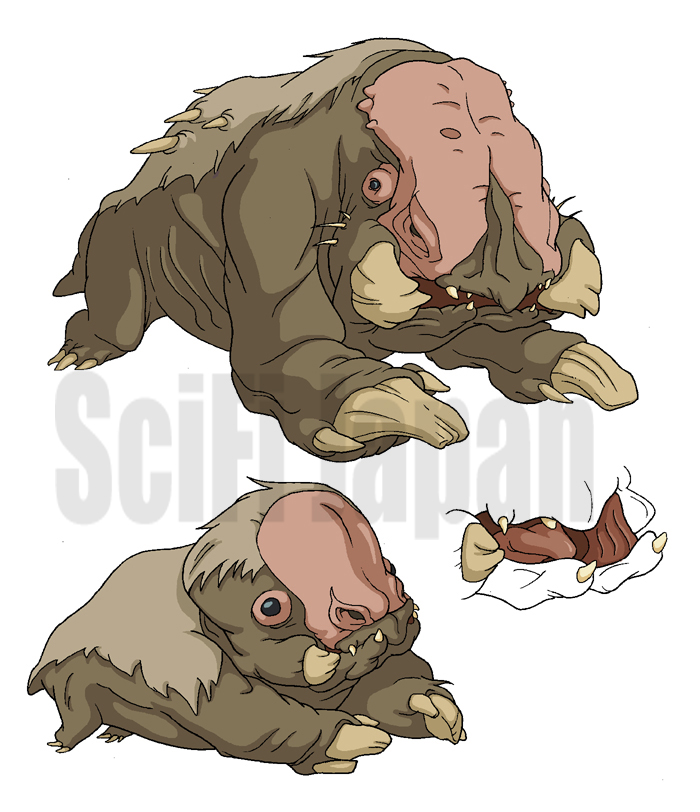 An Ice Borer and a Baby Borer. Photo courtesy of Sony Pictures Family Ent. © 1998 Toho Co., Ltd. /Adelaide Productions, Inc.
An Ice Borer and a Baby Borer. Photo courtesy of Sony Pictures Family Ent. © 1998 Toho Co., Ltd. /Adelaide Productions, Inc.#111: FREEZE
Writer: Barry Hawkins
Director: Chris Berkeley
Original FOX Air Date: 3/13/99
A group of oil company researchers disappear in the South Pole, and Audrey is assigned to cover the rescue expedition. But when Nick finds out that the company’s slick p.r. flack Chad Gordon is going along, he gets jealous and arranges for H.E.A.T. to accompany them.
H.E.A.T. soon discovers the missing researchers were attacked by a pack of mutant Ice Borers, giant hybrid moles whose incredibly high body temperature allows them to tunnel quickly through the ices and pull their prey below the surface. Godzilla battles the beasts, but the Ice Borers melt the ice beneath his feet and he disappears into the freezing waters below.
The Ice Borers attack and the group become trapped on a deteriorating icy plateau. H.E.A.T. cobbles together liquid nitrogen rifles that counteract the Ice Borers high metabolic rate and body temperatures, and Godzilla resurfaces to defeat the creatures.
Nick also exposes a dirty secret about the whole operation that Chad had tried to cover up.
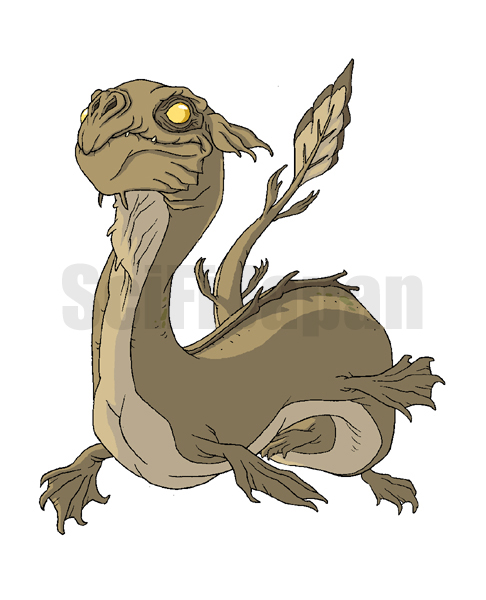 Baby Nessie gets kidnapped in DEADLOCH. Photo courtesy of Sony Pictures Family Ent. © 1998 Toho Co., Ltd. /Adelaide Productions, Inc.
Baby Nessie gets kidnapped in DEADLOCH. Photo courtesy of Sony Pictures Family Ent. © 1998 Toho Co., Ltd. /Adelaide Productions, Inc.#112: DEADLOCH
Writer: Steve Hayes
Director: Sam Liu
Original FOX Air Date: 2/6/99
H.E.A.T. receives a scratchy videotape from scientist Dr. Hugh Trevor, who claims his research institute has been attacked by the Loch Ness Monster. Nick thinks it’s just a publicity stunt to increase tourism, but Elsie is a gung-ho believer, and she convinces the team to make a trip to Trevor’s Pisces Institute on the shores of the famous Scottish lake.
After something huge attacks a submarine piloted by Nick and Randy, Nick is forced to admit that there is a creature in Loch Ness – although whether it’s the mythological beast or a new mutation remains to be seen. Elsie believes the Loch Ness Monster is not one immortal creature, but part of an ongoing race of living dinosaurs that surface every twenty years to breed.
When Nick and Randy discover that Dr. Trevor has kidnapped Nessie’s baby and plans to sell it, they signal Godzilla, who winds up helping the Loch Ness Monster free her offspring in a show of monster cooperation.
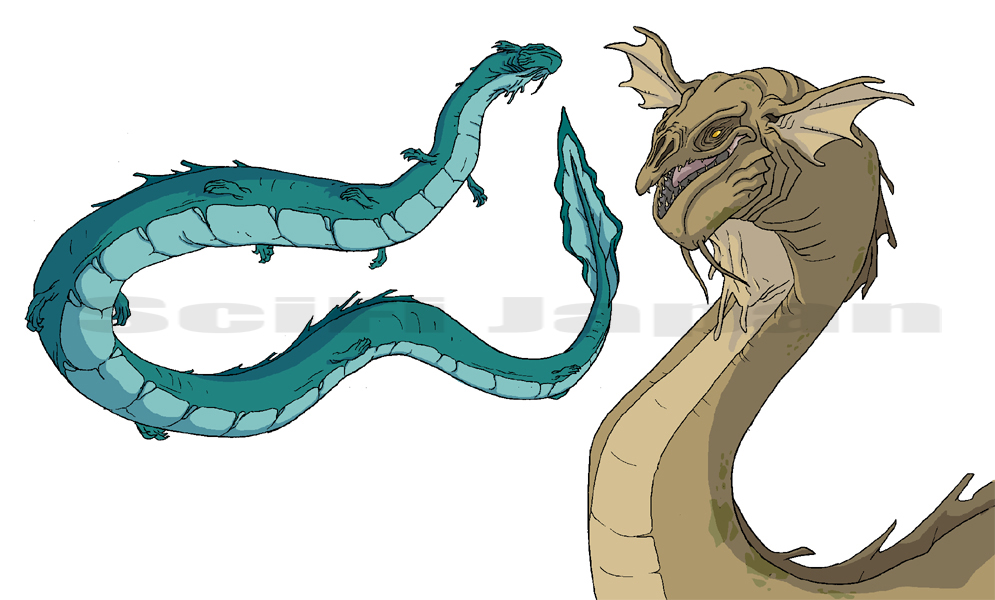 The legendary Loch Ness Monster as seen underwater (l) and a close-up shot from above the surface. Photo courtesy of Sony Pictures Family Ent. © 1998 Toho Co., Ltd. /Adelaide Productions, Inc.
The legendary Loch Ness Monster as seen underwater (l) and a close-up shot from above the surface. Photo courtesy of Sony Pictures Family Ent. © 1998 Toho Co., Ltd. /Adelaide Productions, Inc. Note: DEADLOCH revisits the familiar concept of a monster looking for their stolen offspring, an idea previously used in the British film GORGO (1961) and again in Nikkatsu’s GAPPA THE TRIPHIBIAN MONSTER (1967).
Two notable voice actors worked on this episode; Clive Revill (best known as ‘Alfred Pennyworth’ on BATMAN: THE ANIMATED SERIES) and the legendary Roddy McDowall. McDowall’s incredible list of credits include the classic film LASSIE COME HOME (1943), TWILIGHT ZONE (1960), CLEOPATRA (1963), FRIGHT NIGHT (1985), BATMAN: THE ANIMATED SERIES (1989), PINKY AND THE BRAIN (1996), A BUG’S LIFE (1998), and, of course, the PLANET OF THE APES movie series (1968-73). His final performance was as Dr. Trevor in GODZILLA: THE SERIES, as Roddy McDowall sadly passed away shortly after recording the role.
This episode is included on the GODZILLA: THE SERIES – MONSTER MAYHEM DVD.
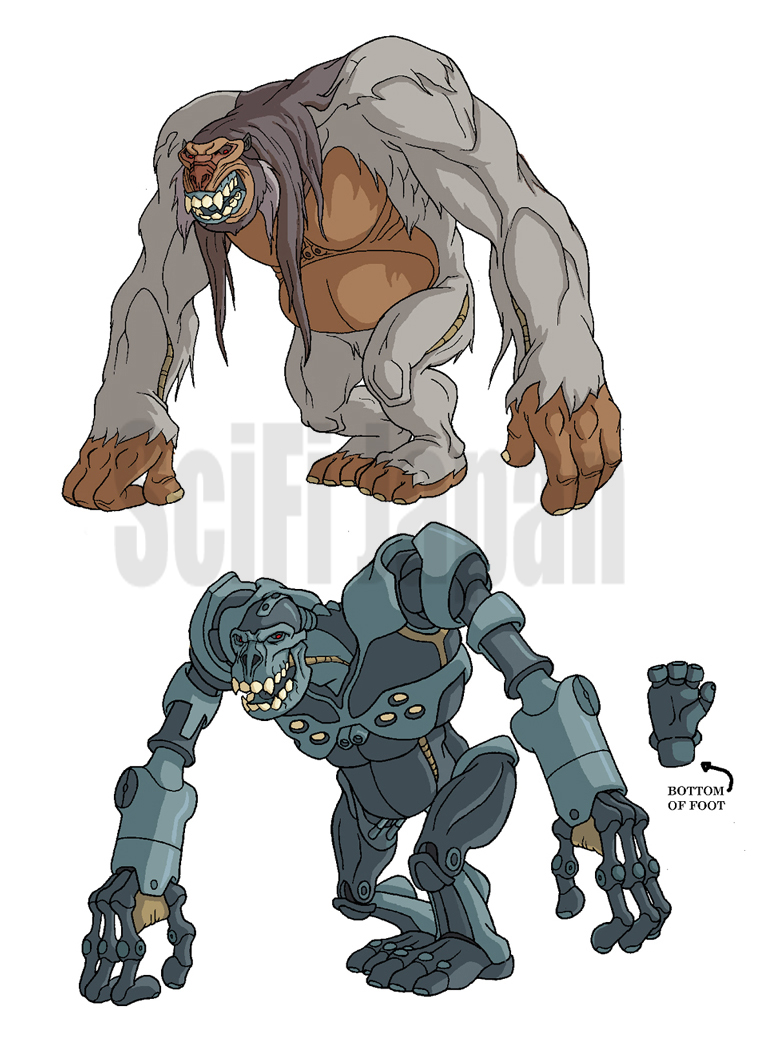 The Giant Albino Yeti of Japan is actually the Robo-Yeti in disguise. Photo courtesy of Sony Pictures Family Ent. © 1998 Toho Co., Ltd. /Adelaide Productions, Inc.
The Giant Albino Yeti of Japan is actually the Robo-Yeti in disguise. Photo courtesy of Sony Pictures Family Ent. © 1998 Toho Co., Ltd. /Adelaide Productions, Inc. #113: COMPETITION
Writer: Harry “Doc” Kloor
Director: Frank Squillace
Original FOX Air Date: 3/6/99
Godzilla goes to Japan!
A series of monster attacks near Mt Fuji prompts H.E.A.T. to look into the situation. At the site of the attacks, they discover residue of a weird bio-glue as well as large clumps of white, inorganic fur.
That night, H.E.A.T.’s base camp is attacked by a Giant Albino Yeti. Just as Nick and Craven are about to get stomped, Godzilla charges into the fray and sets the Yeti ablaze with his atomic breath. The Yeti’s flesh melts away, revealing that it is in fact a mechanical Robo-Yeti. The robot fires taser cables at Godzilla and begins to blast the monster with electric shocks. Craven tries to help Godzilla, but H.E.A.T. is suddenly surrounded by Japanese Self Defense Force soldiers.
While Godzilla and the Robo-Yeti continue their battle, the team is taken to the JSDF control center. There they are introduced to Dr Yukiko Ifukube, head of the Robotto Goeihei (Robot Protector) program and the inventor of Robo-Yeti. As she argues with H.E.A.T., the compound is attacked by the real threat… a giant glue-spitting snake called King Cobra.
Monique steals the Robo-Yeti controls and instructs the robot to stop King Cobra. The snake coils around Robo-Yeti and repeatedly bites the robot’s head. When Godzilla approaches, King Cobra spits its glue in Godzilla’s eyes, blinding him. Godzilla fires back with his radioactive breath and King Cobra flees. Using his sense of smell, Godzilla chases after the monster. With the two monsters heading for Tokyo, H.E.A.T. and Ifukube agree to work together. They repair Robo-Yeti, and add a special concoction that dissolves King Cobra’s glue.
Godzilla and King Cobra fight in the heart of Tokyo, and the battle soon turns against the blinded Godzilla. Robo-Yeti comes to the rescue but King Cobra coils around the robot and crushes it. Nick sprays Elsie’s formula in Godzilla’s eyes. With his site restored, Godzilla beats King Cobra into submission.
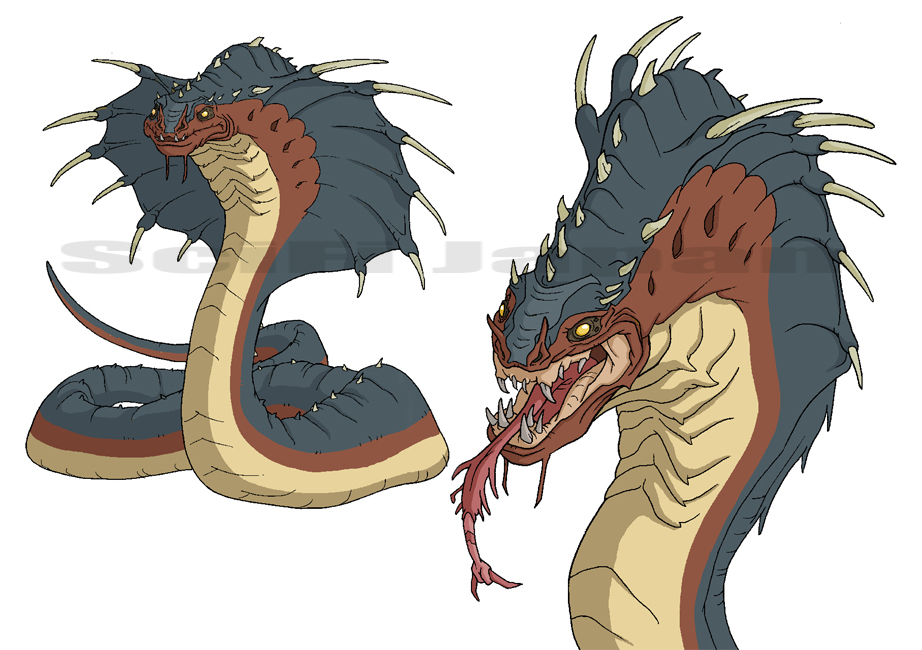 The real villain of COMPETITION... King Cobra. Photo courtesy of Sony Pictures Family Ent. © 1998 Toho Co., Ltd. /Adelaide Productions, Inc.
The real villain of COMPETITION... King Cobra. Photo courtesy of Sony Pictures Family Ent. © 1998 Toho Co., Ltd. /Adelaide Productions, Inc. Note: With COMPETITION taking place in Japan, there are numerous homages and in-jokes to the Toho films. The Albino Yeti/Robo-Yeti was inspired by KING KONG ESCAPES, the robot’s inventor is named after the legendary composer Akira Ifukube, there is an argument over whether the monster star’s real name is ‘Gojira’ or ‘Godzilla’, and a Japanese woman questions why Godzilla would come to Japan. All these little nods to the original movies make this episode a fun experience for longtime Godzilla fans.
While the Robo-Yeti is apparently trashed for good, King Cobra would return for MONSTER WAR and S.C.A.L.E.
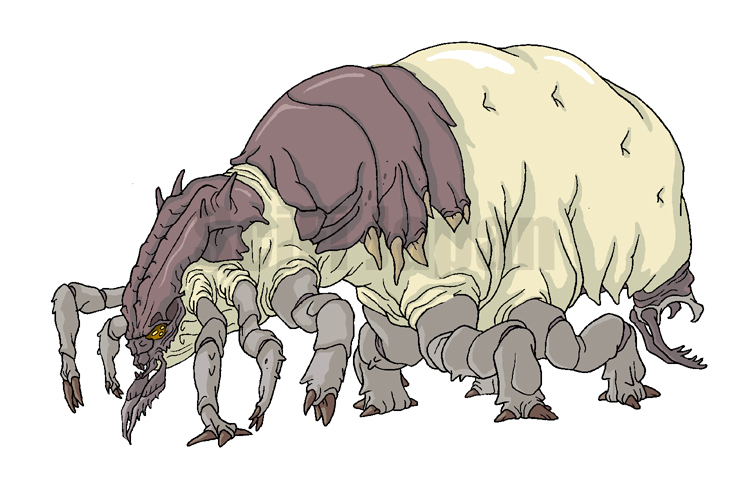 The Termite Queen. Photo courtesy of Sony Pictures Family Ent. © 1998 Toho Co., Ltd. /Adelaide Productions, Inc.
The Termite Queen. Photo courtesy of Sony Pictures Family Ent. © 1998 Toho Co., Ltd. /Adelaide Productions, Inc. #114: BUG OUT!
Writer: Brooks Wachtel
Director: Frank Squillace
Original FOX Air Date: 3/20/99
Godzilla is throwing infantile tantrums and H.E.A.T. is worried that he may become an uncontrollable danger to everyone around him. Nick tells this to Audrey in confidence, but she lets it slip during a live TV broadcast. Nick is furious, and doubts that he can ever trust Audrey again.
Meanwhile, something is eating away the Brazilian rainforest at a rate 100 times faster than the destruction caused by man. H.E.A.T. travels to Brazil and discover the damage is being caused by a mutant colony of giant termites. Godzilla arrives to battle the enormous bugs, but the Soldier Termites swarm and he is temporarily overpowered.
Craven develops a system of ultrasonic sound waves designed to disorient the termites and force them to attack each other. Nick and the others take the opportunity to enter the colony and destroy the Termite Queen and her eggs.
Godzilla returns, helping H.E.A.T. when they get trapped inside the termite tunnels.
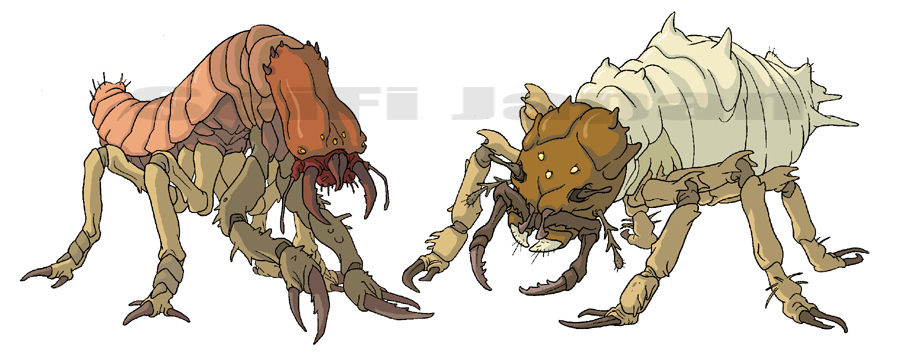 A Mutant Soldier Termite and a Mutant Worker Termite. Photo courtesy of Sony Pictures Family Ent. © 1998 Toho Co., Ltd. /Adelaide Productions, Inc.
A Mutant Soldier Termite and a Mutant Worker Termite. Photo courtesy of Sony Pictures Family Ent. © 1998 Toho Co., Ltd. /Adelaide Productions, Inc.
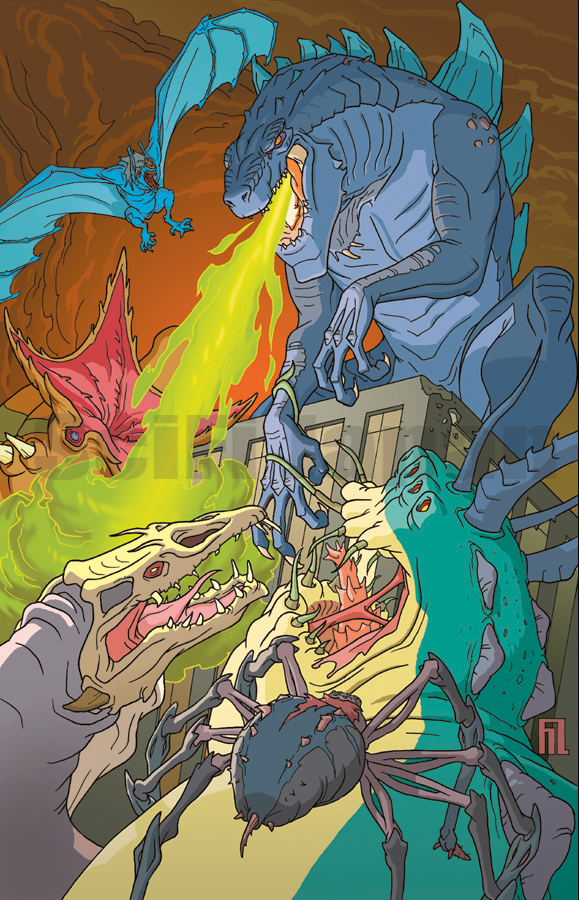 Godzilla takes on all comers in this publicity shot for MONSTER WAR. Photo courtesy of Sony Pictures Family Ent. © 1998 Toho Co., Ltd. /Adelaide Productions, Inc.
Godzilla takes on all comers in this publicity shot for MONSTER WAR. Photo courtesy of Sony Pictures Family Ent. © 1998 Toho Co., Ltd. /Adelaide Productions, Inc.#115: MONSTER WAR – Part 1
Writers: Marty Isenberg and Robert Skir
Director: Chris Berkeley
Original FOX Air Date: 2/13/99
Short fuses and hot tempers threaten to break up H.E.A.T. for good.
Nick and Craven trace a sudden spike in Tachyon transmissions to Sandy Point military base in New Jersey. They discover the Dr Sopler and Dr Hoffman have helped the military dredge up the Leviathan spacecraft – a project spearheaded by Major Hicks and Elsie! Feeling betrayed, Nick kicks Elsie off of H.E.A.T.
The team suddenly decides to investigate reports of a Giant Bat in Nigeria. Assisted by Nigerian General Ekwensi, Nick tracks down the new mutation. Godzilla attacks the Giant Bat but is wounded by the creature’s sonic screams. As the tide of battle turns in the Giant Bat’s favor, it stops the attack and flies off.
Randy and Monique pursue the beast aboard the Heat-Seeker while Nick returns to H.E.A.T. headquarters to meet up with Craven.
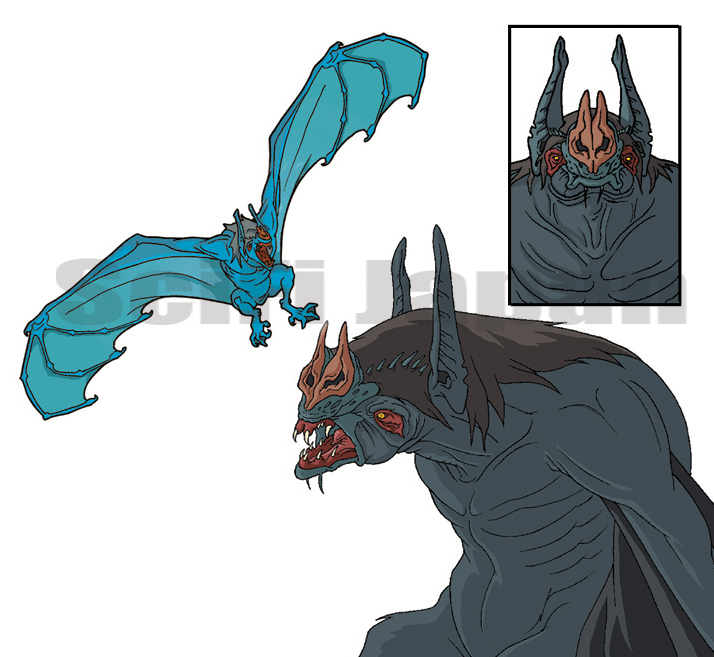 The Giant Bat battles Godzilla and HEAT in Nigeria. Photo courtesy of Sony Pictures Family Ent. © 1998 Toho Co., Ltd./Adelaide Productions
The Giant Bat battles Godzilla and HEAT in Nigeria. Photo courtesy of Sony Pictures Family Ent. © 1998 Toho Co., Ltd./Adelaide ProductionsThe surviving Leviathan Aliens had downloaded their brains into Dr. Hans Sopler and Dr. Ted Hoffman, and taken control of Elsie and all the military personnel at Sandy Point. Using their telepathic powers the aliens had toyed with H.E.A.T., keeping the team members at each other’s throats and out of the way long enough for the invaders to establish a powerful Tachyon transmitter at Site Omega on Isle Del Diablo in the South Pacific.
The Leviathan Aliens summon King Cobra, Crustaceous Rex, the Huge Rat, El Gusano and the Queen Bee to Site Omega and begin their plan to conquer the world.
Note: The voice of General Ekwensi was provided by guest actor Dennis Haysbert, who is best known as ‘President David Palmer’ on the FOX television series 24. He currently stars in the hit CBS show THE UNIT (2006), and his film credits include MAJOR LEAGUE (1989), LOVE FIELD (1992), HEAT (1995), and the upcoming Nelson Mandela story GOODBYE BAFANA (2006).
Another voice actor for MONSTER WAR was Patrick Labyorteaux. Labyorteaux has dozens of TV credits and was part of the main cast for the long-running shows LITTLE HOUSE ON THE PRAIRIE (1977) and JAG (1996).
#116: MONSTER WAR – Part 2
Writer: Steven Melching
Director: Sam Liu
Original FOX Air Date: 2/20/99
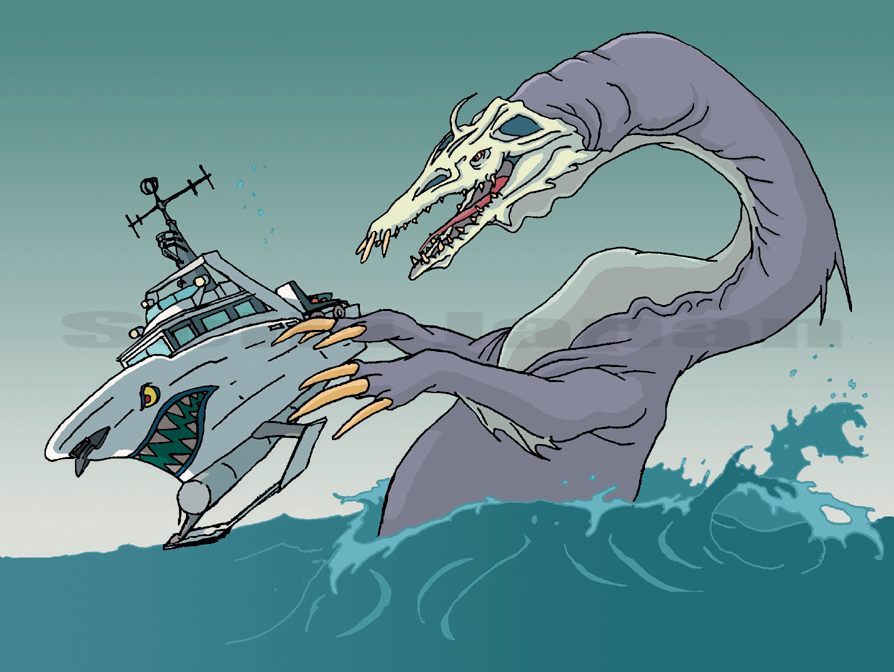 Cryptocleidus attacks the Heat-Seeker. Photo courtesy of Sony Pictures Family Ent. © 1998 Toho Co., Ltd. /Adelaide Productions, Inc.
Cryptocleidus attacks the Heat-Seeker. Photo courtesy of Sony Pictures Family Ent. © 1998 Toho Co., Ltd. /Adelaide Productions, Inc.Tracking the Giant Bat, Randy and Monique discover that Cryptocleidus, one of the aquatic dinosaurs that had guarded the Leviathan spaceship, is still alive and hungry! The pair is able to trick the monsters into fighting each other. From Site Omega, the Leviathan Aliens regain control of the Giant Bat and Cryptocleidus. The two beasts end their battle and obediently head for Isle Del Diablo.
Nick and Craven sneak into Sandy Point to try and rescue Elsie from the aliens. They make a terrifying discovery -- the Leviathan Aliens have reanimated the corpse of the first Godzilla and outfitted it with robotic parts, creating Cyber-Godzilla. Godzilla races to defend Nick, but is confused when he comes face-to-face with his own father. The aliens use the distraction to take control of Godzilla’s brain.
H.E.A.T. invades Site Omega but is quickly captured by Hicks and his men. They are taken to Sopler and Hoffman, who have begun to physically transform into Leviathan Aliens. The two hybrids announce that the monsters are being used to soften up mankind for the Leviathan invasion fleet. The Giant Bat attacks Paris… Cyber-Godzilla strikes at Tokyo… C-Rex invades London… Cryptocleidus comes ashore in Hong Kong… El Gusano tunnels up in Moscow… and Godzilla destroys the monuments of Washington DC.
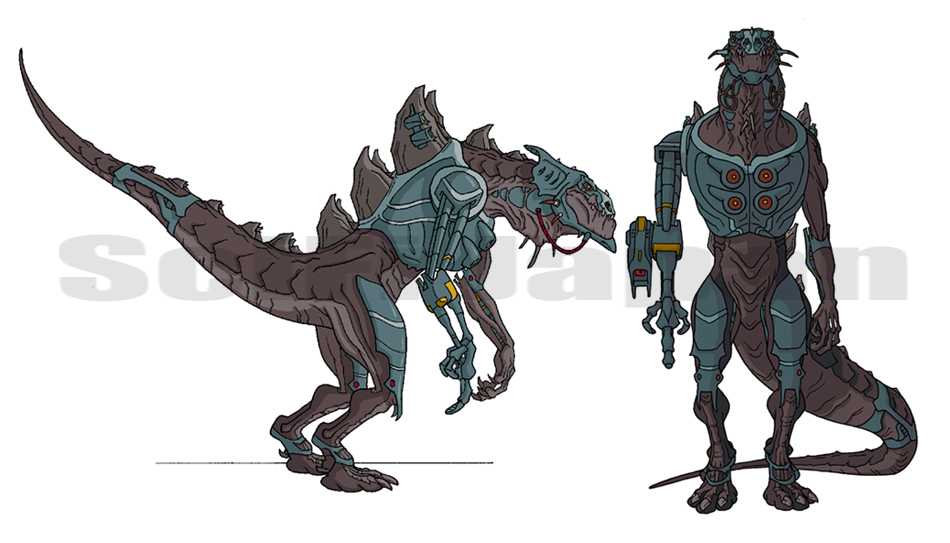 The aliens create Cyber-Godzilla from the corpse of the original Godzilla. Photo courtesy of Sony Pictures Family Ent. © 1998 Toho Co., Ltd. /Adelaide Productions, Inc.
The aliens create Cyber-Godzilla from the corpse of the original Godzilla. Photo courtesy of Sony Pictures Family Ent. © 1998 Toho Co., Ltd. /Adelaide Productions, Inc.
#117: MONSTER WAR – Part 3
Writer: Michael Reaves
Director: Alan Caldwell
Original FOX Air Date: 2/27/99
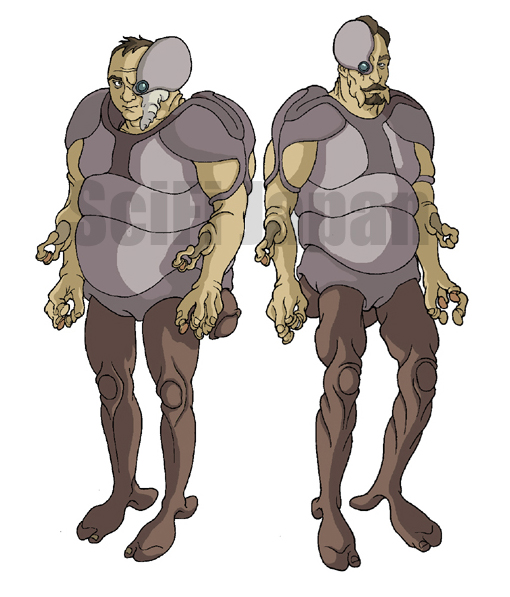 Dr Hoffman and Dr Sopler begin to change into Leviathan Aliens. Photo courtesy of Sony Pictures Family Ent. © 1998 Toho Co., Ltd. /Adelaide Productions, Inc.
Dr Hoffman and Dr Sopler begin to change into Leviathan Aliens. Photo courtesy of Sony Pictures Family Ent. © 1998 Toho Co., Ltd. /Adelaide Productions, Inc.The monsters are attacking everywhere! King Cobra joins the Giant Bat in Paris, the Queen Bee goes to Paris, and the Leviathan fleet arrives on earth.
H.E.A.T. escapes from the invaders. As Craven sets up a new Tachyon signal to disrupt the aliens’ hold on the monsters, Monique uses hypnosis to free Elsie’s mind.
Released from alien control, the earth monsters turn against their former masters. The Giant Bat attacks Site Omega but is quickly defeated by Cyber-Godzilla. The Leviathan fleet makes short work of the Queen Bee, El Gusano, C-Rex, King Cobra, and Cryptocleidus.
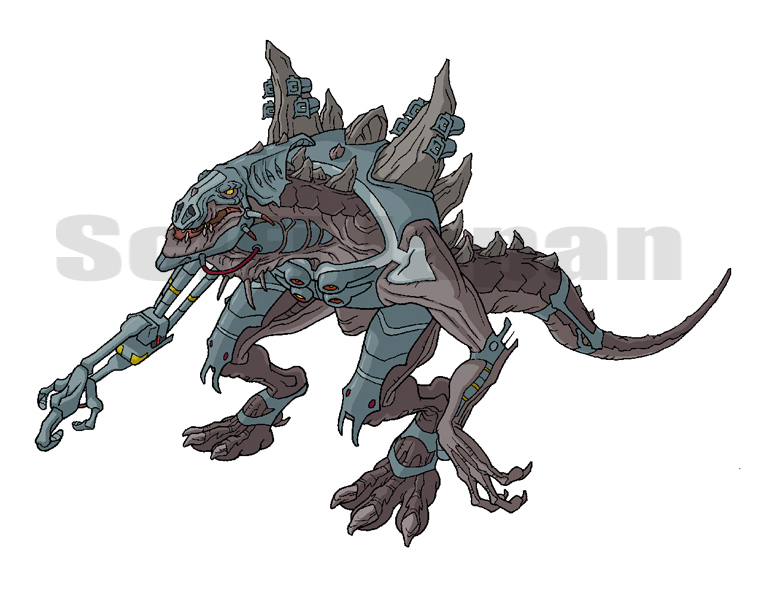 Father battles son in MONSTER WAR- PART 3. Photo courtesy of Sony Pictures Family Ent. © 1998 Toho Co., Ltd./Adelaide Productions, Inc.
Father battles son in MONSTER WAR- PART 3. Photo courtesy of Sony Pictures Family Ent. © 1998 Toho Co., Ltd./Adelaide Productions, Inc.H.E.A.T. pilots an alien fighter with Elsie’s help and blasts the main Tachyon generator at Site Omega. Meanwhile, Godzilla tears Cyber-Godzilla to pieces. Their weapons destroyed, the Leviathan Aliens sound the retreat and flee back into space.
With most of the monsters now subdued, Major Hicks designates Site Omega as “Monster Island”, a containment facility where the beasts will now be kept from doing any further harm.
Note: With an alien invasion storyline featuring nine different monsters, the three-part MONSTER WAR is an obvious tip of the hat to the classic Godzilla film DESTROY ALL MONSTERS.
In 2004, Sony Pictures Home Entertainment chose this storyline for their first DVD release from the show; GODZILLA: THE SERIES – THE MONSTER WARS TRILOGY.
#118: AN EARLY FROST
Writer: Craig Miller
Director: Sam Liu
Original FOX Air Date: 5/8/99
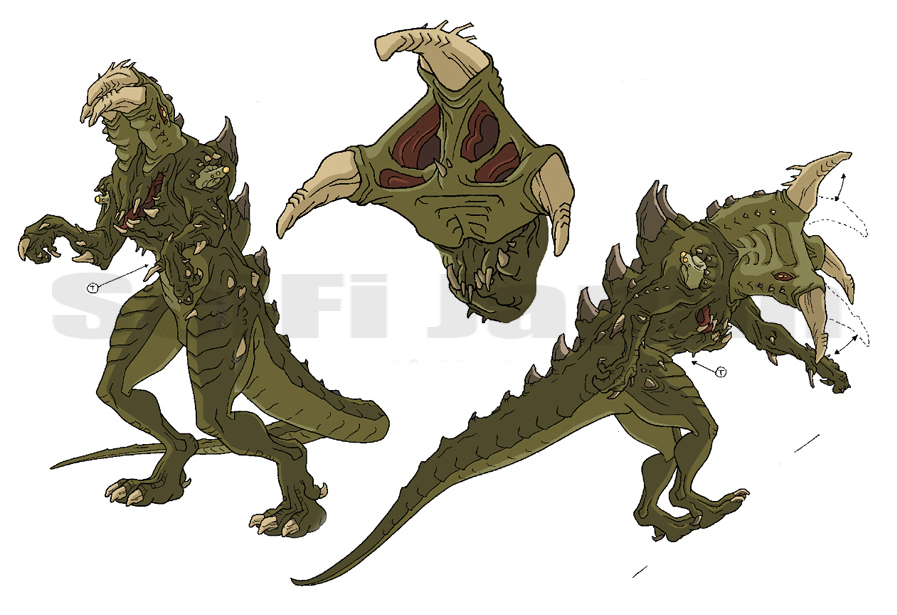 Multiple views of the Chameleon, including a close-up look at what may be the weirdest face of any Godzilla foe. Photo courtesy of Sony Pictures Family Ent. © 1998 Toho Co., Ltd. /Adelaide Productions, Inc.
Multiple views of the Chameleon, including a close-up look at what may be the weirdest face of any Godzilla foe. Photo courtesy of Sony Pictures Family Ent. © 1998 Toho Co., Ltd. /Adelaide Productions, Inc.When Godzilla goes on a rampage in New York City, Major Hicks, Nick, Elsie, and Craven are recruited to defeat the monster. Monique and Randy, not part of the team that stopped the original Godzilla, are excluded from the government’s plan and so work outside the group to solve the mystery behind Godzilla’s attacks.
Phillipe Roache arrives from France and tells Monique they have been ordered to kill Godzilla.
Nick discovers that Godzilla is not guilty… the true culprit is the Chameleon, a bizarre Godzilla-like creature genetically engineered by Nick’s old nemesis Cameron Winter. As H.E.A.T. and Godzilla battle the Chameleon, Randy must prevent Phillipe and Monique from carrying out their orders.
In the end, Monique convinces Phillipe to turn the other cheek in regards to Godzilla. He agrees and instructs her to stay with H.E.A.T… leaving Monique to wonder if that is a reward or a punishment.
#119: WHAT A LONG, STRANGE TRIP IT’S BEEN
Writer: Janna King Kalichman
Director: Brad Rader
Original FOX Air Date: 1/15/00
Near a factory along the Hudson River, Godzilla engages in battle with Bacillus, an enormous, spongy-green, mucus-covered monster. As H.E.A.T. watches, Bacillus slices open Godzilla’s side and infects the monster with Mutant Bacteria. The only hope for is Godzilla is for Nick and Monique to enter Godzilla’s bloodstream to eradicate the bacteria.
Using Godzilla’s antibodies, H.E.A.T. concocts an antibiotic to weaken Bacillus. Godzilla roasts the giant germ with a blast of his atomic breath.
Note: Entering a body to fight a virus or parasitic threat is a theme that has been used in many science fiction adventures, including the movies FANTASTIC VOYAGE (1966) and GAMERA VS. MONSTER X (1970) and even an episode of the television show ULTRASEVEN (1967).
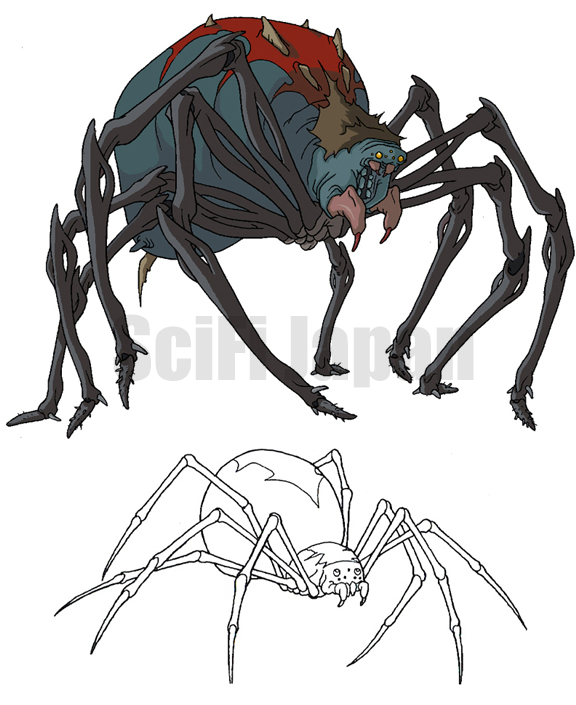 The Giant Mutant Widow Spider and one of the Hybrid Spiders. Photo courtesy of Sony Pictures Family Ent. © 1998 Toho Co., Ltd./Adelaide Productions, Inc
The Giant Mutant Widow Spider and one of the Hybrid Spiders. Photo courtesy of Sony Pictures Family Ent. © 1998 Toho Co., Ltd./Adelaide Productions, Inc#120: WEB SITE
Writer: Marsha Griffin
Director: Chris Berkeley
Original FOX Air Date: 5/1/99
Craven presents his latest invention to H.E.A.T.: the Sonic Signaler, a device which in theory will allow the team to communicate with Godzilla by breaking down the monster’s “language” into ultra-sonic signals.
The White House asks Nick and H.E.A.T. to investigate a massive and inexplicable population explosion of tiny hybrid spiders on Palma in the Canary Islands, site of a US military base. When H.E.A.T. arrives on Palma they are surprised to see Major Hicks, who claims the Pentagon sees the spiders as a threat to national security. Everyone is puzzled by the sheer number of spiders that inhabit the island… how could a new species evolve so quickly?
The answer is soon revealed; a Giant Mutant Widow Spider has been laying millions of eggs.
Godzilla battles the Giant Spider when it attacks the military base. Craven complicates things when he tests the Sonic Signaler. The sounds confuse Godzilla, allowing the spider to shower the monster with industrial strength webbing and make its escape.
The team discovers that a chemical derivative of the chrysanthemum is toxic to the deadly hybrid spiders. They develop a bug bomb that leaves the arachnids paralyzed while Godzilla takes care of the Giant Mutant Widow Spider.
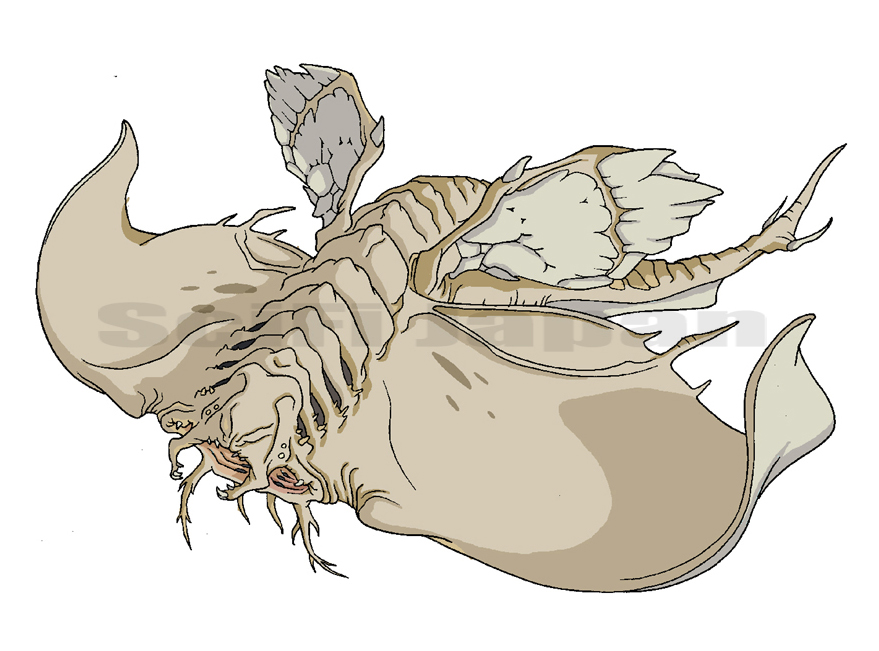 The Mutant Manta ray. Photo courtesy of Sony Pictures Family Ent. © 1998 Toho Co., Ltd./Adelaide Productions, Inc.
The Mutant Manta ray. Photo courtesy of Sony Pictures Family Ent. © 1998 Toho Co., Ltd./Adelaide Productions, Inc.
#121: WEDDING BELLS BLEW
Writer: Steve Cuden
Director: Alan Caldwell
Original FOX Air Date: 1/22/00
Elsie is frazzled because her parents Jack and Peg are in town for her younger sister Kate’s wedding. The spoiled Kate is the apple of her parents’ eye, while they don’t understand Elsie’s work with H.E.A.T. and believe she is a screw up who can’t take care of herself.
When a distress call comes from a local aquarium, H.E.A.T. finds a gigantic flying Mutant Manta Ray that breathes freezing air. Efforts to contain the creature fail, and Elsie must leave the wedding to help H.E.A.T. and Godzilla defeat the Mutant Manta Ray.
While Kate whines that Elsie ruined the wedding, her parents finally see how smart and courageous their eldest daughter truly is.
Note: Jack Chapman was played by Robert Forster, an Oscar-nominated actor for his role in Quentin Tarantino’s JACKIE BROWN (1997). His credits include the remake of PSYCHO (1998), MULHOLLAND DR (2001), CHARLIE’S ANGELS: FULL THROTTLE (2003), HUFF (2005) and the upcoming Korean monster movie D-WAR (2007).
In the script for WEDDING BELLS BLEW, the monster was written as a giant bird called the “Bird of Prey”. When this show went into production the GODZILLA: THE SERIES producers decided to change the creature to a manta ray since other episodes also featured monster birds.
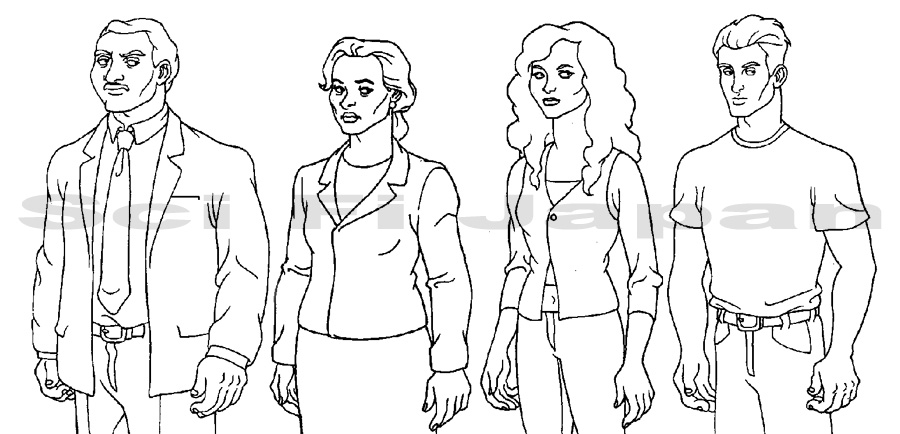 The Chapman clan; Jack, Peg, Kate, and Kate`s fiance Bradley. Photo courtesy of Sony Pictures Family Ent. © 1998 Toho Co., Ltd. /Adelaide Productions, Inc.
The Chapman clan; Jack, Peg, Kate, and Kate`s fiance Bradley. Photo courtesy of Sony Pictures Family Ent. © 1998 Toho Co., Ltd. /Adelaide Productions, Inc.
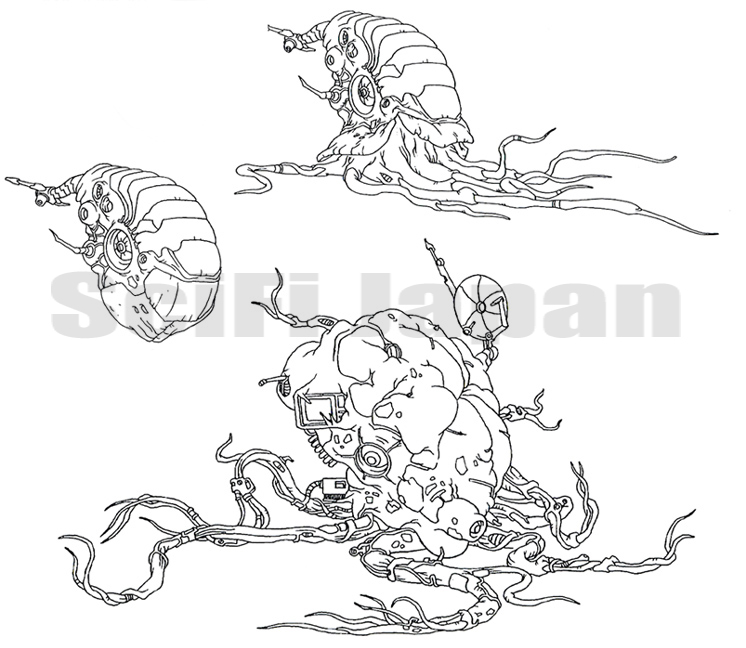 Multiple stages of the Techno-Sentient. Photo courtesy of Sony Pictures Family Ent. © 1998 Toho Co., Ltd./Adelaide Productions, Inc.
Multiple stages of the Techno-Sentient. Photo courtesy of Sony Pictures Family Ent. © 1998 Toho Co., Ltd./Adelaide Productions, Inc.#122: JUGGERNAUT
Writers: Tom Pugsley and Greg Klein
Director: Frank Squillace
Original FOX Air Date: 7/31/99
The Techno-Sentient, a mysterious object from outer space, lands on Earth and fuses itself with any mechanical device it comes in contact with. Attacking an electronic equipment store, the creature becomes an 8-foot tall amalgam of assorted parts. It next strikes at a construction site, where it absorbs the machinery and grows to Godzilla-like proportions. Tapping into the internet, the Techno-Sentient learns about the earth, mankind, and the location of weapons of mass destruction.
H.E.A.T. pursues the Techno-Sentient to Fort McKenzie, where the creature heads straight for the base’s nuclear arsenal. Godzilla tries to stop the alien, but the military opens fire on both monsters and gives the Techno-Sentient the opportunity to wrap itself around the launch tower of a nuclear missile.
Godzilla pounds on the Techno-Sentient, locking the creature with the missile, which is then launched into space and detonated by Randy.
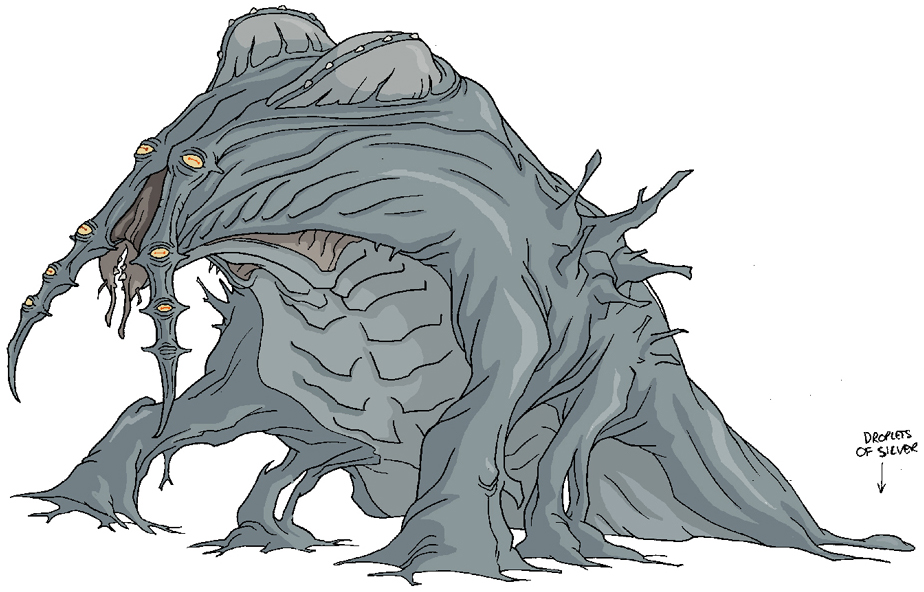 The giant Silver Hydra. Photo courtesy of Sony Pictures Family Ent. © 1998 Toho Co., Ltd./Adelaide Productions, Inc.
The giant Silver Hydra. Photo courtesy of Sony Pictures Family Ent. © 1998 Toho Co., Ltd./Adelaide Productions, Inc.
#123: SHAFTED
Writer: Robin Russin
Director: Brad Rader
Original FOX Air Date: 1/29/00
While in Blind Rock, Wyoming for a funding presentation, H.E.A.T. meets a hysterical girl named Meg, whose brothers Steven and Kevin disappeared into an old abandoned mine shaft. Monique is forced to baby-sit Meg topside while the others search for the boys.
The team splits up, and Randy and Craven find the boys nearly encased in silver cocoons. Meanwhile, Nick and Elsie are attacked by two-headed liquid metal creatures called the Silver Hydra which eventually merge into a single giant monster. Elsie is hit with a volley from the creature and is soon encased just like Meg’s brothers. Using a palm laser of Craven’s, Elsie and the boys are freed only to come face-to-face with the Silver Hydra again.
Godzilla shows up to save the day, but is encased in silver himself. H.E.A.T. floods the mine with freezing water, defeating the Silver Hydra and allowing Godzilla to break free of his silver cast.
Note: While teaching Meg some self-defense techniques, Monique tells the young girl, “Rule #1 of combat – Size Matters.”
N.I.G.E.L. survives an episode for the first time, mainly because he does not appear in it!
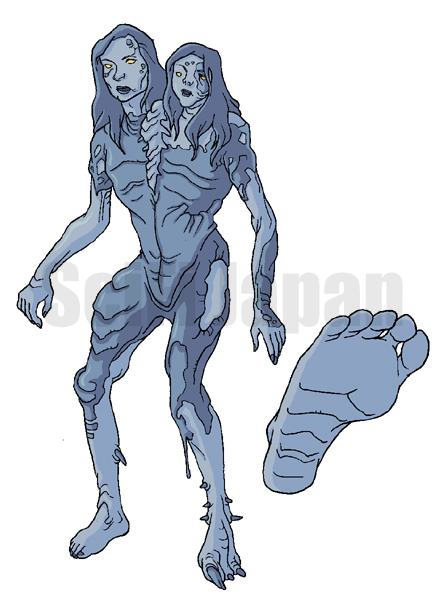 The DNA Mimic becomes a giant two-headed Elsie. Photo courtesy of Sony Pictures Family Ent. © 1998 Toho Co., Ltd./Adelaide Productions, Inc.
The DNA Mimic becomes a giant two-headed Elsie. Photo courtesy of Sony Pictures Family Ent. © 1998 Toho Co., Ltd./Adelaide Productions, Inc.#124: TRUST NO ONE
Writer: Greg Pincus
Director: Nathan Chew
Original FOX Air Date: 8/14/99
Following up on information provided by Phillipe, the H.E.A.T. team investigates a seemingly abandoned laboratory deep in the Amazon jungle. Years earlier, scientists at the lab had developed a protoplasmic blob of pure DNA capable of mimicking any living being by merely touching it.
H.E.A.T. encounters this DNA Mimic, which soon turns the team members against each other by creating doubt over who is real and who is not. The group must put aside their fears and work together to stop the DNA Mimic from reproducing and creating a global master race.
When Godzilla arrives, the Mimic turns into a giant two-headed imitation of Elsie and then becomes a second Godzilla.
Note: This episode includes elements from John Campbell’s classic short story Who Goes There?, the basis for the two film versions of THE THING.
#125: LIZARD SEASON
Writer: Robert Skir
Director: Alan Caldwell
Original FOX Air Date: 3/11/00
Nefarious billionaire Cameron Winter breaks Dale, Hank, and Bill (from CAT AND MOUSE) out of prison and outfits them with a trio of experimental mecha built by Solstice Technolgies:
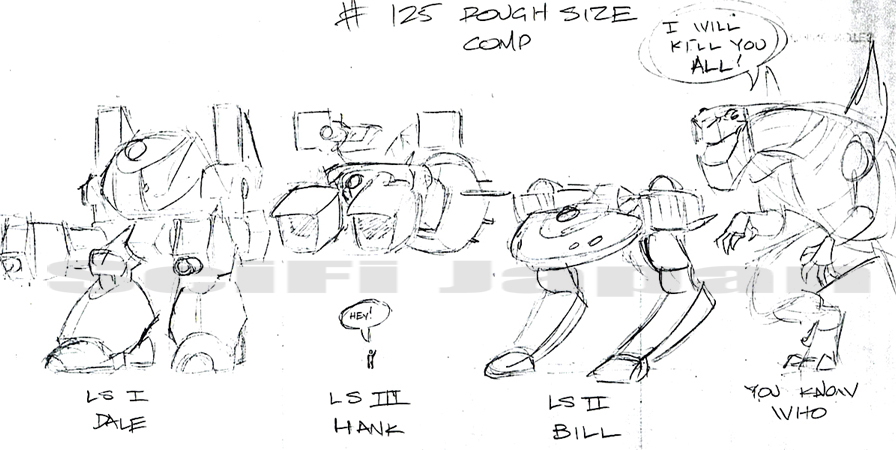 A rough sketch showing the scale of the Lizard Slayers in comparison to Godzilla. © 1998 Toho Co., Ltd. /Adelaide Productions, Inc.
A rough sketch showing the scale of the Lizard Slayers in comparison to Godzilla. © 1998 Toho Co., Ltd. /Adelaide Productions, Inc.Lizard Slayer 1: A humanoid-shaped upright battle tank equipped with titanium shielding, heat seeking missiles, and concussion-cannons that can pulverize a mountain.
Lizard Slayer 2: An aquatic vehicle with retractable legs for movement on land. It has a top speed of 40 knots, and enough firepower to sink a fleet of battleships.
Lizard Slayer 3: A flying tank with an array of missiles and lasers.
The three hunters launch an all-out assault on Godzilla and end up destroying everything in their path, including Hick’s military forces!
Note: The battle between Godzilla and the Lizard Slayers takes place in Cold Spring Harbor on Long Island Sound, the hometown of writer Robert Skir.
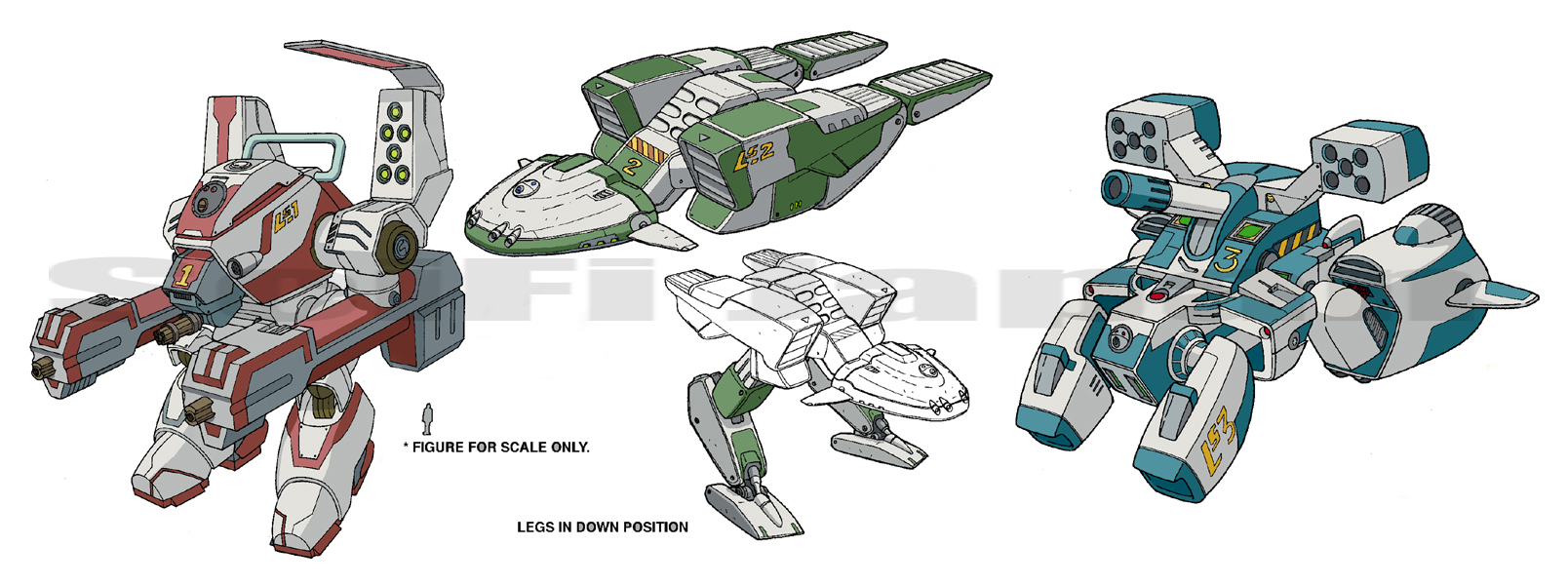 The three Lizard Slayers built by Cameron Winter and piloted by the hunters from CAT AND MOUSE. Photo courtesy of Sony Pictures Family Ent. © 1998 Toho Co., Ltd./Adelaide Productions, Inc.
The three Lizard Slayers built by Cameron Winter and piloted by the hunters from CAT AND MOUSE. Photo courtesy of Sony Pictures Family Ent. © 1998 Toho Co., Ltd./Adelaide Productions, Inc.
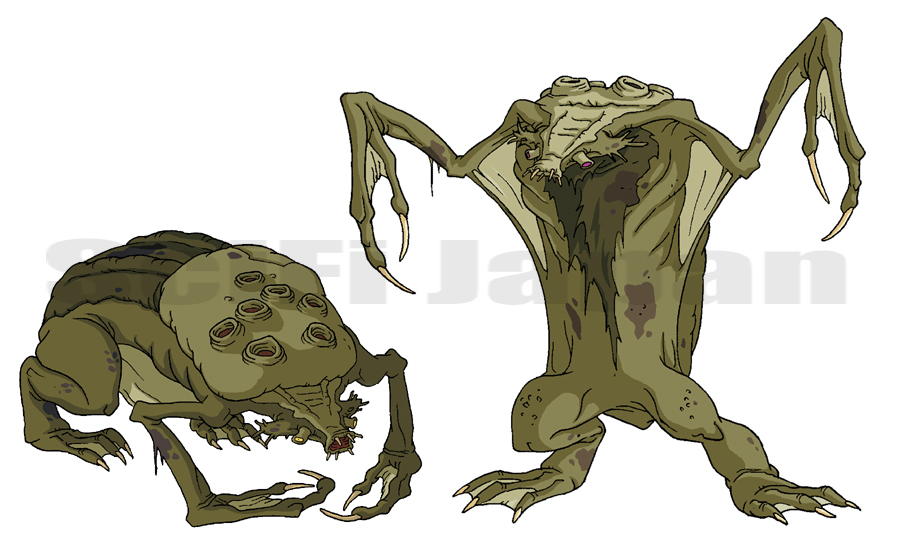 The Swamp Beast comes from the bayous of New Orleans. Photo courtesy of Sony Pictures Family Ent. © 1998 Toho Co., Ltd. /Adelaide Productions, Inc.
The Swamp Beast comes from the bayous of New Orleans. Photo courtesy of Sony Pictures Family Ent. © 1998 Toho Co., Ltd. /Adelaide Productions, Inc.#126: THE BALLAD OF GENS DU MARAIS
Writer: Angel Dean Lopez
Director: Sam Liu
Original FOX Air Date: Unaired
Covering Mardi Gras, Audrey and Animal interview aristocrat Paul Dimanche, whose family is one of the oldest and wealthiest in the French Quarter. When Audrey hears that a boat was bitten by a large creature in the bayou, she calls Nick and the H.E.A.T. team to investigate.
Nick speaks with Georges, an older Cajun fisherman who is one of the Gens du Marais (“The People of the Swamp”), who explains that Dimanche has overfished the bayou, dumped pollutants in the waters, and is trying to drive the people away so that he can claim the bayou and its massive oil deposits. According to Georges, the “Spirit of the Swamp” has taken the form of a Swamp Beast to exact justice on Paul Dimanche.
The Swamp Beast, a gigantic part animal/part vegetable combination of Swamp Thing and the Creature from the Black Lagoon, attacks the Dimanche Fish Cannery. Godzilla tries to stop the monster, but it encases him in mud and disappears into the fog. The Swamp Beast soon reappears and attacks Dimanche’s riverboat on the Mississippi River, then turns its attention to the businessman’s mansion. Much of Dimanche’s property is destroyed when Godzilla returns and battles the Swamp Beast.
After his life is saved by Georges, Dimanche’s admits he has broken laws and bribed politicians… completely unaware he is being filmed by Animal. Its mission accomplished, the Swamp Beast fades into the mist…
Note: There is a scene at the beginning of this episode where H.E.A.T. cleans up residue from an unseen battle between Godzilla and a Giant Sea Anemone. It’s a nice bit that actually shows for the first time that they do have to take responsibility for results of their actions.
THE BALLAD OF GENS DU MARAIS was never broadcast on American television. The episode was publicly shown at the 2001 Asian Fantasy Film Expo in New Jersey.
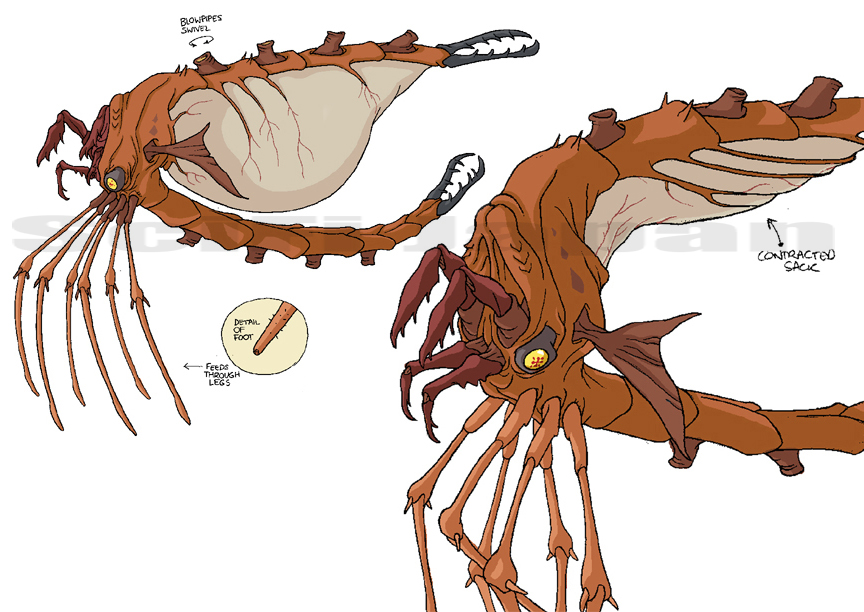 The Fire Monster. Photo courtesy of Sony Pictures Family Ent. © 1998 Toho Co., Ltd. /Adelaide Productions, Inc.
The Fire Monster. Photo courtesy of Sony Pictures Family Ent. © 1998 Toho Co., Ltd. /Adelaide Productions, Inc.#127: RING OF FIRE
Writer: Rodney Gibbs
Director: Brad Rader
Original FOX Air Date: 4/22/00
Exploring a fire-damaged oil platform in the Gulf of Mexico, H.E.A.T. encounters the Fire Monster, a “creature of living flame” that can grow to nearly twice Godzilla’s size.
H.E.A.T. and Godzilla battle this mighty foe, but the creature only gets bigger and more powerful as it absorbs Godzilla’s fiery atomic blasts. They manage to cut off the Fire Monster’s fuel supply and it falls unconscious, shrinking back to the size of an automobile.
Smelling a massive profit in unlocking the secret of the creature’s energy regeneration process, Randy and Craven sneak the dormant core body back to H.E.A.T. headquarters — and nearly burn down all of the Staten Island when the Fire Monster revives.
Note: RING OF FIRE was the last new episode of GODZILLA: THE SERIES to be broadcast on FOX Kids.
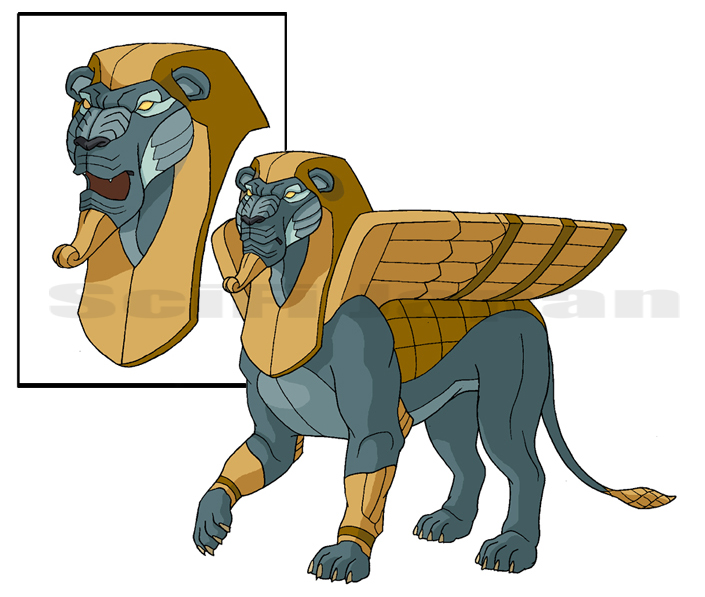 The living statue Norzzug. Photo courtesy of Sony Pictures Family Ent. © 1998 Toho Co., Ltd. /Adelaide Productions, Inc.
The living statue Norzzug. Photo courtesy of Sony Pictures Family Ent. © 1998 Toho Co., Ltd. /Adelaide Productions, Inc.#128: PROTECTOR
Writer: Mark Hoffmeier
Director: Chris Berkeley
Original FOX Air Date: 10/9/99
On the Arabian Peninsula, a team of archeologists led by Professor Abrim Kasam unearth an ancient statue of the flying lion Norzzug, the guardian of the ancient city of Amon-Ra. When restoration specialists spray the statue with an anti-oxidant solution, the iron-skinned creature suddenly comes to life.
The beast terrorizes the Middle East, soaking up every drop of oil in the desert. HEAT discovers that Norzzug had turned on the people of Amon-Ra so they intentionally rusted the statue in order to imprison the beast.
As H.E.A.T. struggles to find a way to reverse the oxidation process, Norzzug attacks with blasts of burning oil. Godzilla takes care of the problem by forcing Norzzug into the sea, where the salt water again rusts the statue solid.
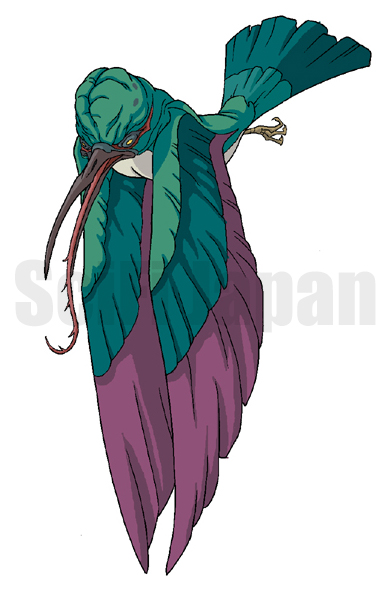 A Giant Mutant Hummingbird. Photo courtesy of Sony Pictures Family Ent. © 1998 Toho Co., Ltd. /Adelaide Productions, Inc.
A Giant Mutant Hummingbird. Photo courtesy of Sony Pictures Family Ent. © 1998 Toho Co., Ltd. /Adelaide Productions, Inc.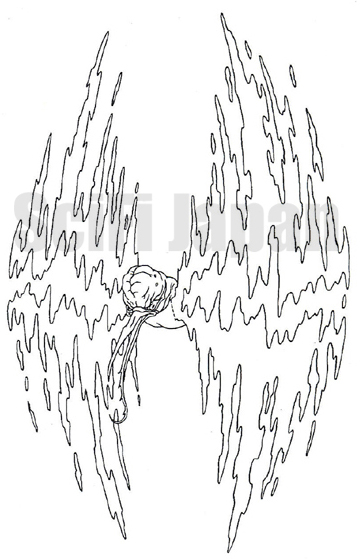 Model sheet of the mirage effect created by the Hummingbird`s wings. © 1998 Toho Co., Ltd./Adelaide Productions, Inc.
Model sheet of the mirage effect created by the Hummingbird`s wings. © 1998 Toho Co., Ltd./Adelaide Productions, Inc.#129: VISION
Writer: Carl Ellsworth
Director: Sam Liu
Original FOX Air Date: 3/18/00
Over San Francisco, a military jet comes under attack from a strange, wavy-lined mirage that suddenly takes the physical form of a Giant Mutant Hummingbird.
When H.E.A.T. investigates, they discover a species of hummingbirds which are invisible to the naked eye due to wings made of shiny wires that reflect light like thousands of mirrors. Eventually the team finds out that pollution of the redwood forest has led to this mutation, and that the Giant Mutant Hummingbirds feed on toxic engine emissions.
Craven and Randy team-up to build a special visor for Godzilla to wear in order to see and destroy these invisible enemies.
Note: VISION features the previously unused goggle design that had been initally planned as a recurring prop in GODZILLA: THE SERIES.
The episode also has an amusing subplot in which Randy sneaks a look at Craven’s email and mistakenly thinks that Craven is dying. He becomes excruciatingly nice to Craven and does all he can to make his remaining days comfortable, much to the confusion of the healthy scientist.
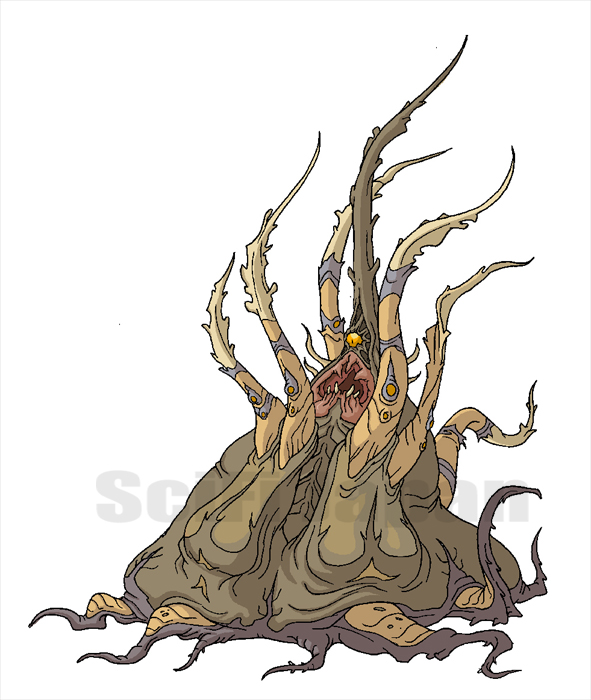 The mutant anemone called Medua draws all the fluid from its prey. Photo courtesy of Sony Pictures Family Ent. © 1998 Toho Co., Ltd./Adelaide Productions, Inc.
The mutant anemone called Medua draws all the fluid from its prey. Photo courtesy of Sony Pictures Family Ent. © 1998 Toho Co., Ltd./Adelaide Productions, Inc.#130: FREAK SHOW
Writer: Steve L. Hayes
Director: Nathan Chew
Original FOX Air Date: 12/11/99
A slick promoter named Tobias Wilson comes to New York City with his “Mutant Mania” Circus. But during a performance, a giant sea anemone named Medusa escapes from her tank and onto the streets of the city. Medusa lashes out with her 150-foot long poisonous tentacles, paralyzing victims and draining the fluid from their bodies. H.E.A.T. discovers the creature’s metabolism is fueled by the electrolytes found in water. As Medusa begins soaking up New York’s water supply, the realization hits that the giant anemone could potentially drink all the water on the planet.
When conventional weapons prove useless in stopping the creature, Godzilla is called in to save the day. But Medusa lashes at Godzilla with her tentacles and quickly drains all the water from his body. Major Hicks orders the US military to save Godzilla by using tanks to push the monster into the water and rehydrate him. Once back to health, Godzilla blasts Medusa with atomic fire and liquefies her. H.E.A.T. uses oil skimming equipment to mop up Medusa and contain her for good.
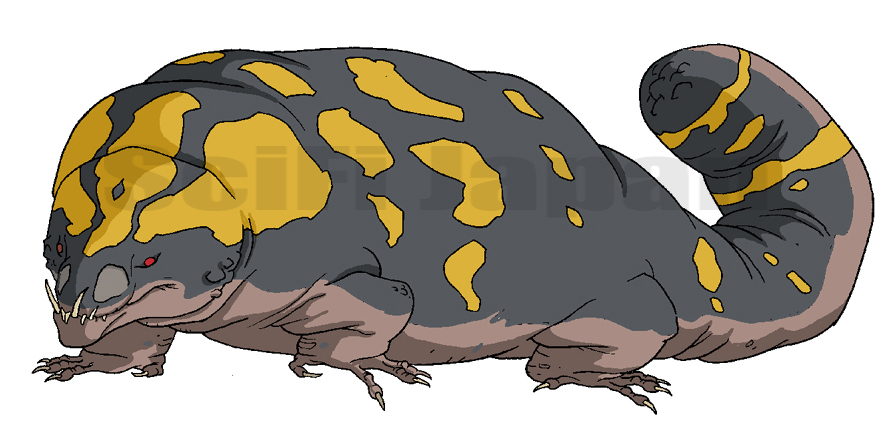 A Giant Gila Monster; one of the many creatures on display at the `Mutant Mania` circus. Photo courtesy of Sony Pictures Family Ent. © 1998 Toho Co., Ltd./Adelaide Productions, Inc.
A Giant Gila Monster; one of the many creatures on display at the `Mutant Mania` circus. Photo courtesy of Sony Pictures Family Ent. © 1998 Toho Co., Ltd./Adelaide Productions, Inc.Note: This is a very good, classic style monster-on-the-loose episode.
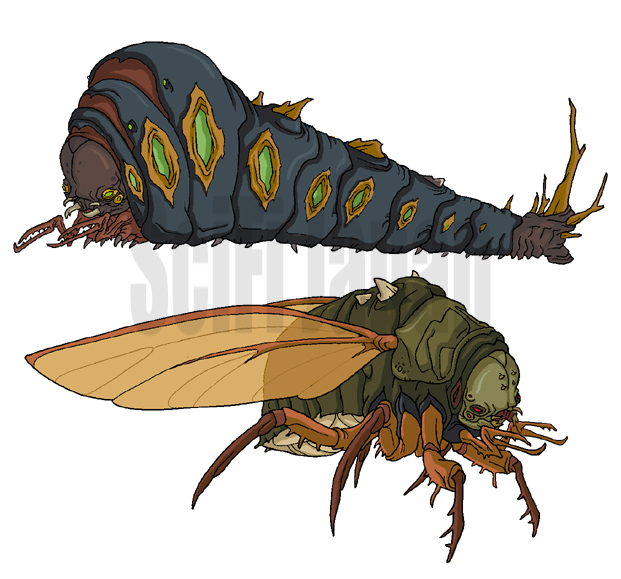 The Megapede becomes the Giant Cicada. Photo courtesy of Sony Pictures Family Ent. © 1998 Toho Co., Ltd./Adelaide Productions, Inc.
The Megapede becomes the Giant Cicada. Photo courtesy of Sony Pictures Family Ent. © 1998 Toho Co., Ltd./Adelaide Productions, Inc.#131: METAMORPHOSIS
Writer: George Melrod
Director: Alan Caldwell
Original FOX Air Date: 1/29/00
An anonymous donor gives HEAT a five million dollar grant, but the windfall triggers bickering over just how the money should be spent.
Megapede, a gigantic centipede with sharply barbed legs and stinging spurs, tears a path of destruction through the Midwest. H.E.A.T. and Godzilla arrive to battle the big bug at the Indiana State Fair, but discover that the creature fires toxic foam and poisonous barbs that take a toll on Godzilla.
Megapede disappears into a maze of underground tunnels. When H.E.A.T. tracks it down, they discover the centipede has undergone a metamorphosis into the massive Giant Cicada.
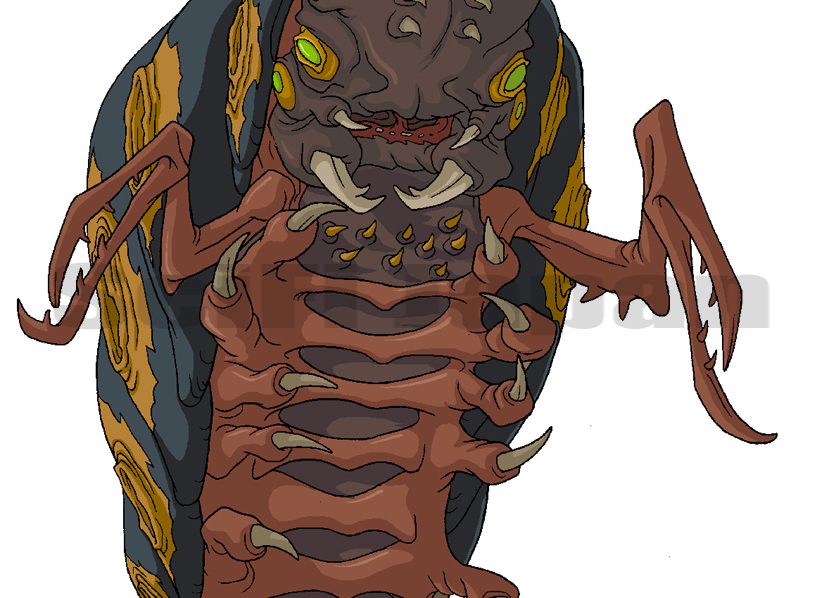 A close-up look at the Megapede. Photo courtesy of Sony Pictures Family Ent. © 1998 Toho Co., Ltd./Adelaide Productions, Inc.
A close-up look at the Megapede. Photo courtesy of Sony Pictures Family Ent. © 1998 Toho Co., Ltd./Adelaide Productions, Inc.The Giant Cicada pops up in Chicago, and is able to produce a shrill, high-pitched song that shatters windows and disrupts radar and telecommunications. H.E.A.T. manages to silence the creature by spraying it with insulating foam as it perches atop John Hancock Tower… then Godzilla steps in, tears down the building, and destroys the insect.
Note: The Giant Cicada and its multi-stage life cycle are a clear homage to Mothra.
 Ts-eh-GO was named after the Navajo word for scorpion. Photo courtesy of Sony Pictures Family Ent. © 1998 Toho Co., Ltd./Adelaide Productions, Inc.
Ts-eh-GO was named after the Navajo word for scorpion. Photo courtesy of Sony Pictures Family Ent. © 1998 Toho Co., Ltd./Adelaide Productions, Inc.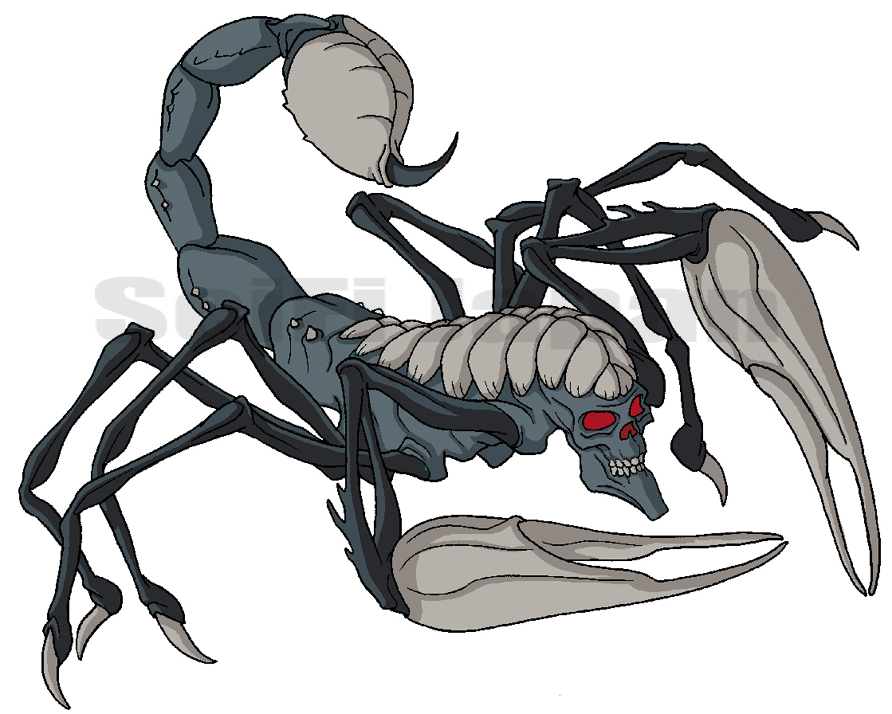 The Nightmare Scorpion from Randy's fever dream. Photo courtesy of Sony Pictures Family Ent. © 1998 Toho Co., Ltd./Adelaide Productions, Inc.
The Nightmare Scorpion from Randy's fever dream. Photo courtesy of Sony Pictures Family Ent. © 1998 Toho Co., Ltd./Adelaide Productions, Inc.#132: WHERE IS THY STING?
Writer: William Stout
Director: Frank Squillace
Original FOX Air Date: 2/26/00
At Fort Armstrong, New Mexico, Colonel Charles Tarrington has been experimenting with genetic mutations as a weapon for the government. The “First Wave” program has resulted in Ts-eh-GO, a giant scorpion with poisonous claws and a tail that spits out acid, while the “Second Wave” has created an army of dog-sized scorpions.
Sensing the new mutations, Godzilla heads to the desert with Major Hicks and H.E.A.T. in hot pursuit.
Tarrington wants no interference with his plans, so he arrests H.E.A.T. and accuses Hicks of being too soft on Godzilla. But the colonel must change his tune when Ts-eh-Go and the Second Wave scorpions go on a rampage, and Godzilla becomes the only hope of stopping the monsters.
He admits his mistakes to Hicks, then immediately orders the “Third Wave” into production.
Note: Writer William Stout is the author and artist of the acclaimed book The New Dinosaurs. He has also provided production art and storyboards for the films CONAN THE BARBARIAN (1982), FIRST BLOOD (1982), CONAN THE DESTROYER (1984), RETURN OF THE LIVING DEAD (1985), MASTERS OF THE UNIVERSE (1987), and the unmade GODZILLA: KING OF THE MONSTERS IN 3-D.
Guest voice actor Michael Chiklis is currently the star of the hit FX television series THE SHIELD. He also played Curly Howard in the TV biopic THE THREE STOOGES (2000), Chihiro’s father in the Disney dub of SPIRITED AWAY (2001), and Ben Grimm/the Thing in the movie FANTASTIC FOUR (2005).
WHERE IS THY STING? is available on DVD as part of the GODZILLA: THE SERIES - MUTANT MADNESS collection.
The name Ts-eh-GO is based on the Navajo word for “the Scorpion”.
#133: UNDERGROUND MOVEMENT
Writer: Marsha F. Griffin
Director: Sam Liu
Original FOX Air Date: 4/1/00
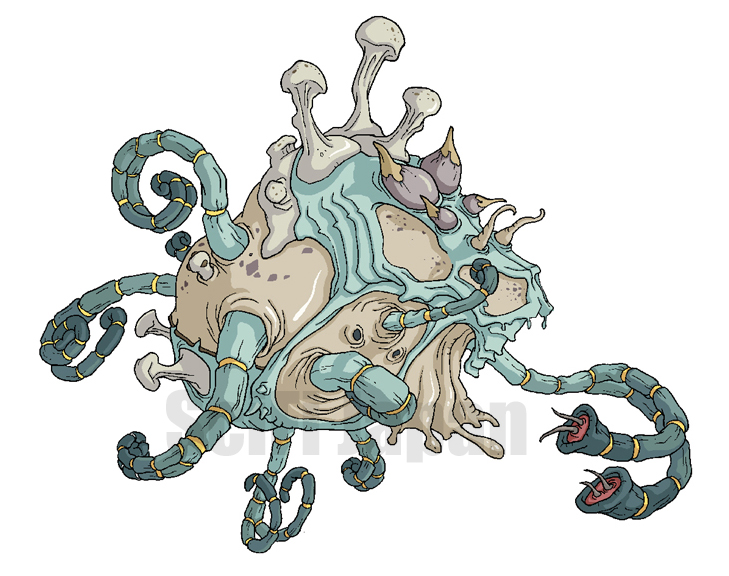 The mutant fungus Armillaria. Photo courtesy of Sony Pictures Family Ent. © 1998 Toho Co., Ltd. /Adelaide Productions, Inc.
The mutant fungus Armillaria. Photo courtesy of Sony Pictures Family Ent. © 1998 Toho Co., Ltd. /Adelaide Productions, Inc.H.E.A.T. is sued by the City of Miami Beach for damages they caused while fighting a Giant Mutant Vampire Bat. Nick, Elsie and Monique accompany Nick’s lawyer Ray Valdes to the preliminary hearing in Miami, while Randy and Craven are told to stay in New York and keep an eye on things. But when Randy gets word that Armillaria, an underground-dwelling mutant parasitic fungus with miles of tentacles, is destroying farmland and threatening lives in Michigan, he convinces Craven that the two of them can handle this emergency alone.
Unfortunately, the two are attacked by the fungus and left stranded in the middle of the wilderness with no food, no supplies, and no way to communicate with the outside world. Amazingly, Craven and Randy become “macho men” survivalists who manage to prosper until Nick and the others arrive.
Armillaria is defeated when Godzilla digs up the mutation and throws it into a vast area of sand dunes, a place void of all food sources. In the end, H.E.A.T. learns the lawsuit has been thrown out.
 The Shrewster was the rare mutation that was faster than Godzilla. Photo courtesy of Sony Pictures Family Ent. © 1998 Toho Co., Ltd./Adelaide Productions, Inc.
The Shrewster was the rare mutation that was faster than Godzilla. Photo courtesy of Sony Pictures Family Ent. © 1998 Toho Co., Ltd./Adelaide Productions, Inc.#134: THE TWISTER
Writers: Lara Runnels and Patti Carr D
irector: Andy Thom
Original FOX Air Date: 2/12/00
An accident at a power plant mutates a small shrew into a giant ravenous beast surrounded by a swirling twister which it uses to devour everything in its path. Dubbed “The Shrewster” by Randy, the beast tears through several oceanfront locations before it is driven off by Godzilla.
H.E.A.T. devises a machine to counteract the Shrewster’s wind funnel. They attempt to use it against the monster when it returns and attacks New York City, but Nick is sucked into the twister before the device can be activated.
As the Shrewster heads for a crowded reggae concert in Central Park, Nick is able to turn on the machine from inside the swirling chaos. The twister dissipates, revealing the mutated rodent inside, but now Godzilla and Nick must contend with an incredibly fast – and hungry – foe.
Note: One of Devlin and Emmerich’s key marketing points for the film GODZILLA was that their Godzilla could run at speeds up to 200 mph, and this show spun that concept by having the monster face a much faster opponent. The Shrewster makes a return engagement in CASH OF THE TITANS, the final episode of the series.
THE TWISTER is on the GODZILLA: THE SERIES - MUTANT MADNESS DVD.
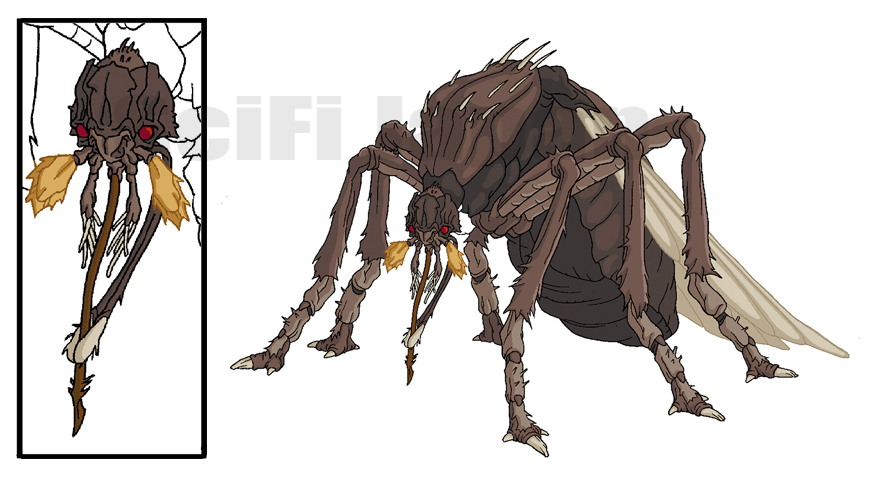 Skeetera absorbs the powers and abilities of the creatures she feeds upon. Photo courtesy of Sony Pictures Family Ent© 1998 Toho Co., Ltd. /Adelaide Productions, Inc.
Skeetera absorbs the powers and abilities of the creatures she feeds upon. Photo courtesy of Sony Pictures Family Ent© 1998 Toho Co., Ltd. /Adelaide Productions, Inc.#135: S.C.A.L.E.
Writer: Scott Lobdell
Director: Chris Berkeley
Original FOX Air Date: 10/2/99
In Miami, Godzilla, H.E.A.T., and Major Hicks battle Skeetera, a mutated bloodsucking mosquito-like insect who adapts the powers of the creatures she feeds on. As they attempt to contain the creature they are interrupted by the mutation rights fringe group known as S.C.A.L.E. (Servants of Creatures Arriving Late to Earth). Led by the beautiful but fanatical Alexandra Springer, S.C.A.L.E. believes that monsters are the next wave of evolution and should be protected at all costs.
After capturing Skeetera, HEAT agrees to accompany Hicks to Monster Island, a secret government holding area for captive mutations that was established in the wake of the “Monster Wars”. Looking for a story, Audrey and Animal stow away on the trip. But they get a bigger scoop than they were hoping for when S.C.A.L.E. infiltrates the facility and releases Skeetera, Crustaceous Rex, King Cobra, and the Giant Bat.
It’s a race against time for H.E.A.T., Hicks, and the military to stop the extremists and regain control of the island while Godzilla uses his own methods to prevent the monsters from escaping to menace the outside world again.
Note: Easily one of the best episodes of GODZILLA: THE SERIES, the show was told entirely through the perspective of cameras. Every shot in the episode is either from Animal’s news camera or the security cams on Monster Island; a great concept that resulted in a very unique show.
Comic book fans would know writer Scott Lobdell from his work on X-Men and Wildcats.
Another recognizable guest would be EXORCIST (1973) star Linda Blair, who provides the voice of Alexandra Springer for this episode. Blair’s film credits include AIRPORT 1975 (1974), EXORCIST II: THE HERETIC (1977), HELL NIGHT (1981), and CHAINED HEAT (1983).
S.C.A.L.E. was publicly shown for the first time anywhere as part of a GODZILLA: THE SERIES presentation at G-Fest 1999 in Burbank, CA. It is now available on DVD as part of the GODZILLA: THE SERIES - MUTANT MADNESS collection.
In initial treatments for the episode, Springer’s group was called “Fist of Godzilla”. That moniker was dropped before the final draft of the script was written, but was still mistakenly included in early publicity material for the series and led to the incorrect title being used for the packaging of the recent DVD release.
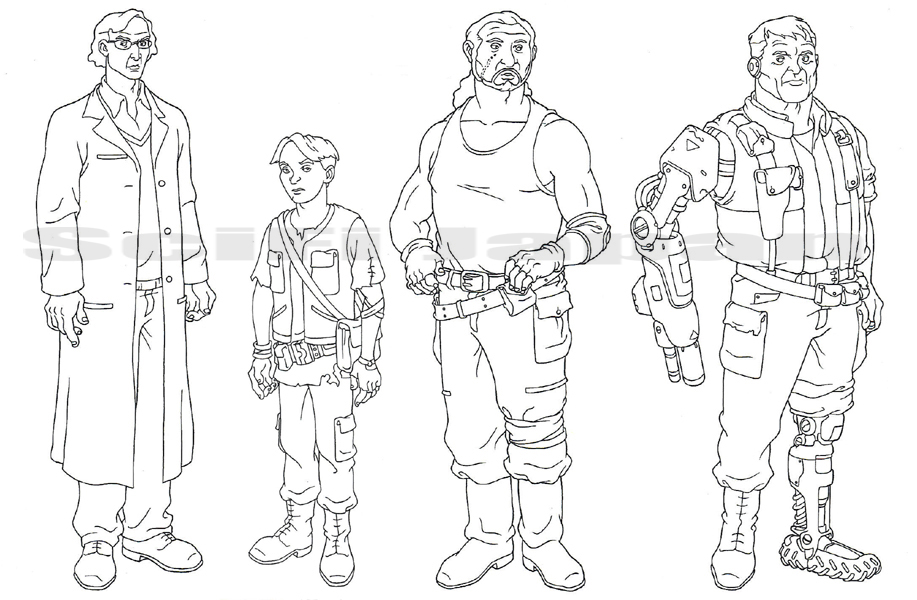 The supporting cast of FUTURE SHOCK; Dr Jonathan Insley, KD Palotti, and future versions of Craven and Hicks. © 1998 Toho Co., Ltd./Adelaide Productions, Inc.
The supporting cast of FUTURE SHOCK; Dr Jonathan Insley, KD Palotti, and future versions of Craven and Hicks. © 1998 Toho Co., Ltd./Adelaide Productions, Inc.
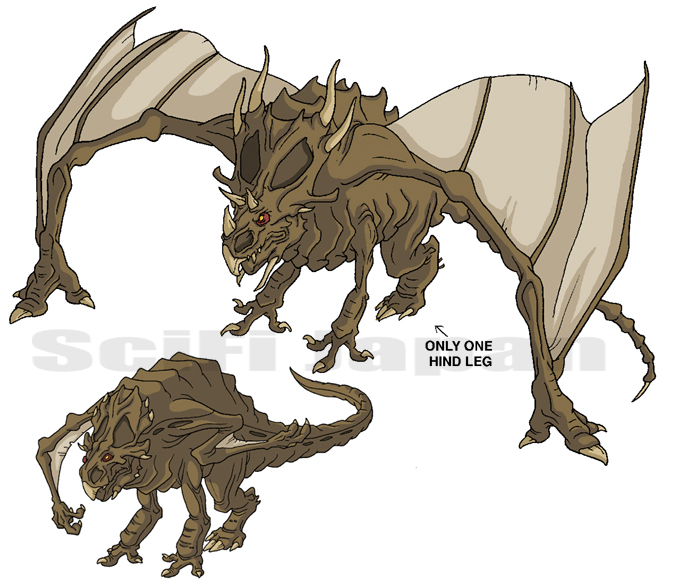 A prototype Dragma and the full-grown adult. Photo courtesy of Sony Pictures Family Ent© 1998 Toho Co., Ltd./Adelaide Productions, Inc.
A prototype Dragma and the full-grown adult. Photo courtesy of Sony Pictures Family Ent© 1998 Toho Co., Ltd./Adelaide Productions, Inc.#136: FUTURE SHOCK
Writers: Greg Klein and Tom Pugsley
Director: Alan Caldwell
Original FOX Air Date: 9/18/99
While Craven is laid up sick back at H.E.A.T. headquarters, Nick, Randy, Elsie and Monique assist Godzilla in a battle with a Mutant Jellyfish. The Heat-Seeker is engulfed by a mysterious storm which propels the team into a bleak, post-apocalyptic future where Godzilla is dead and the world is dominated by genetically engineered, 5-legged mutations known as Dragmas.
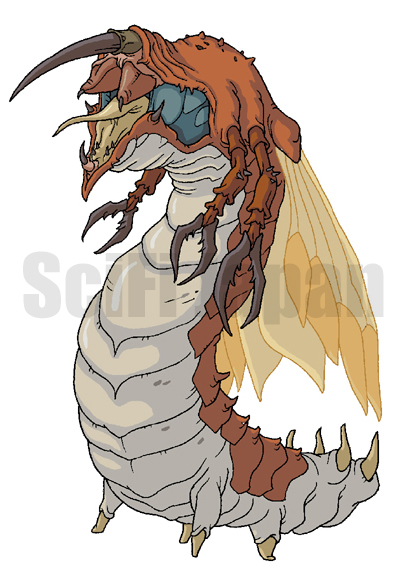 The Mutant Jellyfish. Photo courtesy of Sony Pictures Family Ent. © 1998 Toho Co., Ltd. /Adelaide Productions, Inc.
The Mutant Jellyfish. Photo courtesy of Sony Pictures Family Ent. © 1998 Toho Co., Ltd. /Adelaide Productions, Inc.H.E.A.T. teams up with the human resistance against the Dragmas… a group led by an older, rugged version of Craven. Alongside Animal’s 10 year-old son KD and the bionic-limbed Hicks, H.E.A.T. has several harrowing encounters with the monsters. They are finally able to return to the past via the same “time storm”.
Taking a page from the TERMINATOR films, H.E.A.T. decides they must stop a scientist named Dr Jonathan Insley before he creates the Dragmas. But Insley, the Ted Kaczinsky-like founder and president of American Technologies, has already begun the “Democratic Resurgence Against a Global Mechanized Armageddon” program to save mankind from technological advancement.
When H.E.A.T. arrives at his laboratory, Insley unleashes smaller, early versions of the Dragma mutations. With Godzilla’s help, H.E.A.T. is able to defeat the monsters and save the future.
Note: FUTURE SHOCK was used for the 2nd season premiere of GODZILLA: THE SERIES.
Guest actress Pamela Segall has had dozens of credits for television and animation. Following GODZILLA, she played "Rusty" in Sony`s BIG GUY AND RUSTY THE BOY ROBOT (1999), but is best known as "Bobby Hill" on the series KING OF THE HILL (1997).
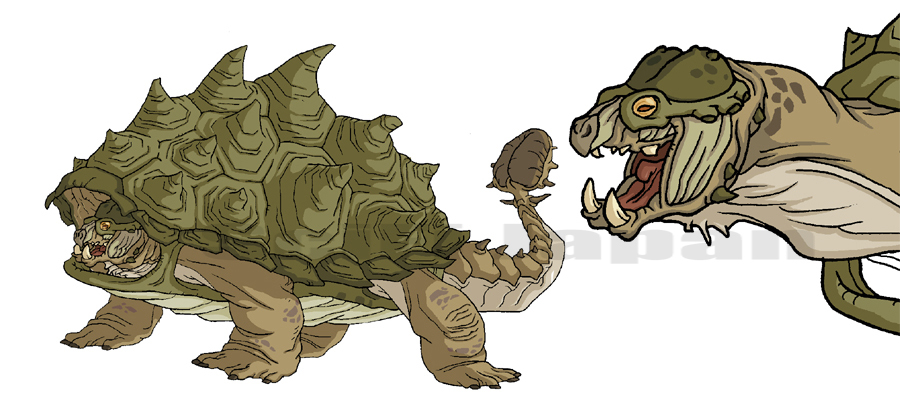 Don`t call him Gamera, because the Giant Turtle is nobody`s friend. Photo courtesy of Sony Pictures Family Ent.© 1998 Toho Co., Ltd./Adelaide Productions, Inc.
Don`t call him Gamera, because the Giant Turtle is nobody`s friend. Photo courtesy of Sony Pictures Family Ent.© 1998 Toho Co., Ltd./Adelaide Productions, Inc.
#137: END OF THE LINE
Writer: Steve Melching
Directors: Frank Sqiullace and David Hartman
Original FOX Air Date: 12/18/99
While on a romantic cruise in Alaska, Nick and Audrey’s ship is attacked by a Giant Turtle. The pair wind up on a deserted island where they once again encounter the Giant Turtle. This time they are saved by Komodithrax, a huge mutant Komodo dragon.
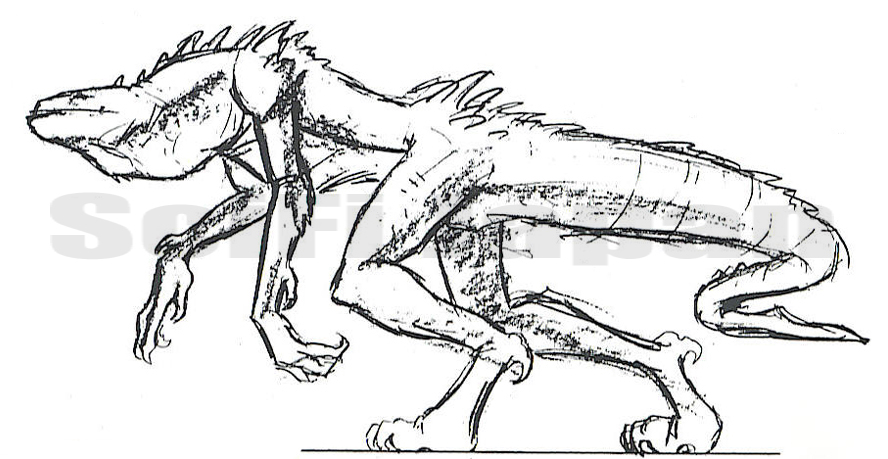 Komodithrax was originally planned to be a female Godzilla. Photo courtesy of Sony Pictures Family Ent. © 1998 Toho Co., Ltd./Adelaide Productions, Inc.
Komodithrax was originally planned to be a female Godzilla. Photo courtesy of Sony Pictures Family Ent. © 1998 Toho Co., Ltd./Adelaide Productions, Inc.Meanwhile, Godzilla is on the move to Alaska and the rest of H.E.A.T. trails the monster to the island and make an amazing discovering. Godzilla and Komodithrax appear to be a couple… and there’s a giant egg in their nest!
Hicks arrives with orders to launch an air strike on all the monsters on the island. It’s now up to H.E.A.T. and Godzilla to protect Komodithrax and their unborn young while defeating the Giant Turtle.
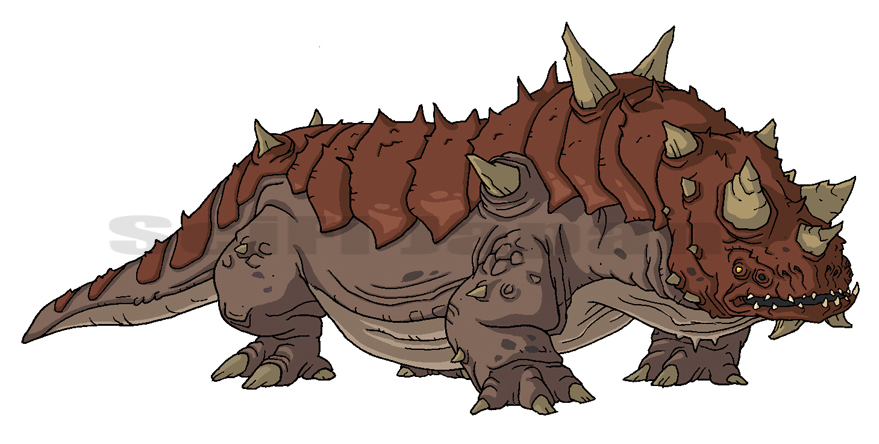 The Thorny Devil`s armored plating could resist Godzilla`s radioactive fire. Photo courtesy of Sony Pictures Family Ent.© 1998 Toho Co., Ltd. /Adelaide Productions, Inc.
The Thorny Devil`s armored plating could resist Godzilla`s radioactive fire. Photo courtesy of Sony Pictures Family Ent.© 1998 Toho Co., Ltd. /Adelaide Productions, Inc.#138: AREA 51
Writer: Jeff Wynne
Director: Alan Caldwell
Original FOX Air Date: 2/5/00
H.E.A.T. investigates the legendary “Area 51” in Nevada and discovers its true secret is not alien landings, but giant mutated desert creatures created by decades of underground nuclear testing. By claiming that there are no aliens in Area 51, though correct, the military only serves to perpetuate the myth and protests and draw attention to the facility.
H.E.A.T. teams with the tough but extremely attractive Dr Candace Kirk in order to defeat the Thorny Devil, a dangerous lizard mutation with giant razor-sharp spikes protruding from its spiny body. Randy hits it off with Candace as Monique tries to hide her jealousy.
With Godzilla’s help, Candace and H.E.A.T. keep the Thorny Devil from escaping Area 51 and destroying nearby Las Vegas.
Note: Doug Savant, who played the bumbling Sgt. O’Neal in the movie GODZILLA, adds his voice to this episode as a different character. Savant was a regular on the long-running primetime soap MELROSE PLACE, and he can currently be seen on the hit DESPERATE HOUSEWIVES.
Be sure to listen for Nick’s classic line, “Destroy all monsters. We’re familiar with THAT philosophy!”
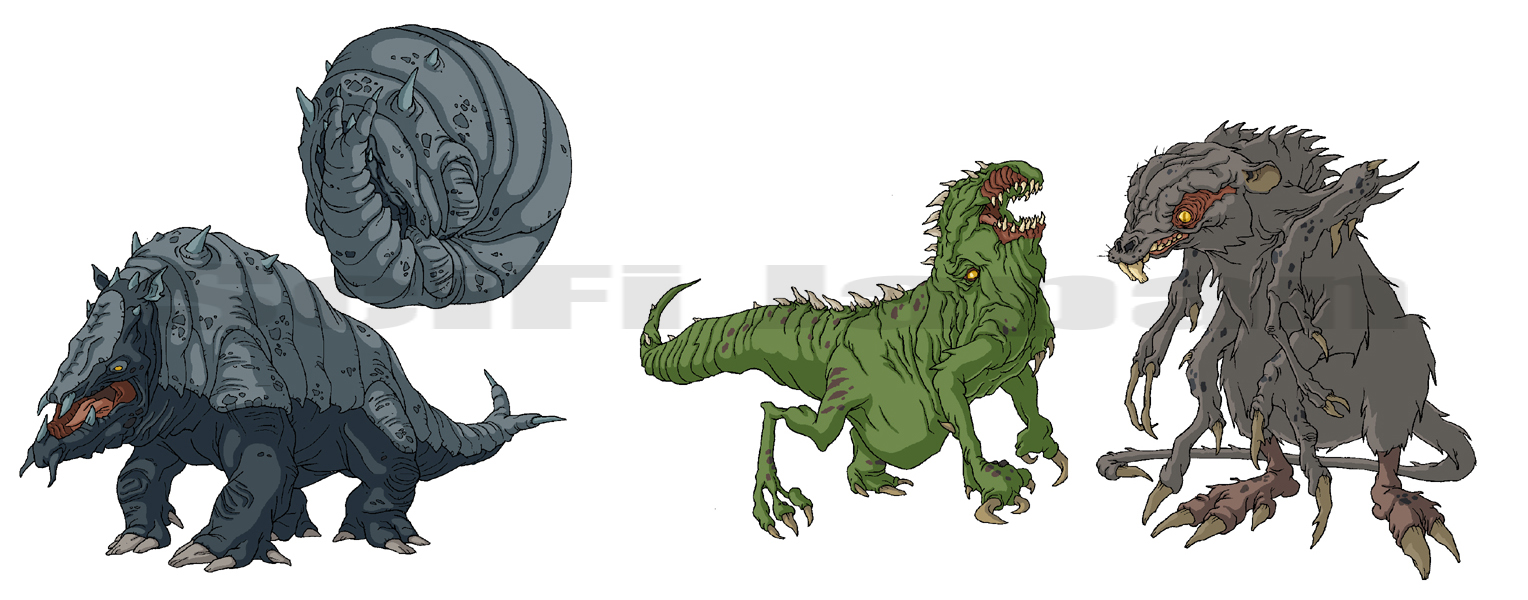 The creatures at Area 51 include the Giant Armadillo and the smaller Desert Lizard and Desert Rat Mutations. Photo courtesy of Sony Pictures Family Ent. © 1998 Toho Co., Ltd./Adelaide Productions, Inc.
The creatures at Area 51 include the Giant Armadillo and the smaller Desert Lizard and Desert Rat Mutations. Photo courtesy of Sony Pictures Family Ent. © 1998 Toho Co., Ltd./Adelaide Productions, Inc.
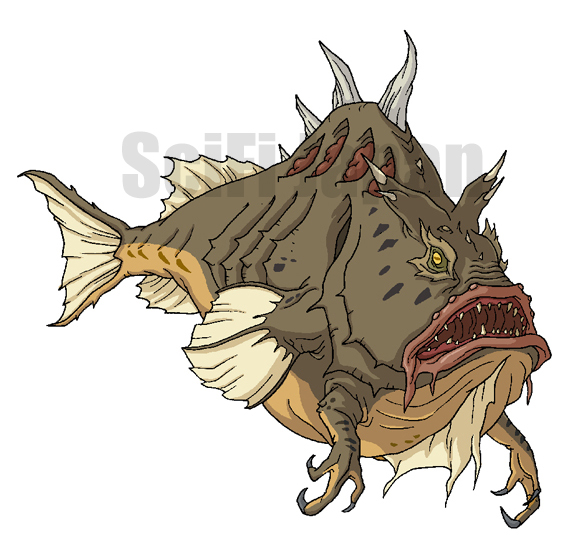 The aggressive Deep-Dweller is a giant mutated frogfish. Photo courtesy of Sony Pictures Family Ent. © 1998 Toho Co., Ltd. /Adelaide Productions
The aggressive Deep-Dweller is a giant mutated frogfish. Photo courtesy of Sony Pictures Family Ent. © 1998 Toho Co., Ltd. /Adelaide Productions#139: TOURIST TRAP
Writer: Marty Isenberg
Director: Nathan Chew
Original FOX Air Date: Unaired
Off the New Jersey coast, H.E.A.T. encounters the Deep-Dweller, a giant frogfish that has wandered into shallow waters. As the team struggles to contend with a mutation with enormous shark-like jaws and the speed and aggression of a piranha, they are constantly confounded by an obnoxious tour boat captain. Milo Sanders, a slimy opportunist, is the owner and operator of Manhattan Monster Liner Tours, a sleazy tour boat offering passengers and up-close look at Godzilla and other monsters.
In his quest for riches and glory, Sanders sneaks aboard the Heat-Seeker and videotapes vital information about HEAT and Godzilla, only to be caught in the act by Audrey and Animal. With Godzilla’s help, H.E.A.T. is able to drive the Deep-Dweller away into much deeper waters.
Note: Milo Sanders was played by actor and comedian Stuart Pankin, who has appeared on HANGAR 18 (1980), NOT NECESSARILY THE NEWS (1983), FATAL ATTRACTION (1987), ARACHNAPHOBIA (1990), MANNEQUIN 2: ON THE MOVE (1991), STRIPTEASE (1996), and dozens of TV series. Pankin may be best known as the voice of ‘Earl Sinclair’ on the Henson television series DINOSAURS (1991).
While this episode was never broadcast on television, it was shown to an audience at the 2001 Asian Fantasy Film Expo in New Jersey.
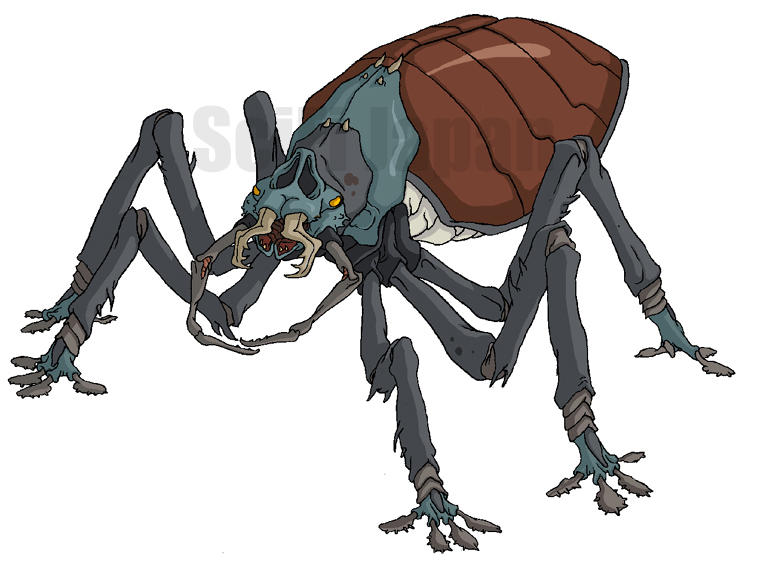 The Giant Water Beetle can exhale a noxious tear gas. Photo courtesy of Sony Pictures Family Ent. © 1998 Toho Co., Ltd. /Adelaide Productions
The Giant Water Beetle can exhale a noxious tear gas. Photo courtesy of Sony Pictures Family Ent. © 1998 Toho Co., Ltd. /Adelaide Productions#140: CASH OF THE TITANS
Writer: Andrew Deutsch
Director: Sean Song
Original FOX Air Date: 9/25/99
Shady promoter Maximillian Spiel entertains wealthy ticket holders with a series of “cage matches” between giant mutations like the Shrewster and the Giant Centipede. For his next bout, Spiel sets his sights on the “ultimate monster”… Godzilla.
Spiel sends one of his creatures, the Giant Water Beetle, to distract H.E.A.T. while his men kidnap Godzilla and transport the monster to his private island. H.E.A.T. follows, and Audrey and Animal tag along for the exclusive.
Nick, Monique, Randy and Elsie sneak into the stadium, but they’re quickly caught and thrown into the “ring” with Godzilla. The struggle to stay alive as Godzilla battles the Giant Water Beetle and Rhinosaurus, a mutant rhino genetically engineered by Cameron Winter’s company.
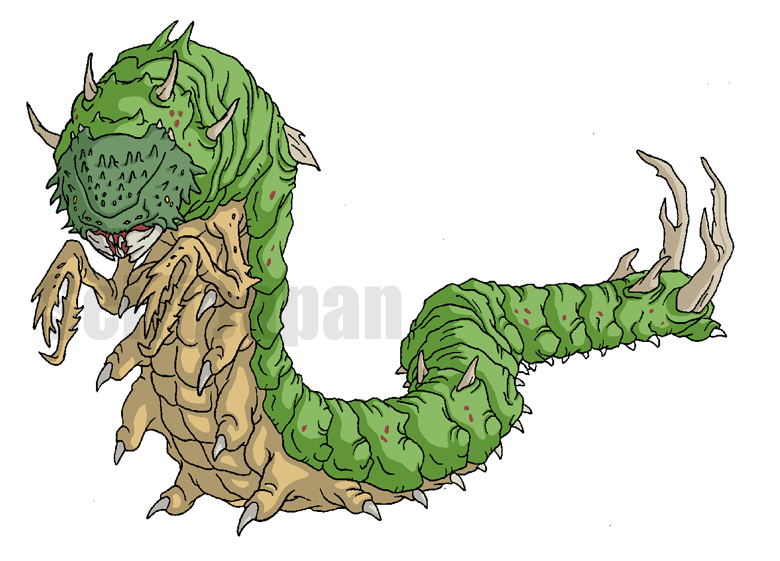 The Giant Centipede battled the Shrewster from THE TWISTER. Photo courtesy of Sony Pictures Family Ent. © 1998 Toho Co., Ltd. /Adelaide Productions
The Giant Centipede battled the Shrewster from THE TWISTER. Photo courtesy of Sony Pictures Family Ent. © 1998 Toho Co., Ltd. /Adelaide ProductionsCraven cobbles together a device that disrupts Spiel’s control systems. Godzilla defeats the two monsters, and Spiel is captured.
Later Nick and Audrey leave for a date. Elsie thanks Craven for saving her life and gives the stunned scientist a kiss. Randy feels unloved, so Monique grabs him for a quick kiss before walking away.
Note: The episode features Clancy Brown in the role of Maximillian Spiel. Brown played ‘Kurgan’ in the original HIGHLANDER (1986), and had key roles in SHAWSHANK REDEMPTION (1994), STARSHIP TROOPERS (1997), THE HURRICANE (1999) and CARNIVALE (2005). He is also a popular voice actor, having worked on POM POKO (1994), as ‘Lex Luthor’ in SUPERMAN (1996), ROUGHNECKS: THE STARSHIP TROOPERS CHRONICLES (1999), BIG GUY AND RUSTY (1999), JACKIE CHAN ADVENTURES (2000), SPONGEBOB SQUAREPANTS (2002), JUSTICE LEAGUE (2002), and the upcoming CONAN: RED NAILS (2007).
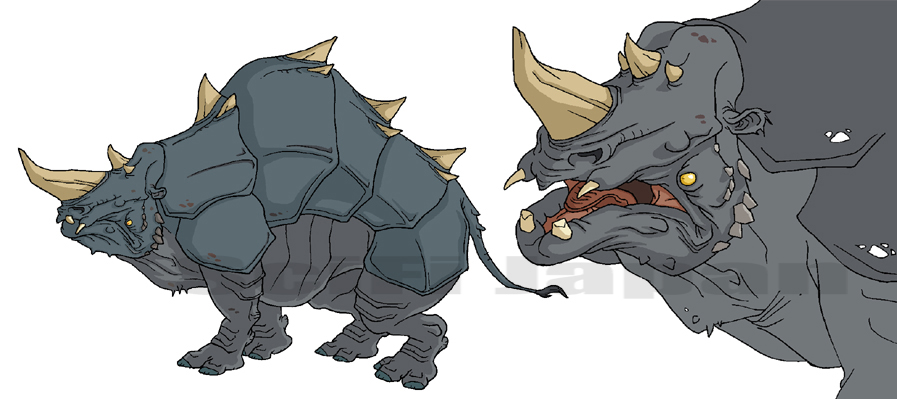 The genetically engineered fighting machine, Rhinosaurus. Photo courtesy of Sony Pictures Family Ent. © 1998 Toho Co., Ltd. /Adelaide Productions
The genetically engineered fighting machine, Rhinosaurus. Photo courtesy of Sony Pictures Family Ent. © 1998 Toho Co., Ltd. /Adelaide ProductionsWhile CASH OF THE TITANS brings a resolution to some of the character relationships, the show does not provide an actual ending to the series but leaves it wide open for an endless succession of repeats.



